Pyrimidine compounds as serotonin receptor modulators
Dvorak , et al. December 31, 2
U.S. patent number 8,618,288 [Application Number 12/557,661] was granted by the patent office on 2013-12-31 for pyrimidine compounds as serotonin receptor modulators. This patent grant is currently assigned to Janssen Pharmaceutica NV. The grantee listed for this patent is Curt A. Dvorak, Dale A. Rudolph, Brock T. Shireman. Invention is credited to Curt A. Dvorak, Dale A. Rudolph, Brock T. Shireman.




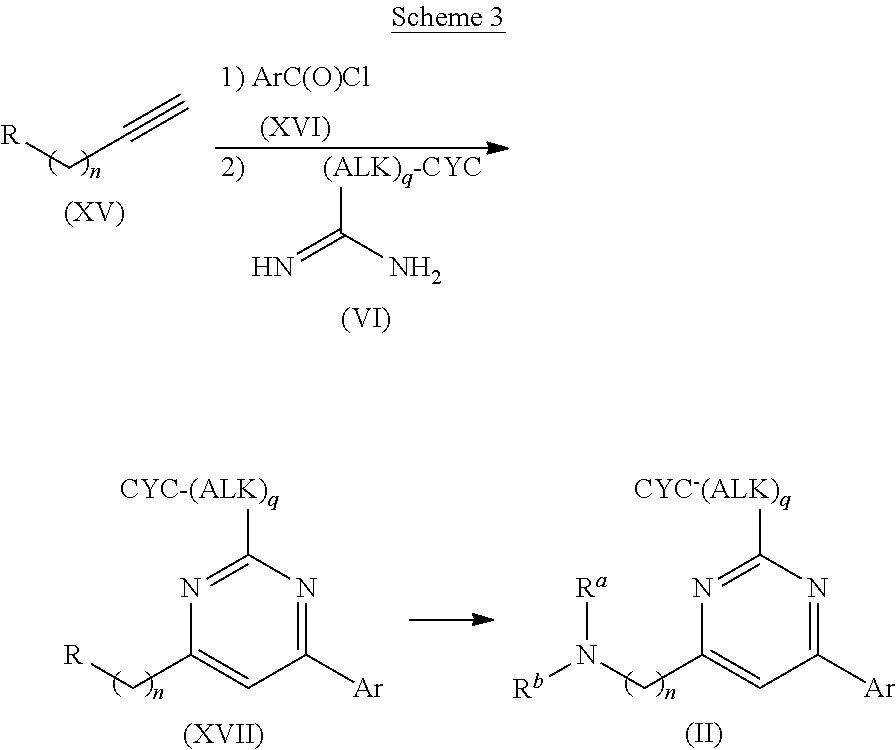







View All Diagrams
| United States Patent | 8,618,288 |
| Dvorak , et al. | December 31, 2013 |
| **Please see images for: ( Certificate of Correction ) ** |
Pyrimidine compounds as serotonin receptor modulators
Abstract
Certain pyrimidine-containing compounds are serotonin receptor modulators useful in the treatment of serotonin-mediated diseases.
| Inventors: | Dvorak; Curt A. (San Diego, CA), Rudolph; Dale A. (San Diego, CA), Shireman; Brock T. (San Diego, CA) | ||||||||||
|---|---|---|---|---|---|---|---|---|---|---|---|
| Applicant: |
|
||||||||||
| Assignee: | Janssen Pharmaceutica NV
(Beerse, BE) |
||||||||||
| Family ID: | 34526458 | ||||||||||
| Appl. No.: | 12/557,661 | ||||||||||
| Filed: | September 11, 2009 |
Prior Publication Data
| Document Identifier | Publication Date | |
|---|---|---|
| US 20100016281 A1 | Jan 21, 2010 | |
Related U.S. Patent Documents
| Application Number | Filing Date | Patent Number | Issue Date | ||
|---|---|---|---|---|---|
| 11924277 | Oct 25, 2007 | 7579470 | |||
| 60705719 | Aug 4, 2005 | ||||
| Current U.S. Class: | 544/242; 544/253 |
| Current CPC Class: | A61P 15/00 (20180101); A61P 25/18 (20180101); A61P 25/00 (20180101); A61P 15/10 (20180101); A61P 25/24 (20180101); A61P 25/06 (20180101); A61P 1/14 (20180101); A61P 3/00 (20180101); A61P 9/10 (20180101); A61P 3/04 (20180101); A61P 25/20 (20180101); C07D 487/04 (20130101); A61P 25/30 (20180101); A61P 27/02 (20180101); A61P 27/06 (20180101); A61P 3/10 (20180101); A61P 1/12 (20180101); A61P 25/04 (20180101); A61P 9/12 (20180101); A61P 1/04 (20180101); A61P 25/32 (20180101); A61P 13/12 (20180101); A61P 29/00 (20180101); A61P 5/00 (20180101); A61P 25/22 (20180101) |
| Current International Class: | C07D 239/02 (20060101); C07D 239/70 (20060101) |
| Field of Search: | ;544/242,253 |
References Cited [Referenced By]
U.S. Patent Documents
| 3248395 | April 1966 | Ohnacker et al. |
| 3312716 | April 1967 | Biel et al. |
| 3969355 | July 1976 | Schwan |
| 4007196 | February 1977 | Christensen et al. |
| 4136193 | January 1979 | Bogeso et al. |
| 4314081 | February 1982 | Molloy et al. |
| 4536518 | August 1985 | Welch et al. |
| 4576604 | March 1986 | Guittard et al. |
| 4673405 | June 1987 | Guittard et al. |
| 4857330 | August 1989 | Stephens et al. |
| 5137890 | August 1992 | Sanfilippo et al. |
| 5405848 | April 1995 | Sanfilippo et al. |
| 5997905 | December 1999 | McTeigue et al. |
| 6025367 | February 2000 | Forbes et al. |
| 6149943 | November 2000 | McTeigue et al. |
| 6355642 | March 2002 | Koyama et al. |
| 6407112 | June 2002 | Koyama et al. |
| 6414149 | July 2002 | Chu-Moyer et al. |
| 7598255 | October 2009 | Dvorak |
| 2002/0183519 | December 2002 | Nar et al. |
| 2003/0153728 | August 2003 | Kolb et al. |
| 2004/0229874 | November 2004 | Bright et al. |
| 2005/0119295 | June 2005 | Carruthers et al. |
| 2005/0232986 | October 2005 | Brown et al. |
| 2005/0288355 | December 2005 | Mork et al. |
| 2006/0194837 | August 2006 | Carruthers et al. |
| 2006/0287292 | December 2006 | Carruthers et al. |
| 2006/0293316 | December 2006 | Apodaca et al. |
| 2007/0032481 | February 2007 | Dvorak et al. |
| 2007/0260057 | November 2007 | Deng et al. |
| 2008/0004258 | January 2008 | Keith et al. |
| 2008/0045508 | February 2008 | Allison et al. |
| 2008/0045509 | February 2008 | Allison et al. |
| 2008/0139564 | June 2008 | Keith et al. |
| 2009/0275563 | November 2009 | Bonaventure |
| 937715 | Aug 1999 | EP | |||
| 0 958 824 | Nov 1999 | EP | |||
| 1264820 | Dec 2002 | EP | |||
| 1211246 | Feb 2004 | EP | |||
| 937715 | Jun 2005 | EP | |||
| 03 148265 | Jun 1991 | JP | |||
| 2002 541109 | Dec 2002 | JP | |||
| 2004 529905 | Sep 2004 | JP | |||
| WO 95/29909 | Nov 1995 | WO | |||
| WO 96/32944 | Oct 1996 | WO | |||
| WO 97/29097 | Aug 1997 | WO | |||
| WO 97/47601 | Dec 1997 | WO | |||
| WO 97/48681 | Dec 1997 | WO | |||
| WO 97/49695 | Dec 1997 | WO | |||
| WO 98/00400 | Jan 1998 | WO | |||
| WO 98/31354 | Jul 1998 | WO | |||
| WO 99 22804 | May 1999 | WO | |||
| WO 99/24022 | May 1999 | WO | |||
| WO 99 54303 | Oct 1999 | WO | |||
| WO 00 24399 | May 2000 | WO | |||
| WO 00/32173 | Jun 2000 | WO | |||
| WO 00/37082 | Jun 2000 | WO | |||
| WO 0059510 | Jul 2000 | WO | |||
| WO 00/56712 | Sep 2000 | WO | |||
| WO 00/59510 | Oct 2000 | WO | |||
| WO 00/73299 | Dec 2000 | WO | |||
| WO 01/29029 | Apr 2001 | WO | |||
| WO 01/41766 | Jun 2001 | WO | |||
| WO 01/57039 | Aug 2001 | WO | |||
| WO 02/14314 | Feb 2002 | WO | |||
| WO 02 062788 | Aug 2002 | WO | |||
| WO 02/062788 | Aug 2002 | WO | |||
| WO 02 072558 | Sep 2002 | WO | |||
| WO 03/035070 | May 2003 | WO | |||
| WO 03/053330 | Jul 2003 | WO | |||
| WO 2004/011467 | Feb 2004 | WO | |||
| WO 2004 037190 | May 2004 | WO | |||
| WO 2004 039786 | May 2004 | WO | |||
| WO 2004 094419 | Nov 2004 | WO | |||
| WO 2005 005387 | Jan 2005 | WO | |||
| WO 2005 030132 | Apr 2005 | WO | |||
| WO 2005 040169 | May 2005 | WO | |||
| WO 2005 056056 | Jun 2005 | WO | |||
| WO 2006 016262 | Feb 2006 | WO | |||
| WO 2006 023552 | Mar 2006 | WO | |||
| WO 2006 066197 | Jun 2006 | WO | |||
| WO 2007 019083 | Feb 2007 | WO | |||
| WO 2007106349 | Sep 2007 | WO | |||
| WO 2008/013556 | Jan 2008 | WO | |||
Other References
|
Sanfilippo et al. European Journal of Medicinal Chemistry, 1992, 27(7), 655-61. cited by examiner . Herrera et al. Tetrahedron Letters (2006), 47(31), 5463-5465. cited by examiner . U.S. Appl. No. 60/326,662, filed Oct. 2, 2001, Kanamarlapudi et al. cited by applicant . U.S. Appl. No. 60/746,497, filed May 5, 2006, Deng et al. cited by applicant . U.S. Appl. No. 60/806,169, filed Jun. 29, 2006, Allison et al. cited by applicant . U.S. Appl. No. 60/806,167, filed Jun. 29, 2006, Allison et al. cited by applicant . U.S. Appl. No. 60/806,165, filed Jun. 29, 2006, Keith et al. cited by applicant . U.S. Appl. No. 60/938,790, filed May 18, 2007, Keith. cited by applicant . Appell, M. et al. An analysis of the binding of cocaine analogues to the monamine transporters using tensor decomposition 3-D QSAR. Bioorg. Med. Chem. 2002, 10(5), 1197-1206. cited by applicant . Bard et al. Cloning of a Novel Human Serotonin Receptor (5-HT.sub.7) Positively Linked to Adenylate Cyclase. J. Biol. Chem. 1993, 268(31), 23422-23426. cited by applicant . Berge, S.M. et al. Pharmaceutical Salts. J. Pharm. Sci., 1977, 66:1-19. cited by applicant . Bonaventure, P. et al. Radioligand Binding Analysis of Knockout Mice Reveals 5-Hydroxytryptamine.sub.7 Receptor Distribution and Uncovers 5-Hydroxy-2-(di-N-propylamino)tetralin Interaction with .alpha..sub.2 Adrenergic Receptors. Neuroscience 2004, 124, 901-911. cited by applicant . Bonhaus, D.W. et al. RS-127445: A selective, high affinity, orally bioavailable 5-HT 2B receptor antagonist. Br. J. Pharmacol. 1999, 127(5), 1075-1082. cited by applicant . Bonnet, U. Moclobemide: Evolution, Pharmacokinetic, and Pharmacodynamic Properties. CNS Drug Rev. 2002, 8(3), 283-308. cited by applicant . Bundgaard et al. Design of Prodrugs Ed. H. Bundgaard Elsevier 1985. cited by applicant . Bymaster et al. Fluoxetine, but not other selective serotonin reuptake inhibitors, increases norepinephrine and dopamine extracellular levels in prefrontal cortex. Psychopharmacology (Berlin) 2002, 160(4), 353-361. cited by applicant . Chen et al. P-Glycoprotein Limits the Brain Penetration of Nonsedating but Not Sedating H1-Antagonists. Drug Metab. Dispos. 2003, 31(3), 312-318. cited by applicant . Glennon et al. Higher-End Serotonin Receptors: 5-HT.sub.5, 5-HT.sub.6, and 5-HT.sub.7. J. Med. Chem. 2003, 46(14), 2795-2812. cited by applicant . Greene et al. Protective Groups in Organic Synthesis 1999 3.sup.rd Ed. John Wiley & Sons. cited by applicant . Guscott et al. The hypothermic effect of 5-CT in mice is mediated through the 5-HT.sub.7 receptor. Neuropharmacology 2003, 44(8), 1031-1037. cited by applicant . Guscott et al. Genetic knockout and pharmacological blockade studies of the 5-HT.sub.7 receptor suggest therapeutic potential in depression. Neuropharmacology 2005, 48(4), 492-502. cited by applicant . Hagan et al. Characterization of SB-269970-A, a selective 5-HT7 receptor antagonist. Br. J. Pharmacol. 2000, 13093), 539-548. cited by applicant . Hansen et al. Pharmacological Management of Allergic Rhinitis in the Elderly. Drugs Aging 2005, 22(4), 289-296. cited by applicant . Harsing et al. A 5-HT.sub.7 Heteroreceptor-Mediated Inhibition of [.sup.3H]Serotonin Release in Raphe Nuclei Slices of the Rat: Evidence for a Serotonergic-Glutamatergic Interaction. Neurochem. Res. 2004, 29(8), 1487-1497. cited by applicant . Hedlund et al. No hypothermic response to serotonin in 5-HT.sub.7 receptor knockout mice. Proc. Natl. Acad. Sci. U.S.A. 2003, 100(3), 1375-1380. cited by applicant . Hedlund et al. Functional, molecular and pharmacological advances in 5-HT.sub.7 receptor research. Trends Pharmacol. Sci. 2004, 24(9), 481-486. cited by applicant . Hedlund et al. 5-HT.sub.7 Receptor Inhibition and Inactivation Induce Antidepressantlike Behavior and Sleep Pattern. Biol. Psychiatry 2005, 58(10), 831-837. cited by applicant . Herrera et al. One-pot synthesis of new heterocycles: 2,4-disubstituted 6,7-dihydro-5H-benzo[6,7]cyclohepta[1,2-d]pyrimidines. Tetrahedron Lett. 2003, 44(10), 2149-2151. cited by applicant . Herrera, A. et al. On the mechanism of reaction between ketones and nitriles. Unexpected results from benzyl nitriles. Tetrahedron 2002, 58(19), 3755-3764. cited by applicant . Herrera, A. et al. 1H and 13C NMR spectral assignments of 2,4-diaryl-substituted cycloalkyl[d]pyrimidines. Magn. Reson. Chem. 2002, 40(4), 293-299. cited by applicant . Herrero et al. "A General and Efficient PIFA Mediated Synthesis of Heterocycle-Fused Quinoline Derivatives" Tetrahedron 2002 vol. 58 pp. 8581-8589. cited by applicant . Hoyer, D. et al. Molecular, pharmacological and functional diversity of 5-HT receptors. Pharmacol. Biochem. Behav. 2002, 71, 533-554. cited by applicant . Ishiguro et al. Influx and Efflux Transport of H1-Antagonist Epinastine Across the Blood-Brain Barrier. Drug Metab. Dispos. 2004, 32(5), 519-524. cited by applicant . Jerman, J.C. et al. Pharmacological characterisation of human 5-HT2 receptor subtypes. Eur. J. Pharmacol. 2001, 414, 23-30. cited by applicant . Khawam et al. "Side Effects of Antidepressants: An Overview" Cleveland Clinic J. Med 2006 vol. 73(4) pp. 351-361. cited by applicant . Kim et al "Mutation Screening of Human 5-HT28 Receptor Gene in Early-Onset Obsessive-Compulsive Disorder "Molec & Cellular Probes 2000 vol. 14 pp. 47-52. cited by applicant . Lafferty et al. The Preparation and Properties of Certain Pyridylpyrimidines and Bidiazines as Potential Chelating Agents for Iron(II). J. Org. Chem. 1967, 32(5), 1591-1596. cited by applicant . Lovenberg et al. A Novel Adenylyl Cyclase-Activating Serotonin Receptor (5-HT.sub.7) Implicated in the Regulation of Mammalian Circadian Rhythms. Neuron 1993, 11(3), 449-458. cited by applicant . Marek et al. Synergistic Action of 5-HT.sub.2A Antagonists and Selective Serotonin Reuptake Inhibitors in Neuropsychiatric Disorders. Neuropsychopharmacology 2003, 28, 402-412. cited by applicant . Martel et al. Recent advances on the importance of the serotonin transporter SERT in the rat intestine. Pharmacol. Res. 2006, 54, 73-76. cited by applicant . Martinez et al. About the Timing of Wagner-Meerwein and Nametkin Rearrangements, 6,2-Hydride Shift, Proton Elimination and Cation Trapping in 2-Norbornyl Carbocations. Tetrahedron 1998, 54(18), 4607-4614. cited by applicant . May et al. "Evaluation of the Ocular Hypotensive Response of Serotonin 5-HT1A and 50HT2 Receptor Ligands in Conscious Ocular Hypertensive Cynomolgus Monkeys" J Pharmacol & Experim Therap 2003 vol. 306(1) pp. 301-309. cited by applicant . McOmie et al Protective Groups in Organic Chemistry Ed. J.F.W. McOmie Plenum Press 1973. cited by applicant . Mendelson et al "A Review of the Evidence for the Efficacy and Safety of Trazodone in Insomnia" J Clin Psychiatry 2005 vol. 66 pp. 469-476. cited by applicant . Meneses, A. Effects of the 5-HT.sub.7 receptor antagonists SB-269970 and DR 4004 in autoshaping Pavlovian/instrumental learning task. Behav. Brain Res. 2004, 155(2), 275-282. cited by applicant . Menza, et al. Modafinil Augmentation of Antidepressant Treatment in Depression. J. Clin. Psychiatry 2000, 61, 378-381. cited by applicant . Murphy et al. Experimental gene interaction studies with SERT mutant mice as models for human polygenic and epistatic traits and disorders. Genes, Brain & Behav. 2003, 2(6), 350-364. cited by applicant . Silvestre et al "Research on adverse drug events. I. Muscarinic M3 receptor binding affinity could predict the risk of antipsychotics to induce type 2 diabetes" Methods Find Exp Clin Pharrnacol 2005 vol. 27(5) pp. 289 -304. cited by applicant . Simons et al. The Pharmacology and Use of H.sub.1-Receptor-Antagonist Drugs. N. Engl. J. Med. 1994, 330, 1663-1670. cited by applicant . Spinks et al. Serotonin Reuptake Inhibition: An Update on Current Research Strategies. Curr. Med. Chem. 2002, 9, 799-810. cited by applicant . Stahl et al Essential Psychopharmacology 2.sup.nd. Ed. Cambridge University Press UK 2000. cited by applicant . Stahl et al. Handbook of Pharmaceutical Salts Properties Selections and Use Stahl P.H. Wermuth C.G. Eds Wiley-VCH and VHCA Zurich 2002. cited by applicant . Steru et al. The Automated Tail Suspension Test: A Computerized Device which Differentiates Psychotropic Drugs. Prog. Neuropsychopharmacol. & Biol. Psychiatry 1987, 11(6), 659-671. cited by applicant . Stolle, W.A.W. et al. Intramolecular Diels-Alder reactions of pyrimidines: Synthesis of tricyclic annelated pyridines. Tetrahedron 1989, 45(20), 6511-6518. cited by applicant . Tagawa et al. Neuroimaging of histamine H.sub.1-receptor occupancy in human brain by positron emission tomography (PET): A comparative study of ebastine, a second-generation antihistamine, and (+)-chlorpheniramine, a classical antihistamine. Br. J. Clin. Pharmacol. 2001, 52(5), 501-509. cited by applicant . Tashiro et al. Brain histamine H.sub.1 receptor occupancy of orally administered antihistamines measured by positron emission tomography with .sup.11C-doxepin in a placebocontrolled crossover study design in healthy subjects: a comparison of olopatadine and ketotifen. Br. J. Clin. Pharmacol. 2006, 61(1), 16-26. cited by applicant . Tashiro et al. Central Effects of Fexofenadine and Cetirizine: Measurement of Psychomotor Performance, Subjective Sleepiness, and Brain Histamine H.sub.1-Receptor Occupancy Using .sup.11C-Doxepin Positron Emission Tomography. J. Clin. Pharmacol. 2004, 44(8), 890-900. cited by applicant . Thomas et al. SB-656104-A, A novel selective 5-HT.sub.7 receptor antagonist, modulates REM sleep in rats. Br. J. Pharmacol. 2003, 139(4), 705-714. cited by applicant . Thomas et al. [.sup.3H]-SB-269970 radiolabels 5-HT.sub.7 receptors in rodent, pig and primate brain tissues. Neuropharmacology 2002, 42(1), 74-81. cited by applicant . Thomas et al. 5-HT.sub.7 Receptors. Curr. Drug Targets CNS Neurol. Disord. 2004, 3(1), 81-90. cited by applicant . To et al. Characterization and distribution of putative 5-HT.sub.7 receptors in guinea-pig brain. Br. J. Pharmacol. 1995, 115(1), 107-116. cited by applicant . Tuladhar et al. 5-HT.sub.7 receptors mediate the inhibitory effect of 5-HT on peristalsis in the isolated guinea-pig ileum. Br. J. Pharmacol. 2003, 138(7), 1210-1214. cited by applicant . Vanhoenacker et al. 5-HT.sub.7 receptors: current knowledge and future prospects. Trends Pharmacol. Sci. 2000, 21, 70-77. cited by applicant . Van Wauwe et al. In Vivo Pharmacology of Astemizole, a New Type of H.sub.1-Antihistaminic Compound. Arch. Int. Pharmacodyn. 1981, 251, 39-51. cited by applicant . Varnas et al. Distribution of 5-HT.sub.7 receptors in the human brain: a preliminary autoradiographic study using [.sup.3H]SB-269970. Neurosci. Lett. 2004, 367(3), 313-316. cited by applicant . Voitenko, Z.V. et al. Conversions of 2-(2-oxocycloehxylcarbonyl)benzoic acid derivatives to pyrazolo[5,1-a]isoindole and pyrimidine rings. Phosphorus, Sulfur Silicon Relat. Elem. 2005, 180(1), 163-177. cited by applicant . Welch et al. H.sub.1-Antihistamines and the central nervous system. In Histamine and H.sub.1-Antihistamines in Allergic Disease, 2.sup.nd ed.; F.E.R. Simons, Ed.; Marcel Dekker, Inc.: New York, 2002; Chapter 11. cited by applicant . Welch et al "H1-Antihistamine and the Central Nervous System" Clin Allergy Immunol 2002 vol. 17 pp. 337-388. cited by applicant . Yanai et al. Histamine H.sub.1 receptor occupancy in human brains after single oral doses of histamine H.sub.1 antagonists measured by positron emission tomography. Br. J. Pharmacol. 1995, 116, 1649-1655. cited by applicant . Yanai et al. Mapping of Histamine H.sub.1 Receptors in the Human Brain Using [.sup.11C]Pyrilamine and Positron Emission Tomography. J. Neurochem. 1992, 59, 128-136. cited by applicant . Yoon et al. Rapid Screening of Blood-Brain Barrier Penetration of Drugs Using the Immobilized Artificial Membrane Phosphatidylcholine col. Chromatography. J. Biomol. Screen 2006, 11(1), 13-20. cited by applicant . Kawamura, S. et al. Fused heterocycles, furo[3,2-d]pyrimidines and dihydrocyclopenta[d]pyrimidines, as potential new herbicides. Biosci. Biotechnol. Biochem. 1992, 56(11), 1897-1899. cited by applicant . Keating et al. The effect of a series of organic cations upon the plasmalemmal serotonin transporter, SERT. Life Sci. 2004, 76, 109-119. cited by applicant . Roberts et al. GABAergic modulationof 5-HT.sub.7 receptor-mediated effects on 5-HT efflux in the guinea-pig dorsal raphe nucleus. Neuropharmacology 2004, 46(7), 935-941. cited by applicant . Roth, B.L. et al. The Multiplicity of Serotonin Receptors: Uselessly Diverse Molecules or an Embarrassment of Riches? Neuroscientist 2000, 6(4), 252-262. cited by applicant . Sanfilippo et al. Novel tetrahydropyrido[4,3-d]pyrimidines as gastric antilesion agents. Eur. J. Med. Chem. 1992, 27(7), 655-661. cited by applicant . Schotte, A. et al. Risperidone compared with new and reference antipsychotic drugs: in vitro and in vivo receptor binding. Psychopharmacology 1996, 124, 57-73. cited by applicant . Ohtsuki et al "New Aspects of the Blood-Brain Barrier Transporters; Its Physiological Roles in theCentral Nervous System" Biol Pharm Bull 2004 vol. 27(10 pp. 1489-1496. cited by applicant . Olver et al. Third-Generation Antidepressants: Do They Offer Advantages Over the SSRIs? CNS Drugs 2001, 15, 941-954. cited by applicant . Paxinos and Watson the Rat Brain in Stereotaxic Coordinates 1997 Academic Press Index. cited by applicant . Porter, R.H. et al. Functional characterization of agonists at recombinant human 5-HT2A, 5-HT2B and 5-HT2C receptors in CHO-K1 cells. Br. J. Pharmacol. 1999, 128, 13-20. cited by applicant . Poyurovsky et al "Effect of the 5-HT2 Antagonist Mianserin on Cognitive Dysfunction in Chronic Schizophrenia Patients: An Add-On, Double-Blind Placebo-Controlled Study"Euro Neuropsychopharmacol 2003 vol. 13 pp. 123-128. cited by applicant . Pouzet, B. SB-258741: A 5-HT.sub.7 Receptor Antagonist of Potential Clinical Interest. CNS Drug Rev. 2002, 8(1), 90-100. cited by applicant . Read et al. Evidence for the involvement of central 5-HT.sub.7 receptors in the micturition reflex in anaesthetized female rats. Br. J. Pharmacol. 2003, 140, 53-60. cited by applicant . Read et al. Effects of SB-269970, The 5-HT.sub.7 Receptor Antagonist, on Micturition. Presentation Abstract, International Union of Basic & Clinical Pharmacology, XIVth World Congress of Pharmacology, San Francisco, CA, Jul. 2002. cited by applicant . Eglen et al. The 5-HT.sub.7 Receptor: Orphan Found. Trends Pharmacol. Sci. 1997, 18, 104-107. cited by applicant . Frazer, A. Serotonergic and Noradrenergic Reuptake Inhibitors: Prediction of Clinical Effects from in Vitro Potencies. J. Clin. Psychiatry 2001, 62 Suppl. 12, 16-23. cited by applicant . Glass et al. Midbrain Raphe Modulation of Nonphotic Circadian Clock Resetting and 5-HT Release in the Mammalian Suprachiasmatic Nucleus. J. Neurosci. 2003, 23(20), 7451-7460. cited by applicant . DeRuiter, J. et al. Investigation of the Synthesis and Analgesic Activity of 1-Substituted 4-(Propananilido)perhydroazepines. J. Het. Chem. 1992, 29(4), 779-786. cited by applicant . Dube, H. et al. Synthesis of chiral alpha-aminoalkylpyrimidines using an enantioselective three-component reaction. Synthesis 2004, 12, 2015-2025. cited by applicant . Collier et al. Applications of Nitriles as Reagents for Organic Synthesis with the Loss of the Nitrile Functionality (including Cycloaddition Reactions). Science of Synthesis 2004, 19, 403-425. cited by applicant . Cheng et al. "Relationship Between the Inhibition Constant (K1) and the Concentration of Inhibitor which Causes 50 Per Cent Inhibition (I50) of an Enzymatic Reaction" Biochem Pharmacol 1973 vol. 22 pp. 3099-3108. cited by applicant . Kast et al "Mirtazapine May Be Useful in Treating Nausea and Insomnia of Cancer Therapy" Support Care Center 2001 vol. 9 pp. 469-470. cited by applicant . Ni et al. 5-Hydroxytryptamine in the Cardiovascular System: Focus on the Serotonin Transporter (SERT). Clin. Exp. Pharmacol. Physiol. 2006, 33(7), 575-583. cited by applicant . Narajo et al. "Ritanserin A Central 5-HT2 Antagonist, in Heavy Social Drinkers: Desire to Drink, Alcohol Intake and Related Effects" Addiction 1985 vol. 90(7) pp. 893-905. cited by applicant . Extended European Search Report for Corresponding EP Application No. 06817172.7 dated Jun. 6, 2011. cited by applicant . Slassi et al "Recent Progress in 5-HT7 Receptors: Potential Treatment of Central and Peripheral Nervous System Diseases" Expert Opinion on Therapeutic Patents 2004 vol. 14(7) pp. 1009-1027. cited by applicant . TIPO's Search Report for Corresponding ROC Application No. 095128407 dated Mar. 6, 2012. cited by applicant . Yamanaka et al "Studies on Pyrimidine Derivatives XVIII. Reaction of Active Methyl Groups on Pyrimidine N-Oxides" Chemical & Pharmaceutical Bullettin 1980 vol. 28(5) pp. 1526-1533. cited by applicant. |
Primary Examiner: Chandrakumar; Nizal
Attorney, Agent or Firm: Atkins; Michael J.
Parent Case Text
RELATED APPLICATIONS
This application is a continuation of U.S. Ser. No. 11/460,294 filed on Jul. 27, 2006 now U.S. Pat. No. 7,579,470, which claims the benefit under 35 USC .sctn.119(e) of the following provisional application: U.S. Ser. No. 60/705,719 filed on Aug. 4, 2005. The complete disclosures of the aforementioned related U.S. patent applications are hereby incorporated herein by reference for all purposes.
Claims
What is claimed is:
1. A compound selected from the group consisting of: 2-tert-Butyl-4-(4-fluoro-phenyl)-5,6,7,8-tetrahydro-pyrido[4,3-d]pyrimidi- ne; 2-Benzyl-4-(4-fluoro-phenyl)-5,6,7,8-tetrahydro-pyrido[4,3-d]pyrimidin- e; 2-sec-Butyl-4-(4-fluoro-phenyl)-5,6,7,8-tetrahydro-pyrido[4,3-d]pyrimid- ine hydrochloride; 2-sec-Butyl-4-p-tolyl-5,6,7,8-tetrahydro-pyrido[4,3-d]pyrimidine hydrochloride; 2-Cyclobutyl-4-(4-fluoro-phenyl)-5,6,7,8-tetrahydro-pyrido[4,3-d]pyrimidi- ne hydrochloride; 2-Cyclobutyl-4-p-tolyl-5,6,7,8-tetrahydro-pyrido[4,3-d]pyrimidine; 2-Cyclopropyl-4-(4-fluoro-phenyl)-5,6,7,8-tetrahydro-pyrido[4,3-d]pyrimid- ine; 2-Benzyl-4-p-tolyl-5,6,7,8-tetrahydro-pyrido[4,3-d]pyrimidine; 2-Benzyl-4-(4-trifluoromethyl-phenyl)-5,6,7,8-tetrahydro-pyrido[4,3-d]pyr- imidine; 2-Benzyl-4-(3,4-difluoro-phenyl)-5,6,7,8-tetrahydro-pyrido[4,3-d]- pyrimidine; 2-Benzyl-4-phenyl-5,6,7,8-tetrahydro-pyrido[4,3-d]pyrimidine; 2-Benzyl-4-(3-fluoro-phenyl)-5,6,7,8-tetrahydro-pyrido[4,3-d]pyrimidine; 2-(4-Fluoro-benzyl)-4-(4-fluoro-phenyl)-5,6,7,8-tetrahydro-pyrido[4,3-d]p- yrimidine; 2-(4-Fluoro-benzyl)-4-(4-fluoro-phenyl)-6-methyl-5,6,7,8-tetrah- ydro-pyrido[4,3-d]pyrimidine; 4-[2-(4-Fluoro-benzyl)-6-methyl-5,6,7,8-tetrahydro-pyrido[4,3-d]pyrimidin- -4-yl]-benzonitrile; 4-[2-(4-Fluoro-benzyl)-5,6,7,8-tetrahydro-pyrido[4,3-d]pyrimidin-4-yl]-be- nzonitrile; 2-Cyclopentyl-4-(4-fluoro-phenyl)-5,6,7,8-tetrahydro-pyrido[4,3-d]pyrimid- ine; 2-Cyclopentyl-4-p-tolyl-5,6,7,8-tetrahydro-pyrido[4,3-d]pyrimidine; 2-Cyclopentyl-4-(4-methoxy-phenyl)-5,6,7,8-tetrahydro-pyrido[4,3-d]pyrimi- dine; 4-(2-Cyclopentyl-5,6,7,8-tetrahydro-pyrido[4,3-d]pyrimidin-4-yl)-ben- zonitrile; 4-(4-Fluoro-phenyl)-2-isopropyl-6-methyl-5,6,7,8-tetrahydro-pyr- ido[4,3-d]pyrimidine; 4-(3,4-Dichloro-phenyl)-2-isopropyl-5,6,7,8-tetrahydro-pyrido[4,3-d]pyrim- idine hydrochloride; 4-(3,4-Difluoro-phenyl)-2-isopropyl-5,6,7,8-tetrahydro-pyrido[4,3-d]pyrim- idine hydrochloride; 4-(3-Fluoro-phenyl)-2-isopropyl-5,6,7,8-tetrahydro-pyrido[4,3-d]pyrimidin- e; 4-(2-Fluoro-phenyl)-2-isopropyl-5,6,7,8-tetrahydro-pyrido[4,3-d]pyrimid- ine; 4-(2,4-Difluoro-phenyl)-2-isopropyl-5,6,7,8-tetrahydro-pyrido[4,3-d]p- yrimidine; 2-Isopropyl-4-p-tolyl-5,6,7,8-tetrahydro-pyrido[4,3-d]pyrimidin- e; 4-(4-Chloro-phenyl)-2-isopropyl-5,6,7,8-tetrahydro-pyrido[4,3-d]pyrimid- ine; 2-Isopropyl-4-(4-methoxy-phenyl)-5,6,7,8-tetrahydro-pyrido[4,3-d]pyri- midine; 2-Isopropyl-4-phenyl-5,6,7,8-tetrahydro-pyrido[4,3-d]pyrimidine; 2-Isopropyl-4-(4-trifluoromethyl-phenyl)-5,6,7,8-tetrahydro-pyrido[4,3-d]- pyrimidine; 2-Isopropyl-4-(2-phenoxy-phenyl)-5,6,7,8-tetrahydro-pyrido[4,3-d]pyrimidi- ne; 4-(4-Fluoro-phenyl)-2-isobutyl-5,6,7,8-tetrahydro-pyrido[4,3-d]pyrimid- ine; 2-Isobutyl-4-p-tolyl-5,6,7,8-tetrahydro-pyrido[4,3-d]pyrimidine; 4-(4-Fluoro-3-methyl-phenyl)-2-isobutyl-5,6,7,8-tetrahydro-pyrido[4,3-d]p- yrimidine; 4-(2-Isobutyl-5,6,7,8-tetrahydro-pyrido[4,3-d]pyrimidin-4-yl)-b- enzonitrile; 2-Isobutyl-4-(4-methoxy-phenyl)-5,6,7,8-tetrahydro-pyrido[4,3-d]pyrimidin- e; 2-sec-Butyl-4-(2-fluoro-phenyl)-5,6,7,8-tetrahydro-pyrido[4,3-d]pyrimid- ine hydrochloride; 2-sec-Butyl-4-(3-fluoro-phenyl)-5,6,7,8-tetrahydro-pyrido[4,3-d]pyrimidin- e; 2-sec-Butyl-4-(4-methoxy-phenyl)-5,6,7,8-tetrahydro-pyrido[4,3-d]pyrimi- dine; 2-sec-Butyl-4-(4-trifluoromethoxy-phenyl)-5,6,7,8-tetrahydro-pyrido[- 4,3-d]pyrimidine; 2-Cyclopentyl-4-(4-fluoro-phenyl)-6,7,8,9-tetrahydro-5H-pyrimido[4,5-d]az- epine; 2-Cyclopentyl-4-p-tolyl-6,7,8,9-tetrahydro-5H-pyrimido[4,5-d]azepin- e; 2-Cyclopentyl-4-(4-methoxy-phenyl)-6,7,8,9-tetrahydro-5H-pyrimido[4,5-d- ]azepine; 4-(2-Cyclopentyl-6,7,8,9-tetrahydro-5H-pyrimido[4,5-d]azepin-4-y- l)-benzonitrile; 4-(4-Fluoro-phenyl)-2-isopropyl-6,7,8,9-tetrahydro-5H-pyrimido[4,5-d]azep- ine hydrochloride; 4-(4-Chloro-phenyl)-2-methyl-6,7,8,9-tetrahydro-5H-pyrimido[4,5-d]azepine- ; 2-Methyl-4-phenyl-6,7,8,9-tetrahydro-5H-pyrimido[4,5-d]azepine; 4-(3-Chloro-phenyl)-2-methyl-6,7,8,9-tetrahydro-5H-pyrimido[4,5-d]azepine- ; 2-Benzyl-4-(4-fluoro-phenyl)-6,7,8,9-tetrahydro-5H-pyrimido[4,5-d]azepin- e; 2-Benzyl-4-p-tolyl-6,7,8,9-tetrahydro-5H-pyrimido[4,5-d]azepine; 2-Benzyl-4-(4-trifluoromethyl-phenyl)-6,7,8,9-tetrahydro-5H-pyrimido[4,5-- d]azepine; 2-(4-Fluoro-benzyl)-4-(4-fluoro-phenyl)-6,7,8,9-tetrahydro-5H-p- yrimido[4,5-d]azepine; 2-Cyclopentyl-4-(4-fluoro-phenyl)-7-methyl-6,7,8,9-tetrahydro-5H-pyrimido- [4,5-d]azepine; 2-Cyclopentyl-7-methyl-4-p-tolyl-6,7,8,9-tetrahydro-5H-pyrimido[4,5-d]aze- pine; 2-Cyclopentyl-4-(4-methoxy-phenyl)-7-methyl-6,7,8,9-tetrahydro-5H-py- rimido[4,5-d]azepine; 2-Benzyl-7-methyl-4-p-tolyl-6,7,8,9-tetrahydro-5H-pyrimido[4,5-d]azepine; 2-(4-Fluoro-benzyl)-4-(4-fluoro-phenyl)-7-methyl-6,7,8,9-tetrahydro-5H-py- rimido[4,5-d]azepine; 2-Benzyl-4-(4-fluoro-phenyl)-6,7,8,9-tetrahydro-5H-pyrimido[4,5-c]azepine hydrochloride; 4-(4-Fluoro-phenyl)-2-isopropyl-6,7,8,9-tetrahydro-5H-pyrimido[4,5-c]azep- ine hydrochloride; 2-Isopropyl-4-p-tolyl-6,7,8,9-tetrahydro-5H-pyrimido[4,5-c]azepine hydrochloride; 2-Isopropyl-4-(4-methoxy-phenyl)-6,7,8,9-tetrahydro-5H-pyrimido[4,5-c]aze- pine; 2-Isopropyl-4-phenyl-6,7,8,9-tetrahydro-5H-pyrimido[4,5-c]azepine; 2-Benzyl-4-(4-fluoro-phenyl)-6,7,8,9-tetrahydro-5H-1,3,6-triaza-benzocycl- oheptene hydrochloride; 2,7-Dibenzyl-4-(4-fluoro-phenyl)-5,6,7,8-tetrahydro-pyrido[3,4-d]pyrimidi- ne hydrochloride; 2,7-Dibenzyl-4-p-tolyl-5,6,7,8-tetrahydro-pyrido[3,4-d]pyrimidine; 2,7-Dibenzyl-4-phenyl-5,6,7,8-tetrahydro-pyrido[3,4-d]pyrimidine; 2,7-Dibenzyl-4-(4-methoxy-phenyl)-5,6,7,8-tetrahydro-pyrido[3,4-d]pyrimid- ine; 7-Benzyl-4-(4-fluoro-phenyl)-2-isopropyl-5,6,7,8-tetrahydro-pyrido[3,- 4-d]pyrimidine; 7-Benzyl-2-isopropyl-4-phenyl-5,6,7,8-tetrahydro-pyrido[3,4-d]pyrimidine; 2-Benzyl-4-(4-fluoro-phenyl)-5,6,7,8-tetrahydro-pyrido[3,4-d]pyrimidine hydrochloride; 2-Benzyl-4-p-tolyl-5,6,7,8-tetrahydro-pyrido[3,4-d]pyrimidine hydrochloride; 2-Benzyl-4-phenyl-5,6,7,8-tetrahydro-pyrido[3,4-d]pyrimidine; 2-Benzyl-4-(4-methoxy-phenyl)-5,6,7,8-tetrahydro-pyrido[3,4-d]pyrimidine; 4-(4-Fluoro-phenyl)-2-isopropyl-5,6,7,8-tetrahydro-pyrido[3,4-d]pyrimidin- e hydrochloride; 2-Isopropyl-4-phenyl-5,6,7,8-tetrahydro-pyrido[3,4-d]pyrimidine; 2-Benzyl-4-(4-fluoro-phenyl)-7-methyl-5,6,7,8-tetrahydro-pyrido[3,4-d]pyr- imidine hydrochloride; 2-Benzyl-4-(4-fluoro-phenyl)-7-isopropyl-5,6,7,8-tetrahydro-pyrido[3,4-d]- pyrimidine; 4-(4-Fluoro-phenyl)-2-isopropyl-7-methyl-5,6,7,8-tetrahydro-pyrido[3,4-d]- pyrimidine hydrochloride; 2-Isopropyl-7-methyl-4-phenyl-5,6,7,8-tetrahydro-pyrido[3,4-d]pyrimidine; 4-(4-Fluoro-phenyl)-2-isopropyl-6,7-dihydro-5H-pyrrolo[3,4-d]pyrimidine hydrochloride; 4-(4-Fluoro-phenyl)-2-phenyl-5,6,7,8-tetrahydro-pyrido[4,3-d]pyrimidine; 2-(3,3-Difluoro-cyclopentyl)-4-(4-fluoro-phenyl)-5,6,7,8-tetrahydro-pyrid- o[4,3-d]pyrimidine; 4-(4-Fluoro-phenyl)-2-(tetrahydro-furan-3-yl)-5,6,7,8-tetrahydro-pyrido[4- ,3-d]pyrimidine; 4-(4-Fluoro-phenyl)-2-(2-piperidin-1-yl-ethyl)-5,6,7,8-tetrahydro-pyrido[- 4,3-d]pyrimidine; 2-(1-Fluoro-1-methyl-ethyl)-4-(4-fluoro-phenyl)-5,6,7,8-tetrahydro-pyrido- [4,3-d]pyrimidine; 4-(4-Fluoro-phenyl)-2-(tetrahydro-pyran-4-yl)-5,6,7,8-tetrahydro-pyrido[4- ,3-d]pyrimidine; 4-(4-Fluoro-phenyl)-2-(tetrahydro-pyran-3-yl)-5,6,7,8-tetrahydro-pyrido[4- ,3-d]pyrimidine; 4-(4-Fluoro-phenyl)-2-(2-methoxy-ethyl)-5,6,7,8-tetrahydro-pyrido[4,3-d]p- yrimidine; 2-[4-(4-Fluoro-phenyl)-5,6,7,8-tetrahydro-pyrido[4,3-d]pyrimidi- n-2-yl]-propan-2-ol; 4-(4-Fluoro-phenyl)-2-(1-methyl-1-phenyl-ethyl)-5,6,7,8-tetrahydro-pyrido- [4,3-d]pyrimidine; 2-Cyclopent-3-enyl-4-(4-fluoro-phenyl)-5,6,7,8-tetrahydro-pyrido[4,3-d]py- rimidine; 3-[4-(4-Fluoro-phenyl)-5,6,7,8-tetrahydro-pyrido[4,3-d]pyrimidin- -2-yl]-cyclohexanol; 4-(4-Fluoro-phenyl)-2-piperidin-4-yl-5,6,7,8-tetrahydro-pyrido[4,3-d]pyri- midine; 4-(4-Fluoro-phenyl)-2-(1-methyl-piperidin-4-yl)-5,6,7,8-tetrahydro- -pyrido[4,3-d]pyrimidine; [4-(4-Fluoro-phenyl)-5,6,7,8-tetrahydro-pyrido[4,3-d]pyrimidin-2-yl]-phen- yl-methanol; 4-(4-Fluoro-phenyl)-2-(fluoro-phenyl-methyl)-5,6,7,8-tetrahydro-pyrido[4,- 3-d]pyrimidine; 2-(Difluoro-phenyl-methyl)-4-(4-fluoro-phenyl)-5,6,7,8-tetrahydro-pyrido[- 4,3-d]pyrimidine; 4-(4-Fluoro-phenyl)-2-phenyl-5,6,7,8-tetrahydro-pyrido[4,3-d]pyrimidine; 4-(4-Fluoro-phenyl)-2-(3-fluoro-phenyl)-5,6,7,8-tetrahydro-pyrido[4,3-d]p- yrimidine; 4-(4-Fluoro-phenyl)-2-(4-methoxy-phenyl)-5,6,7,8-tetrahydro-pyr- ido[4,3-d]pyrimidine; 4-(4-Fluoro-phenyl)-2-o-tolyl-5,6,7,8-tetrahydro-pyrido[4,3-d]pyrimidine; 3-[4-(4-Fluoro-phenyl)-5,6,7,8-tetrahydro-pyrido[4,3-d]pyrimidin-2-yl]-be- nzonitrile; 4-(4-Fluoro-phenyl)-2-(2,2,2-trifluoro-1-trifluoromethyl-ethyl)-5,6,7,8-t- etrahydro-pyrido[4,3-d]pyrimidine; 4-(4-Fluoro-phenyl)-2-(1-methyl-cyclopropyl)-5,6,7,8-tetrahydro-pyrido[4,- 3-d]pyrimidine; 2-[4-(4-Fluoro-phenyl)-5,6,7,8-tetrahydro-pyrido[4,3-d]pyrimidin-2-yl]-2-- methyl-propionic acid; 2-[4-(4-Fluoro-phenyl)-5,6,7,8-tetrahydro-pyrido[4,3-d]pyrimidin-2-yl]-pr- opionic acid; 2-(4-Fluoro-cyclohexyl)-4-(4-fluoro-phenyl)-5,6,7,8-tetrahydro-pyrido[4,3- -d]pyrimidine; 2-(4,4-Difluoro-cyclohexyl)-4-(4-fluoro-phenyl)-5,6,7,8-tetrahydro-pyrido- [4,3-d]pyrimidine; 4-(4-Fluoro-phenyl)-2-phenethyl-5,6,7,8-tetrahydro-pyrido[4,3-d]pyrimidin- e; 4-(4-Fluoro-phenyl)-2,6-diisopropyl-5,6,7,8-tetrahydro-pyrido[4,3-d]pyr- imidine; 6-Ethyl-4-(4-fluoro-phenyl)-2-isopropyl-5,6,7,8-tetrahydro-pyrido- [4,3-d]pyrimidine; 6-Cyclopropyl-4-(4-fluoro-phenyl)-2-isopropyl-5,6,7,8-tetrahydro-pyrido[4- ,3-d]pyrimidine; 6-Cyclobutyl-4-(4-fluoro-phenyl)-2-isopropyl-5,6,7,8-tetrahydro-pyrido[4,- 3-d]pyrimidine; 6-Cyclopentyl-4-(4-fluoro-phenyl)-2-isopropyl-5,6,7,8-tetrahydro-pyrido[4- ,3-d]pyrimidine; and 6-Butyl-4-(4-fluoro-phenyl)-2-isopropyl-5,6,7,8-tetrahydro-pyrido[4,3-d]p- yrimidine. pharmaceutically acceptable salts thereof.
2. The compound of claim 1 wherein said pharmaceutically acceptable salt is an effective amino addition salt.
3. The compound of claim 1 wherein said pharmaceutically acceptable salt is selected from the group consisting of hydrobromide, hydrochloride, sulfate, bisulfate, nitrate, acetate, oxalate, valerate, oleate, palmitate, stearate, laurate, borate, benzoate, lactate, phosphate, tosylate, citrate, maleate, fumarate, succinate, tartrate, naphthylate, mesylate, glucoheptonate, lactiobionate, and laurylsulfonate.
4. A pharmaceutical composition comprising a pharmaceutically acceptable carrier and a therapeutically effective amount of at least one compound of claim 1.
Description
FIELD OF THE INVENTION
There is provided by the present invention compounds that are serotonin receptor modulators. More particularly, there is provided by the present invention pyrimidine compounds that are serotonin receptor modulators useful for the treatment of disease states mediated by serotonin receptor activity.
BACKGROUND OF THE INVENTION
Serotonin (5-hydroxytryptamine, 5-HT) is a major neurotransmitter eliciting effects via a multiplicity of receptors. To date, at least fifteen different 5-HT receptors have been identified, largely as the result of cloning cDNA's, and these receptors have been grouped into seven families (5-HT.sub.1 through 5-HT.sub.7) (Hoyer, D. et al. Pharmacol. Biochem. Behav. 2002, 71, 533-554). Fourteen of the fifteen cloned 5-HT receptors are expressed in the brain. 5-HT is implicated in many disease states, particularly conditions of the central nervous system including; depression, anxiety, schizophrenia, eating disorders, obsessive compulsive disorder, learning and memory dysfunction, migraine, chronic pain, sensory perception, motor activity, temperature regulation, nociception, sexual behavior, hormone secretion, and cognition. The identification of multiple 5-HT receptors has provided the opportunity to characterize existing therapeutic agents thought to act via the serotonergic system. Consequently, this has led to the realization that many drugs have non-selective properties (Roth, B. L. et al. Neuroscientist 2000, 6(4), 252-262). For example, the antipsychotic drugs, clozapine, chlorpromazine, haloperidol and olanzapine exhibit affinities for multiple serotonin receptors in addition to other families of receptors. Similar behavior has been noted for antidepressants, including imipramine, nortriptaline, fluoxetine and sertraline. Similarly, the anti-migraine agent sumatriptan exhibits high affinity for several serotonin receptors. While the lack of selectivity often contributes to a favorable therapeutic outcome, it can also cause undesirable and dose-limiting side effects (Stahl, S. M. Essential Psychopharmacology, 2.sup.nd ed., Cambridge University Press, Cambridge, U.K., 2000). Thus, the inhibition of serotonin and norepinephrine uptake together with 5-HT.sub.2 receptor blockade is responsible for the therapeutic effects of the tricyclic antidepressants. In contrast, their blockade of histamine H.sub.1, muscarinic and alpha-adrenergic receptors can lead to sedation, blurred vision and orthostatic hypertension respectively. Likewise, the atypical antipsychotics, including olanzapine and clozapine, are considered to have positive therapeutic effects attributable to their actions at 5-HT.sub.2, D.sub.2 and 5-HT.sub.7 receptors. Conversely, their side effect liability is due to their affinities for a range of dopaminergic, serotonergic and adrenergic receptors.
More selective ligands therefore have the potential to ameliorate untoward pharmacologies and provide novel therapies. More importantly the ability to obtain compounds with known receptor selectivities affords the prospect to target multiple therapeutic mechanisms and improve clinical responses with a single drug.
4-Phenyltetrahydropyrido[4,3-d]pyrimidines with utility in the treatment of gastrointestinal diseases have been described in U.S. Pat. No. 5,137,890 (Sanfilippo et al.):
##STR00001##
The features and advantages of the invention are apparent to one of ordinary skill in the art. Based on this disclosure, including the summary, detailed description, background, examples, and claims, one of ordinary skill in the art will be able to make modifications and adaptations to various conditions and usages. Publications described herein are incorporated by reference in their entirety.
Described herein is a series of pyrimidine compounds with the ability to modulate the activity of serotonin receptors.
SUMMARY OF THE INVENTION
The invention features a compound of Formulae (I) or (II):
##STR00002## wherein m is 1, 2, or 3; n is 1, 2, or 3; where when m and n are both present, m+n is greater than or equal to 2, and is less than or equal to 4; R.sup.a and R.sup.b are independently --H, --C.sub.1-7alkyl, or --C.sub.3-7cycloalkyl, or R.sup.a and R.sup.b taken together with the nitrogen of attachment form piperidinyl, pyrrolidinyl, morpholinyl, thiomorpholinyl, or piperazinyl, where each R.sup.a and R.sup.b is optionally and independently substituted with --C.sub.1-4alkyl; q is 0 or 1; A is >NR.sup.1, >CHNR.sup.cR.sup.d, >CHOH, or --CH.sub.2--, wherein R.sup.1 is selected from the group consisting of --H, --C.sub.1-7alkyl, --C.sub.3-7cycloalkyl, and benzyl, where each alkyl, cycloalkyl, or benzyl is optionally mono-, di-, or tri-substituted with R.sup.e; R.sup.e is selected from the group consisting of --C.sub.1-4alkyl, --C.sub.2-4alkenyl, --C.sub.2-4alkynyl, --C.sub.3-6cycloalkyl, halo, --CF.sub.3, --OH, --OC.sub.1-4alkyl, --OCF.sub.3, --N(R.sub.f)R.sup.g (wherein R.sub.f and R.sup.g are independently --H or --C.sub.1-4alkyl, or R.sub.f and R.sup.g taken together with the nitrogen of attachment form piperidinyl, pyrrolidinyl, morpholinyl, thiomorpholinyl, or piperazinyl), --C(O)N(R.sub.f)R.sup.g, --N(R.sup.h)C(O)R.sup.h, --N(R.sup.h)SO.sub.2C.sub.1-7alkyl (wherein R.sup.h is --H or --C.sub.1-4alkyl, or two R.sup.h in the same substituent taken together with the amide of attachment form an otherwise aliphatic 4- to 6-membered ring), --S(O).sub.0-2--C.sub.1-4alkyl, --SO.sub.2N(R.sub.f)R.sup.g, --SCF.sub.3, --C(O)C.sub.1-4alkyl, --CN, --COOH, and --COOC.sub.1-4alkyl; R.sup.c and R.sup.d are independently selected from the group consisting of --H, --C.sub.1-7alkyl, --C.sub.3-7alkenyl, --C.sub.3-7alkynyl, --C.sub.3-7cycloalkyl, --C.sub.1-7alkylC.sub.3-7cycloalkyl, and --C.sub.3-7cycloalkylC.sub.1-7alkyl, or R.sup.c and R.sup.d taken together with the nitrogen of attachment form piperidinyl, pyrrolidinyl, morpholinyl, thiomorpholinyl, or piperazinyl, where each R.sup.c and R.sup.d is optionally and independently substituted with R.sup.e; R.sup.3 is --C.sub.1-4alkyl, --C.sub.1-4alkenyl, or benzyl, each optionally substituted with --C.sub.1-3alkyl, --OH, or halo, or two R.sup.3 substituents taken together form C.sub.2-5alkylene optionally substituted with --C.sub.1-3alkyl, --OH, or halo; r is 0 or is an integer less than or equal to m+n+1; Ar is an aryl or heteroaryl ring selected from the group consisting of: a) phenyl, optionally mono-, di-, or tri-substituted with R.sup.1 or di-substituted on adjacent carbons with --OC.sub.1-4alkyleneO--, --(CH.sub.2).sub.2-3NH--, --(CH.sub.2).sub.1-2NH(CH.sub.2)--, --(CH.sub.2).sub.2-3N(C.sub.1-4alkyl)-, or --(CH.sub.2).sub.1-2N(C.sub.1-4alkyl)(CH.sub.2)--; R.sup.i is selected from the group consisting of --C.sub.1-7alkyl, --C.sub.2-7alkenyl, --C.sub.2-7alkynyl, --C.sub.3-7cycloalkyl, halo, --CF.sub.3, --OH, --OC.sub.1-7alkyl, --OCF.sub.3, --OC.sub.3-7alkenyl, --OC.sub.3-7alkynyl, --N(R.sup.i)R.sup.k (wherein R.sup.i and R.sup.k are independently --H or --C.sub.1-4alkyl), --C(O)N(R.sup.i)R.sup.k, --N(R.sup.i)C(O)R.sup.k, --N(R.sup.j)SO.sub.2C.sub.1-6alkyl, --S(O).sub.0-2--C.sub.1-6alkyl, --SO.sub.2N(R.sup.i)R.sup.k, --SCF.sub.3, --C(O)C.sub.1-6alkyl, --NO.sub.2, --CN, --COOH, and --COOC.sub.1-7alkyl; b) a monocyclic aromatic hydrocarbon group having five ring atoms, having a carbon atom which is the point of attachment, having one carbon atom replaced by >O, >S, >NH, or >N(C.sub.1-4alkyl), having up to two additional carbon atoms optionally replaced by --N.dbd., optionally mono- or di-substituted with R.sup.i; c) a monocyclic aromatic hydrocarbon group having six ring atoms, having a carbon atom which is the point of attachment, having one or two carbon atoms replaced by --N.dbd., optionally mono- or di-substituted with R.sup.i; and d) phenyl or pyridyl, substituted with a substituent selected from the group consisting of phenyl, phenoxy, pyridyl, thiophenyl, oxazolyl, and tetrazolyl, where the resultant substituted moiety is optionally further mono-, di-, or tri-substituted with R.sup.i; ALK is a branched or unbranched C.sub.1-7alkylene, C.sub.2-7alkenylene, C.sub.2-7alkynylene, C.sub.3-7cycloalkylene, or C.sub.3-7cycloalkenylene, optionally mono-, di-, or tri-substituted with R.sup.m; R.sup.m is selected from the group consisting of halo, --CF.sub.3, --OH, --OC.sub.1-7alkyl, --OC.sub.3-7cycloalkyl, --OCF.sub.3, --N(R.sup.p)R.sup.s (wherein R.sup.p and R.sup.s are independently --H or --C.sub.1-7alkyl), --C(O)N(R.sup.p)R.sup.s, --N(R.sup.t)C(O)R.sup.t, --N(R.sup.t)SO.sub.2C.sub.1-6alkyl (wherein R.sup.t is --H or --C.sub.1-7alkyl), --S(O).sub.0-2--C.sub.1-6alkyl, --SO.sub.2N(R.sup.p)R.sup.s, --SCF.sub.3, --CN, --NO.sub.2, --C(O)C.sub.1-7alkyl, --COOH, and --COOC.sub.1-7alkyl; CYC is --H or is a ring system selected from the group consisting of: i) phenyl, optionally mono-, di-, or tri-substituted with R.sup.u or di-substituted on adjacent carbons with --OC.sub.1-4alkyleneO--, --(CH.sub.2).sub.2-3NH--, --(CH.sub.2).sub.1-2NH(CH.sub.2)--, --(CH.sub.2).sub.2-3N(C.sub.1-4alkyl)-, or --(CH.sub.2).sub.1-2N(C.sub.1-4alkyl)(CH.sub.2)--; R.sup.u is selected from the group consisting of --C.sub.1-7alkyl, --C.sub.3-7cycloalkyl, phenyl, benzyl, halo, --CF.sub.3, --OH, --OC.sub.1-7alkyl, --OC.sub.3-7cycloalkyl, --Ophenyl, --Obenzyl, --OCF.sub.3, --N(R.sup.v)R.sup.w (wherein R.sup.v and R.sup.w are independently --H or --C.sub.1-7alkyl, or R.sup.v and R.sup.w taken together with the nitrogen of attachment form piperidinyl, pyrrolidinyl, morpholinyl, thiomorpholinyl, or piperazinyl, where each R.sup.v and R.sup.w is optionally and independently substituted with --OH or --C.sub.1-7alkyl), --C(O)N(R.sup.v)R.sup.w, --N(R.sup.x)C(O)R.sup.x, --N(R.sup.x)SO.sub.2C.sub.1-6alkyl (wherein R.sup.x is --H or --C.sub.1-7alkyl, or two R.sup.x in the same substituent taken together with the amide of attachment form an otherwise aliphatic 4- to 6-membered ring), --N--(SO.sub.2C.sub.1-6alkyl).sub.2, --S(O).sub.0-2--C.sub.1-6alkyl, --SO.sub.2N(R.sup.v)R.sup.w, --SCF.sub.3, --C(O)C.sub.1-6alkyl, --NO.sub.2, --CN, --COOH, and --COOC.sub.1-7alkyl; ii) a monocyclic aromatic hydrocarbon group having five ring atoms, having a carbon atom which is the point of attachment, having one carbon atom replaced by >O, >S, >NH, or >N(C.sub.1-4alkyl), having up to one additional carbon atoms optionally replaced by --N.dbd., optionally mono- or di-substituted with R.sup.u; iii) a monocyclic aromatic hydrocarbon group having six ring atoms, having a carbon atom which is the point of attachment, having one or two carbon atoms replaced by --N.dbd., optionally mono- or di-substituted with R.sup.u; and iv) a non-aromatic heterocyclic ring having 4 to 8 members, said ring having 0, 1, or 2 non-adjacent heteroatom members selected from the group consisting of O, S, --N.dbd., >NH, and >N(C.sub.1-4alkyl), having 0, 1, or 2 double bonds, having 0, 1, or 2 carbon members which is a carbonyl, optionally having one carbon member which forms a bridge, having 0 to 5 substituents R.sup.u, and where when q is 0, said ring has a carbon atom which is the point of attachment; and enantiomers, diastereomers, hydrates, solvates, and pharmaceutically acceptable salts, esters and amides thereof; with the proviso that in Formula (I): (a) when ALK is methylene, ethylene, propylene, or isopropylene, CYC is --H, Ar is phenyl or mono-substituted phenyl, m is 2, n is 1, and A is >NR.sup.1, then R.sup.1 is not --C.sub.1-4alkyl or benzyl; (b) when q is 0, CYC is phenyl, Ar is phenyl or 3-chlorophenyl, m is 2, and n is 1, then A is not unsubstituted --CH.sub.2--; and (c) when q is 0, CYC is 2-pyridyl, Ar is 2-pyridyl, m is 2, and n is 1, then A is not unsubstituted --CH.sub.2--.
Isomeric forms of the compounds of Formulae (I) and (II) and of their pharmaceutically acceptable salts, esters, and amides, are encompassed within the present invention, and reference herein to one of such isomeric forms is meant to refer to at least one of such isomeric forms. One of ordinary skill in the art will recognize that compounds according to this invention may exist, for example in a single isomeric form whereas other compounds may exist in the form of a regioisomeric mixture.
The present invention provides methods of treating or preventing diseases and conditions mediated by the serotonin receptors, particularly, 5-HT.sub.7 and/or 5-HT.sub.2 receptor subtypes.
The invention also features pharmaceutical compositions containing such compounds and methods of using such compositions in the treatment or prevention of disease states mediated by the serotonin receptors, particularly, 5-HT.sub.7 and/or 5-HT.sub.2 receptor subtypes.
Compounds of the present invention are useful in combination with other therapeutic agents as a combination therapy method, including use in combination with selective serotonin reuptake inhibitors (SSRIs), anti-psychotics, norepinephrine reuptake inhibitors (NRIs), sedatives, monoamine oxidase inhibitors (MAOs), or tricyclic antidepressants (TCAs).
Additional features and advantages of the invention will become apparent from the detailed description and examples below, and the appended claims.
DETAILED DESCRIPTION
Particular preferred compounds of the invention comprise a compound of Formula (I) or (II), or an enantiomer, diastereomer, hydrate, solvate thereof, or a pharmaceutically acceptable salt, amide or ester thereof, wherein m, n, R.sup.a, R.sup.b, q, A, R.sup.3, r, Ar, ALK, and CYC have any of the meanings defined hereinabove and equivalents thereof, or at least one of the following assignments and equivalents thereof. Such assignments may be used where appropriate with any of the definitions, claims or embodiments defined herein:
Preferably, m is 1 and n is 1.
Preferably, m is 1 and n is 2.
Preferably, m is 2 and n is 1.
Preferably, m is 2 and n is 2.
Preferably, m is 1 and n is 3.
Preferably, m is 3 and n is 1.
Preferably, in Formula (II), n is 1.
Preferably, in Formula (II), n is 2.
Preferably, q is 1.
Preferably, --N(R.sup.a)R.sup.b is amino, methylamino, ethylamino, isopropylamino, dimethylamino, diethylamino, diisopropylamino, cyclopropylamino, cyclopentylamino, piperidinyl, pyrrolidinyl, morpholinyl, thiomorpholinyl, or piperazinyl.
More preferably, --N(R.sup.a)R.sup.b is amino, methylamino, dimethylamino, or N-methylpiperazinyl.
Preferably, A is >NR.sup.1.
Preferably, R.sup.1 is selected from the group consisting of hydrogen, methyl, ethyl, isopropyl, butyl, hexyl, cyclopropyl, cyclobutyl, cyclopentyl, and benzyl, each optionally mono-, di-, or tri-substituted with R.sup.e.
More preferably, R.sup.1, optionally R.sup.e substituted, is selected from the group consisting of hydrogen, methyl, ethyl, isopropyl, and benzyl.
Even more preferably, R.sup.1 is hydrogen or methyl.
Preferably, R.sup.3, optionally substituted, is selected from the group consisting of methyl, ethyl, propyl, isopropyl, butyl, methylene, allyl, and benzyl. Alternatively, two R.sup.3 substituents taken together form ethylene.
More preferably, R.sup.3 is methyl.
Preferably, r is 0, 1, or 2.
Preferably Ar, optionally substituted, is selected from the group consisting of:
a) phenyl, 5-,6-,7-,8-benzo-1,4-dioxanyl, 4-,5-,6-,7-benzo-1,3-dioxolyl, 4-,5-,6-,7-indolinyl, 4-,5-,6-,7-isoindolinyl, 1,2,3,4-tetrahydro-quinolin-4,5,6 or 7-yl, 1,2,3,4-tetrahydro-isoquinolin-4,5,6 or 7-yl,
b) furanyl, oxazolyl, isoxazolyl, 1,2,3-oxadiazolyl, 1,2,4-oxadiazolyl, 1,2,5-oxadiazolyl, 1,3,4-oxadiazolyl, thiophenyl, thiazolyl, isothiazolyl, pyrrolyl, imidazolyl, pyrazolyl, 1,2,3-triazolyl, 1,2,4-triazolyl,
c) pyridinyl, pyridinyl-N-oxide, pyrazinyl, pyrimidinyl, pyridazinyl, and
d) biphenyl, and 4-tetrazolylphenyl.
More preferably, Ar, optionally substituted, is selected from the group consisting of phenyl, pyridyl, thiophen-2-yl, and thiophen-3-yl.
Specific Ar may be selected from the group consisting of phenyl, 2-methoxyphenyl, 3-methoxyphenyl, 4-methoxyphenyl, 2-methylphenyl, 3-methylphenyl, 4-methylphenyl, 4-ethylphenyl, 2-chlorophenyl, 3-chlorophenyl, 4-chlorophenyl, 2-fluorophenyl, 3-fluorophenyl, 4-fluorophenyl, 2-bromophenyl, 3-bromophenyl, 4-bromophenyl, 2-trifluoromethylphenyl, 3-trifluoromethylphenyl, 4-trifluoromethylphenyl, 3-trifluoromethoxyphenyl, 4-trifluoromethoxyphenyl, 3-cyanophenyl, 4-cyanophenyl, 3-acetylphenyl, 4-acetylphenyl, 3,4-difluorophenyl, 3,4-dichlorophenyl, 2,3-difluorophenyl, 2,3-dichlorophenyl, 2,4-difluorophenyl, 2,4-dichlorophenyl, 3-nitrophenyl, 4-nitrophenyl, 3-chloro-4-fluorophenyl, 3-fluoro-4-chlorophenyl, benzo[1,3]dioxol-4 or 5-yl, 3-hydroxyphenyl, 4-hydroxyphenyl, 4-hydroxy-2-methylphenyl, 4-hydroxy-3-fluorophenyl, 3,4-dihydroxyphenyl, 4-dimethylaminophenyl, 4-carbamoylphenyl, 4-fluoro-3-methylphenyl, 2-phenoxyphenyl, furan-2-yl, furan-3-yl, 5-methyl-furan-2-yl, thiophen-2-yl, thiophen-3-yl, 5-chlorothiophen-2-yl, 5-methylthiophen-2-yl, 5-chlorothiophen-3-yl, 5-methylthiophen-3-yl, oxazol-2-yl, 4,5-dimethyl-oxazol-2-yl, thiazol-2-yl, 3H-[1,2,3]triazol-4-yl, 2H-pyrazol-3-yl, 1H-pyrazol-4-yl, 4-pyridyl, 5-fluoro-pyridin-2-yl, 4'-chlorobiphenyl, and 4-tetrazolylphenyl.
Preferably, ALK, optionally substituted, is selected from the group consisting of methylene, ethylene, propylene, butylene, sec-butylene, tert-butylene, pentylene, 1-ethylpropylene, 2-ethylpropylene, 2-ethylbutylene, isopropylene, but-3-enylene, isobutylene, 3-methylbutylene, allylene, prop-2-ynylene, cyclopropylene, cyclobutylene, cyclopentylene, cyclohexylene, and cycloheptylene.
Specific ALK may be selected from the group consisting of methylene, hydroxymethylene, fluoromethylene, difluoromethylene, trifluoromethylmethylene, 2,2,2-trifluoro-1-trifluoromethyl-ethylene, methoxycarbonylmethyl, methylcarbamoylmethyl, ethylene, 2-dimethylaminoethylene, 2-cyanoethylene, 2-methoxyethylene, 1-carboxy-ethylene, propylene, 3-methoxycarbonyl propylene, 3-carboxy propylene, isopropylene, 1-fluoro-1-methyl-ethylene, 1-hydroxy-1-methyl-ethylene, 1-carboxy-1-methyl-ethylene, 1-ethylpropylene, 2-ethylpropylene, butylene, tert-butylene, sec-butylene, isobutylene, 4-hydroxybutylene, 4-methoxycarbonyl butylene, 4-carboxy butylene, 2-ethylbutylene, isobutylene, 3-methylbutylene, prop-2-ynylene, but-3-enylene, pentylene, 5-hydroxypentylene, cyclopropylene, cyclobutylene, cyclopentylene, cyclopentenylene, 3,3-difluoro-cyclopentylene, 3-hydroxy-cyclohexylene, 4-fluorocyclohexylene, 4,4-difluoro-cyclohexylene, and 1-methyl-cyclopropylene.
Preferably CYC, optionally substituted, is hydrogen or is a ring system selected from the group consisting of:
i) phenyl, 5-,6-,7-,8-benzo-1,4-dioxanyl, 4-,5-,6-,7-benzo-1,3-dioxolyl, 4-,5-,6-,7-indolinyl, 4-,5-,6-,7-isoindolinyl, 1,2,3,4-tetrahydro-quinolin-4,5,6 or 7-yl, 1,2,3,4-tetrahydro-isoquinolin-4,5,6 or 7-yl,
ii) furanyl, oxazolyl, isoxazolyl, 1,2,3-oxadiazolyl, 1,2,4-oxadiazolyl, 1,2,5-oxadiazolyl, 1,3,4-oxadiazolyl, thiophenyl, thiazolyl, isothiazolyl, pyrrolyl, imidazolyl, pyrazolyl, 1,2,3-triazolyl, 1,2,4-triazolyl,
iii) pyridinyl, pyridinyl-N-oxide, pyrazinyl, pyrimidinyl, pyridazinyl, and
iv) pyrrolinyl, pyrrolidinyl, pyrazolinyl, piperidinyl, homopiperidinyl, azepanyl, tetrahydrofuranyl, tetrahydropyranyl, piperazinyl, morpholinyl, thiomorpholinyl, and piperidinonyl.
More preferably, CYC, optionally substituted, is selected from the group consisting of hydrogen, phenyl, thiophen-2-yl, thiophen-3-yl, furan-2-yl, furan-3-yl, pyridinyl, piperidin-1,2,3 or 4-yl, 2-pyrrolin-2,3,4, or 5-yl, 3-pyrrolin-2 or 3-yl, 2-pyrazolin-3,4 or 5-yl, tetrahydrofuran-3-yl, tetrahydropyran-4-yl, morpholin-2,3, or 4-yl, thiomorpholin-2,3, or 4-yl, piperazin-1,2,3, or 4-yl, pyrrolidin-1,2, or 3-yl, and homopiperidinyl.
Most preferably, CYC, optionally substituted, is selected from the group consisting of hydrogen, phenyl, pyridyl, thiophen-2-yl, thiophen-3-yl, tetrahydropyranyl, furan-2-yl, furan-3-yl, tetrahydrofuran-3-yl, and piperidinyl.
Specific CYC may be selected from the group consisting of hydrogen, phenyl, 2-methoxyphenyl, 3-methoxyphenyl, 4-methoxyphenyl, 2-methylphenyl, 3-methylphenyl, 4-methylphenyl, 4-ethylphenyl, 2-chlorophenyl, 3-chlorophenyl, 4-chlorophenyl, 2-fluorophenyl, 3-fluorophenyl, 4-fluorophenyl, 2-bromophenyl, 3-bromophenyl, 4-bromophenyl, 2-trifluoromethylphenyl, 3-trifluoromethylphenyl, 4-trifluoromethylphenyl, 3-trifluoromethoxyphenyl, 4-trifluoromethoxyphenyl, 2-cyanophenyl, 3-cyanophenyl, 4-cyanophenyl, 3-acetylphenyl, 4-acetylphenyl, 3,4-difluorophenyl, 3,4-dichlorophenyl, 2,3-difluorophenyl, 2,3-dichlorophenyl, 2,4-difluorophenyl, 2,4-dichlorophenyl, 2,6-difluorophenyl, 2,6-dichlorophenyl, 2,6-dimethylphenyl, 2,4,6-trifluorophenyl, 2,4,6-trichlorophenyl, 3,4,5-trimethoxyphenyl, 4-fluoro-3-methylphenyl, 3-nitrophenyl, 4-nitrophenyl, 4-methyl-3-fluorophenyl, 3,4-dimethylphenyl, 4-methoxy-3-fluorophenyl, 4-methoxy-2-methylphenyl, 3-aminophenyl, 4-aminophenyl, 4-carbomethoxyphenyl, 3-methanesulfonylamino-phenyl, 4-methanesulfonylamino-phenyl, 3-dimethanesulfonylamino-phenyl, 4-dimethanesulfonylamino-phenyl, thiophen-2-yl, thiophen-3-yl, 5-chlorothiophen-2-yl, benzo[1,3]dioxol-4 or 5-yl, tetrahydrofuran-3-yl, tetrahydropyran-2,3 or 4-yl, furan-2-yl, furan-3-yl, 5-carboxyethyl-furan-2-yl, piperidinyl, 3,4-bisbenzyloxyphenyl, 2-hydroxyphenyl, 3-hydroxyphenyl, 4-hydroxyphenyl, 4-hydroxy-2-methylphenyl, 4-hydroxy-3-fluorophenyl, 3,4-dihydroxyphenyl, 1-piperidinyl, 4-piperidinyl, and 1-methyl-4-piperidinyl.
In one embodiment of Formula (I), CYC-(ALK).sub.q-- is --C.sub.3-8cycloalkyl.
In another embodiment of Formula (I), CYC-(ALK).sub.q-- is not methyl, ethyl, propyl, or isopropyl where A is >NR.sup.1. In another embodiment of Formula (I), CYC-(ALK).sub.q-- is not methyl, ethyl, propyl, or isopropyl. In another embodiment of Formula (I), m is not 2. In another embodiment of Formula (I), A is not unsubstituted --CH.sub.2-- where q is 0.
Compounds of Formulae (I) and (II) comprise compounds that satisfy any one of the combinations of definitions given herein and equivalents thereof.
It is understood that the symbol ">" when used herein immediately prior to an atom means that the atom immediately following this symbol is divalent.
It is understood that some compounds referred to herein are chiral and/or have geometric isomeric centers, for example E- and Z-isomers. The present invention encompasses all such optical isomers, including diastereomers and racemic mixtures, atropisomers, and geometric isomers, and mixtures thereof, that possess the activity that characterizes the compounds of this invention. In addition, certain compounds referred to herein can exist in solvated as well as unsolvated forms. It is understood that this invention encompasses all such solvated and unsolvated forms that possess the activity that characterizes the compounds of this invention.
Compounds according to the present invention that have been modified to be detectable by some analytic technique are also within the scope of this invention. The compounds of the present invention may be labeled with radioactive elements such as .sup.125I, .sup.18F, .sup.11C, .sup.64Cu, .sup.3H, .sup.14C, and the like for use in imaging or for radioactive treatment of patients. An example of such compounds is an isotopically labeled compound, such as an .sup.18F isotopically labeled compound that may be used as a probe in detection and/or imaging techniques, such as positron emission tomography (PET) and single-photon emission computed tomography (SPECT). Preferably, compounds of the present invention labeled with .sup.18F or .sup.11C may be used as a positron emission tomography (PET) molecular probe for studying serotonin-mediated disorders. Alternatively, compounds of the present invention labeled with .sup.14C may be used in metabolic studies. Another example of such compounds is an isotopically labeled compound, such as a deuterium and/or tritium labeled compound, that may be used in reaction kinetic studies. The compounds described herein may be reacted with an appropriate functionalized radioactive reagent using conventional chemistry to provide radiolabeled compounds.
Preferred compounds, which are pyrimidines, are selected from the group consisting of:
TABLE-US-00001 Ex. Chemical Name 1 2-tert-Butyl-4-(4-fluoro-phenyl)-5,6,7,8-tetrahydro-pyrido[4,3-d]pyrimid- ine; 2 2-Benzyl-4-(4-fluoro-phenyl)-5,6,7,8-tetrahydro-pyrido[4,3-d]pyrimidine;- 3 2-sec-Butyl-4-(4-fluoro-phenyl)-5,6,7,8-tetrahydro-pyrido[4,3-d]pyrimidi- ne hydrochloride; 4 2-sec-Butyl-4-p-tolyl-5,6,7,8-tetrahydro-pyrido[4,3-d]pyrimidine hydrochloride; 5 2-Cyclobutyl-4-(4-fluoro-phenyl)-5,6,7,8-tetrahydro-pyrido[4,3-d]pyrimid- ine hydrochloride; 6 2-Cyclobutyl-4-p-tolyl-5,6,7,8-tetrahydro-pyrido[4,3-d]pyrimidine; 7 2-Cyclopropyl-4-(4-fluoro-phenyl)-5,6,7,8-tetrahydro-pyrido[4,3- d]pyrimidine; 8 2-Benzyl-4-p-tolyl-5,6,7,8-tetrahydro-pyrido[4,3-d]pyrimidine; 9 2-Benzyl-4-(4-trifluoromethyl-phenyl)-5,6,7,8-tetrahydro-pyrido[4,3- d]pyrimidine; 10 2-Benzyl-4-(3,4-difluoro-phenyl)-5,6,7,8-tetrahydro-pyrido[4,3-d]pyrimi- dine; 11 2-Benzyl-4-phenyl-5,6,7,8-tetrahydro-pyrido[4,3-d]pyrimidine; 12 2-Benzyl-4-(3-fluoro-phenyl)-5,6,7,8-tetrahydro-pyrido[4,3-d]pyrimidine- ; 13 2-(4-Fluoro-benzyl)-4-(4-fluoro-phenyl)-5,6,7,8-tetrahydro-pyrido[4,3- d]pyrimidine; 14 2-(4-Fluoro-benzyl)-4-(4-fluoro-phenyl)-6-methyl-5,6,7,8-tetrahydro- pyrido[4,3-d]pyrimidine; 15 4-[2-(4-Fluoro-benzyl)-6-methyl-5,6,7,8-tetrahydro-pyrido[4,3-d]pyrimid- in-4-yl]- benzonitrile; 16 4-[2-(4-Fluoro-benzyl)-5,6,7,8-tetrahydro-pyrido[4,3-d]pyrimidin-4-yl]-- benzonitrile; 17 2-Cyclopentyl-4-(4-fluoro-phenyl)-5,6,7,8-tetrahydro-pyrido[4,3-d]pyrim- idine; 18 2-Cyclopentyl-4-p-tolyl-5,6,7,8-tetrahydro-pyrido[4,3-d]pyrimidine; 19 2-Cyclopentyl-4-(4-methoxy-phenyl)-5,6,7,8-tetrahydro-pyrido[4,3- d]pyrimidine; 20 4-(2-Cyclopentyl-5,6,7,8-tetrahydro-pyrido[4,3-d]pyrimidin-4-yl)-benzon- itrile; 21 4-(4-Fluoro-phenyl)-2-isopropyl-5,6,7,8-tetrahydro-pyrido[4,3-d]pyrimid- ine hydrochloride; 22 4-(4-Fluoro-phenyl)-2-isopropyl-6-methyl-5,6,7,8-tetrahydro-pyrido[4,3-- d]pyrimidine; 23 4-(3,4-Dichloro-phenyl)-2-isopropyl-5,6,7,8-tetrahydro-pyrido[4,3- d]pyrimidine hydrochloride; 24 4-(3,4-Difluoro-phenyl)-2-isopropyl-5,6,7,8-tetrahydro-pyrido[4,3- d]pyrimidine hydrochloride; 25 4-(3-Fluoro-phenyl)-2-isopropyl-5,6,7,8-tetrahydro-pyrido[4,3-d]pyrimid- ine; 26 4-(2-Fluoro-phenyl)-2-isopropyl-5,6,7,8-tetrahydro-pyrido[4,3-d]pyrimid- ine; 27 4-(2,4-Difluoro-phenyl)-2-isopropyl-5,6,7,8-tetrahydro-pyrido[4,3- d]pyrimidine; 28 2-Isopropyl-4-p-tolyl-5,6,7,8-tetrahydro-pyrido[4,3-d]pyrimidine; 29 4-(4-Chloro-phenyl)-2-isopropyl-5,6,7,8-tetrahydro-pyrido[4,3-d]pyrimid- ine; 30 2-Isopropyl-4-(4-methoxy-phenyl)-5,6,7,8-tetrahydro-pyrido[4,3- d]pyrimidine; 31 2-Isopropyl-4-phenyl-5,6,7,8-tetrahydro-pyrido[4,3-d]pyrimidine; 32 2-Isopropyl-4-(4-trifluoromethyl-phenyl)-5,6,7,8-tetrahydro-pyrido[4,3-- d]pyrimidine; 33 2-Isopropyl-4-(2-phenoxy-phenyl)-5,6,7,8-tetrahydro-pyrido[4,3- d]pyrimidine; 34 2-Isobutyl-4-thiophen-3-yl-5,6,7,8-tetrahydro-pyrido[4,3-d]pyrimidine; 35 2-Isobutyl-4-thiophen-2-yl-5,6,7,8-tetrahydro-pyrido[4,3-d]pyrimidine; 36 2-Isobutyl-4-pyridin-4-yl-5,6,7,8-tetrahydro-pyrido[4,3-d]pyrimidine; 37 4-(4-Fluoro-phenyl)-2-isobutyl-5,6,7,8-tetrahydro-pyrido[4,3-d]pyrimidi- ne; 38 2-Isobutyl-4-p-tolyl-5,6,7,8-tetrahydro-pyrido[4,3-d]pyrimidine; 39 4-(4-Fluoro-3-methyl-phenyl)-2-isobutyl-5,6,7,8-tetrahydro-pyrido[4,3- d]pyrimidine; 40 4-(2-Isobutyl-5,6,7,8-tetrahydro-pyrido[4,3-d]pyrimidin-4-yl)-benzonitr- ile; 41 2-Isobutyl-4-(4-methoxy-phenyl)-5,6,7,8-tetrahydro-pyrido[4,3-d]pyrimid- ine; 42 2-sec-Butyl-4-(2-fluoro-phenyl)-5,6,7,8-tetrahydro-pyrido[4,3-d]pyrimid- ine hydrochloride; 43 2-sec-Butyl-4-(3-fluoro-phenyl)-5,6,7,8-tetrahydro-pyrido[4,3-d]pyrimid- ine; 44 2-sec-Butyl-4-(4-methoxy-phenyl)-5,6,7,8-tetrahydro-pyrido[4,3- d]pyrimidine; 45 2-sec-Butyl-4-(4-trifluoromethoxy-phenyl)-5,6,7,8-tetrahydro-pyrido[4,3- - d]pyrimidine; 46 2-Cyclopentyl-4-(4-fluoro-phenyl)-6,7,8,9-tetrahydro-5H-pyrimido[4,5- d]azepine; 47 2-Cyclopentyl-4-p-tolyl-6,7,8,9-tetrahydro-5H-pyrimido[4,5-d]azepine; 48 2-Cyclopentyl-4-(4-methoxy-phenyl)-6,7,8,9-tetrahydro-5H-pyrimido[4,5- d]azepine; 49 4-(2-Cyclopentyl-6,7,8,9-tetrahydro-5H-pyrimido[4,5-d]azepin-4-yl)- benzonitrile; 50 4-(4-Fluoro-phenyl)-2-isopropyl-6,7,8,9-tetrahydro-5H-pyrimido[4,5- d]azepine hydrochloride; 51 4-(4-Chloro-phenyl)-2-methyl-6,7,8,9-tetrahydro-5H-pyrimido[4,5-d]azepi- ne; 52 2-Methyl-4-phenyl-6,7,8,9-tetrahydro-5H-pyrimido[4,5-d]azepine; 53 4-(3-Chloro-phenyl)-2-methyl-6,7,8,9-tetrahydro-5H-pyrimido[4,5-d]azepi- ne; 54 2-Benzyl-4-(4-fluoro-phenyl)-6,7,8,9-tetrahydro-5H-pyrimido[4,5-d]azepi- ne; 55 2-Benzyl-4-p-tolyl-6,7,8,9-tetrahydro-5H-pyrimido[4,5-d]azepine; 56 2-Benzyl-4-(4-trifluoromethyl-phenyl)-6,7,8,9-tetrahydro-5H-pyrimido[4,- 5- d]azepine; 57 2-(4-Fluoro-benzyl)-4-(4-fluoro-phenyl)-6,7,8,9-tetrahydro-5H-pyrimido[- 4,5- d]azepine; 58 2-Cyclopentyl-4-(4-fluoro-phenyl)-7-methyl-6,7,8,9-tetrahydro-5H- pyrimido[4,5-d]azepine; 59 2-Cyclopentyl-7-methyl-4-p-tolyl-6,7,8,9-tetrahydro-5H-pyrimido[4,5- d]azepine; 60 2-Cyclopentyl-4-(4-methoxy-phenyl)-7-methyl-6,7,8,9-tetrahydro-5H- pyrimido[4,5-d]azepine; 61 2-Benzyl-7-methyl-4-p-tolyl-6,7,8,9-tetrahydro-5H-pyrimido[4,5-d]azepin- e; 62 2-(4-Fluoro-benzyl)-4-(4-fluoro-phenyl)-7-methyl-6,7,8,9-tetrahydro-5H-- pyrimido[4,5-d]azepine; 63 2-(4-Fluoro-benzyl)-4-(4-fluoro-phenyl)-7-methyl-9-methylene-6,7,8,9- tetrahydro-5H-pyrimido[4,5-d]azepine; 64 2-Benzyl-4-(4-fluoro-phenyl)-6,7,8,9-tetrahydro-5H-pyrimido[4,5-c]azepi- ne hydrochloride; 65 4-(4-Fluoro-phenyl)-2-isopropyl-6,7,8,9-tetrahydro-5H-pyrimido[4,5- c]azepine hydrochloride; 66 2-Isopropyl-4-p-tolyl-6,7,8,9-tetrahydro-5H-pyrimido[4,5-c]azepine hydrochloride; 67 2-Isopropyl-4-(4-methoxy-phenyl)-6,7,8,9-tetrahydro-5H-pyrimido[4,5- c]azepine; 68 2-Isopropyl-4-phenyl-6,7,8,9-tetrahydro-5H-pyrimido[4,5-c]azepine; 69 2-Benzyl-4-(4-fluoro-phenyl)-6,7,8,9-tetrahydro-5H-1,3,6-triaza- benzocycloheptene hydrochloride; 70 2,7-Dibenzyl-4-(4-fluoro-phenyl)-5,6,7,8-tetrahydro-pyrido[3,4-d]pyrimi- dine hydrochloride; 71 2,7-Dibenzyl-4-p-tolyl-5,6,7,8-tetrahydro-pyrido[3,4-d]pyrimidine; 72 2,7-Dibenzyl-4-phenyl-5,6,7,8-tetrahydro-pyrido[3,4-d]pyrimidine; 73 2,7-Dibenzyl-4-(4-methoxy-phenyl)-5,6,7,8-tetrahydro-pyrido[3,4- d]pyrimidine; 74 7-Benzyl-4-(4-fluoro-phenyl)-2-isopropyl-5,6,7,8-tetrahydro-pyrido[3,4-- d]pyrimidine; 75 7-Benzyl-2-isopropyl-4-phenyl-5,6,7,8-tetrahydro-pyrido[3,4-d]pyrimidin- e; 76 2-Benzyl-4-(4-fluoro-phenyl)-5,6,7,8-tetrahydro-pyrido[3,4-d]pyrimidine- hydrochloride; 77 2-Benzyl-4-p-tolyl-5,6,7,8-tetrahydro-pyrido[3,4-d]pyrimidine hydrochloride; 78 2-Benzyl-4-phenyl-5,6,7,8-tetrahydro-pyrido[3,4-d]pyrimidine; 79 2-Benzyl-4-(4-methoxy-phenyl)-5,6,7,8-tetrahydro-pyrido[3,4-d]pyrimidin- e; 80 4-(4-Fluoro-phenyl)-2-isopropyl-5,6,7,8-tetrahydro-pyrido[3,4-d]pyrimid- ine hydrochloride; 81 2-Isopropyl-4-phenyl-5,6,7,8-tetrahydro-pyrido[3,4-d]pyrimidine; 82 2-Benzyl-4-(4-fluoro-phenyl)-7-methyl-5,6,7,8-tetrahydro-pyrido[3,4- d]pyrimidine hydrochloride; 83 2-Benzyl-4-(4-fluoro-phenyl)-7-isopropyl-5,6,7,8-tetrahydro-pyrido[3,4-- d]pyrimidine; 84 4-(4-Fluoro-phenyl)-2-isopropyl-7-methyl-5,6,7,8-tetrahydro-pyrido[3,4-- d]pyrimidine hydrochloride; 85 2-Isopropyl-7-methyl-4-phenyl-5,6,7,8-tetrahydro-pyrido[3,4-d]pyrimidin- e; 86 7-Benzyl-2-isopropyl-4-(5-methyl-thiophen-3-yl)-5,6,7,8-tetrahydro- pyrido[3,4-d]pyrimidine hydrochloride; 87 7-Benzyl-2-isopropyl-4-thiophen-3-yl-5,6,7,8-tetrahydro-pyrido[3,4- d]pyrimidine hydrochloride; 88 2-Isopropyl-4-(5-methyl-thiophen-3-yl)-5,6,7,8-tetrahydro-pyrido[3,4- d]pyrimidine hydrochloride; 89 2-Isopropyl-4-thiophen-3-yl-5,6,7,8-tetrahydro-pyrido[3,4-d]pyrimidine hydrochloride; 90 2-Isopropyl-7-methyl-4-(5-methyl-thiophen-3-yl)-5,6,7,8-tetrahydro- pyrido[3,4-d]pyrimidine hydrochloride; 91 2-Isopropyl-7-methyl-4-thiophen-3-yl-5,6,7,8-tetrahydro-pyrido[3,4- d]pyrimidine hydrochloride; 92 6-Benzyl-4-(4-fluoro-phenyl)-2-isopropyl-8-methyl-5,6,7,8-tetrahydro- pyrido[4,3-d]pyrimidine; 93 6-Benzyl-4-(3-chloro-4-fluoro-phenyl)-2-isopropyl-8-methyl-5,6,7,8- tetrahydro-pyrido[4,3-d]pyrimidine; 94 6-Benzyl-2-isopropyl-8-methyl-4-p-tolyl-5,6,7,8-tetrahydro-pyrido[4,3- d]pyrimidine; 95 6-Benzyl-2-isopropyl-8-methyl-4-phenyl-5,6,7,8-tetrahydro-pyrido[4,3- d]pyrimidine; 96 6-Benzyl-2-isopropyl-8-methyl-4-(4-trifluoromethyl-phenyl)-5,6,7,8- tetrahydro-pyrido[4,3-d]pyrimidine; 97 6-Benzyl-4-(4-chloro-phenyl)-2-isopropyl-8-methyl-5,6,7,8-tetrahydro- pyrido[4,3-d]pyrimidine; 98 6-Benzyl-2-isopropyl-8-methyl-4-thiophen-3-yl-5,6,7,8-tetrahydro-pyrido- [4,3- d]pyrimidine; 99 6-Benzyl-4-(4'-chloro-biphenyl-4-yl)-2-isopropyl-8-methyl-5,6,7,8-tetra- hydro- pyrido[4,3-d]pyrimidine; 100 4-(4-Fluoro-phenyl)-2-isopropyl-8-methyl-5,6,7,8-tetrahydro-pyrido[4,3- - d]pyrimidine hydrochloride; 101 4-(3-Chloro-4-fluoro-phenyl)-2-isopropyl-8-methyl-5,6,7,8-tetrahydro- pyrido[4,3-d]pyrimidine hydrochloride; 102 2-Isopropyl-8-methyl-4-p-tolyl-5,6,7,8-tetrahydro-pyrido[4,3-d]pyrimid- ine hydrochloride; 103 2-Isopropyl-8-methyl-4-phenyl-5,6,7,8-tetrahydro-pyrido[4,3-d]pyrimidi- ne; 104 2-Isopropyl-8-methyl-4-(4-trifluoromethyl-phenyl)-5,6,7,8-tetrahydro- pyrido[4,3-d]pyrimidine; 105 2-Isopropyl-8-methyl-4-thiophen-3-yl-5,6,7,8-tetrahydro-pyrido[4,3- d]pyrimidine; 106 4-(4-Fluoro-phenyl)-2-isopropyl-6,7-dihydro-5H-pyrrolo[3,4-d]pyrimidin- e hydrochloride; 107 4-(4-Fluoro-phenyl)-2-isopropyl-7-pyrrolidin-1-yl-5,6,7,8-tetrahydro- quinazoline; 108 [4-(4-Fluoro-phenyl)-2-isopropyl-5,6,7,8-tetrahydro-quinazolin-7-yl]-m- ethyl- amine hydrochloride; 109 [4-(4-Fluoro-phenyl)-2-isopropyl-5,6,7,8-tetrahydro-quinazolin-6-yl]-m- ethyl- amine hydrochloride; 110 4-(4-Fluoro-phenyl)-2-isopropyl-5,6,7,8-tetrahydro-quinazolin-7-ol; 111 4-(4-Fluoro-phenyl)-2-isopropyl-5,6,7,8-tetrahydro-quinazoline; 112 (2-Benzyl-6-p-tolyl-pyrimidin-4-ylmethyl)-dimethyl-amine; 113 2-Benzyl-4-(4-methyl-piperazin-1-ylmethyl)-6-p-tolyl-pyrimidine; 114 [6-(4-Fluoro-phenyl)-2-isopropyl-pyrimidin-4-ylmethyl]-methyl-amine; 115 2-(2-Benzyl-6-p-tolyl-pyrimidin-4-yl)-ethylamine; 116 [2-(4-Fluoro-benzyl)-4-p-tolyl-pyrimidin-5-ylmethyl]-dimethyl-amine; 117 4-(4-Fluoro-phenyl)-2-phenyl-5,6,7,8-tetrahydro-pyrido[4,3-d]pyrimidin- e; 118 2-(3,3-Difluoro-cyclopentyl)-4-(4-fluoro-phenyl)-5,6,7,8-tetrahydro- pyrido[4,3-d]pyrimidine; 119 4-(4-Fluoro-phenyl)-2-(tetrahydro-furan-3-yl)-5,6,7,8-tetrahydro-pyrid- o[4,3- d]pyrimidine; 120 4-(4-Fluoro-phenyl)-2-(2-piperidin-1-yl-ethyl)-5,6,7,8-tetrahydro-pyri- do[4,3- d]pyrimidine; 121 2-(1-Fluoro-1-methyl-ethyl)-4-(4-fluoro-phenyl)-5,6,7,8-tetrahydro- pyrido[4,3-d]pyrimidine; 122 3-(4-Fluoro-phenyl)-5-isopropyl-4,6,12-triaza-tricyclo[7.2.1.0.sup.2,7-
]dodeca- 2,4,6-triene; 123 7-(4-Fluoro-phenyl)-5-isopropyl-4,6,13-triaza-tricyclo[8.2.1.0.sup.3,8- ]trideca-3,5,7- triene; 124 4-(4-Fluoro-phenyl)-2-(tetrahydro-pyran-4-yl)-5,6,7,8-tetrahydro-pyrid- o[4,3- d]pyrimidine; 125 4-(4-Fluoro-phenyl)-2-(tetrahydro-pyran-3-yl)-5,6,7,8-tetrahydro-pyrid- o[4,3- d]pyrimidine; 126 4-(4-Fluoro-phenyl)-2-(2-methoxy-ethyl)-5,6,7,8-tetrahydro-pyrido[4,3-- d]pyrimidine; 127 2-[4-(4-Fluoro-phenyl)-5,6,7,8-tetrahydro-pyrido[4,3-d]pyrimidin-2-yl]- - propan-2-ol; 128 4-(4-Fluoro-phenyl)-2-(1-methyl-1-phenyl-ethyl)-5,6,7,8-tetrahydro- pyrido[4,3-d]pyrimidine; 129 2-Cyclopent-3-enyl-4-(4-fluoro-phenyl)-5,6,7,8-tetrahydro-pyrido[4,3- d]pyrimidine; 130 3-[4-(4-Fluoro-phenyl)-5,6,7,8-tetrahydro-pyrido[4,3-d]pyrimidin-2-yl]- - cyclohexanol; 131 4-(4-Fluoro-phenyl)-2-piperidin-4-yl-5,6,7,8-tetrahydro-pyrido[4,3- d]pyrimidine; 132 4-(4-Fluoro-phenyl)-2-(1-methyl-piperidin-4-yl)-5,6,7,8-tetrahydro- pyrido[4,3-d]pyrimidine; 133 [4-(4-Fluoro-phenyl)-5,6,7,8-tetrahydro-pyrido[4,3-d]pyrimidin-2-yl]-p- henyl- methanol; 134 4-(4-Fluoro-phenyl)-2-(fluoro-phenyl-methyl)-5,6,7,8-tetrahydro-pyrido- [4,3- d]pyrimidine; 135 2-(Difluoro-phenyl-methyl)-4-(4-fluoro-phenyl)-5,6,7,8-tetrahydro-pyri- do[4,3- d]pyrimidine; 136 4-(4-Fluoro-phenyl)-2-phenyl-5,6,7,8-tetrahydro-pyrido[4,3-d]pyrimidin- e; 137 4-(4-Fluoro-phenyl)-2-(3-fluoro-phenyl)-5,6,7,8-tetrahydro-pyrido[4,3-- d]pyrimidine; 138 4-(4-Fluoro-phenyl)-2-(4-methoxy-phenyl)-5,6,7,8-tetrahydro-pyrido[4,3- - d]pyrimidine; 139 4-(4-Fluoro-phenyl)-2-o-tolyl-5,6,7,8-tetrahydro-pyrido[4,3-d]pyrimidi- ne; 140 3-[4-(4-Fluoro-phenyl)-5,6,7,8-tetrahydro-pyrido[4,3-d]pyrimidin-2-yl]- - benzonitrile; 141 4-(4-Fluoro-phenyl)-2-(2,2,2-trifluoro-1-trifluoromethyl-ethyl)-5,6,7,- 8- tetrahydro-pyrido[4,3-d]pyrimidine; 142 4-(4-Fluoro-phenyl)-2-(1-methyl-cyclopropyl)-5,6,7,8-tetrahydro-pyrido- [4,3- d]pyrimidine; 143 2-[4-(4-Fluoro-phenyl)-5,6,7,8-tetrahydro-pyrido[4,3-d]pyrimidin-2-yl]- -2- methyl-propionic acid; 144 2-[4-(4-Fluoro-phenyl)-5,6,7,8-tetrahydro-pyrido[4,3-d]pyrimidin-2-yl]- - propionic acid; 145 2-(4-Fluoro-cyclohexyl)-4-(4-fluoro-phenyl)-5,6,7,8-tetrahydro-pyrido[- 4,3- d]pyrimidine; 146 2-(4,4-Difluoro-cyclohexyl)-4-(4-fluoro-phenyl)-5,6,7,8-tetrahydro-pyr- ido[4,3- d]pyrimidine; 147 4-(4-Fluoro-phenyl)-2-phenethyl-5,6,7,8-tetrahydro-pyrido[4,3-d]pyrimi- dine; 148 4-Furan-2-yl-2-isopropyl-5,6,7,8-tetrahydro-pyrido[4,3-d]pyrimidine; 149 2-Isopropyl-4-(5-methyl-furan-2-yl)-5,6,7,8-tetrahydro-pyrido[4,3- d]pyrimidine; 150 4-Furan-3-yl-2-isopropyl-5,6,7,8-tetrahydro-pyrido[4,3-d]pyrimidine; 151 4-(5-Fluoro-pyridin-2-yl)-2-isopropyl-5,6,7,8-tetrahydro-pyrido[4,3- d]pyrimidine; 152 2-Isopropyl-4-oxazol-2-yl-5,6,7,8-tetrahydro-pyrido[4,3-d]pyrimidine; 153 4-(4,5-Dimethyl-oxazol-2-yl)-2-isopropyl-5,6,7,8-tetrahydro-pyrido[4,3- - d]pyrimidine; 154 2-Isopropyl-4-thiazol-2-yl-5,6,7,8-tetrahydro-pyrido[4,3-d]pyrimidine;- 155 2-Isopropyl-4-(3H-[1,2,3]triazol-4-yl)-5,6,7,8-tetrahydro-pyrido[4,3- d]pyrimidine; 156 2-Isopropyl-4-(2H-pyrazol-3-yl)-5,6,7,8-tetrahydro-pyrido[4,3-d]pyrimi- dine; 157 2-Isopropyl-4-(1H-pyrazol-4-yl)-5,6,7,8-tetrahydro-pyrido[4,3-d]pyrimi- dine; 158 4-(4-Fluoro-phenyl)-2,6-diisopropyl-5,6,7,8-tetrahydro-pyrido[4,3- d]pyrimidine; 159 6-Ethyl-4-(4-fluoro-phenyl)-2-isopropyl-5,6,7,8-tetrahydro-pyrido[4,3-- d]pyrimidine; 160 6-Cyclopropyl-4-(4-fluoro-phenyl)-2-isopropyl-5,6,7,8-tetrahydro-pyrid- o[4,3- d]pyrimidine; 161 6-Cyclobutyl-4-(4-fluoro-phenyl)-2-isopropyl-5,6,7,8-tetrahydro-pyrido- [4,3- d]pyrimidine; 162 6-Cyclopentyl-4-(4-fluoro-phenyl)-2-isopropyl-5,6,7,8-tetrahydro-pyrid- o[4,3- d]pyrimidine; 163 6-Butyl-4-(4-fluoro-phenyl)-2-isopropyl-5,6,7,8-tetrahydro-pyrido[4,3-- d]pyrimidine; 165 4-(4-Fluoro-phenyl)-2-isopropyl-5,6,7,8-tetrahydro-pyrido[4,3-d]pyrimi- dine, citrate salt; 166 {2-[2-tert-Butyl-6-(4-fluoro-phenyl)-pyrimidin-4-yl]-ethyl}-methyl-ami- ne; and 167 {2-[2-tert-Butyl-6-(4-fluoro-phenyl)-pyrimidin-4-yl]-ethyl}-dimethyl-a- mine.
Preferably, the compound is 4-(4-fluoro-phenyl)-2-isopropyl-5,6,7,8-tetrahydro-pyrido[4,3-d]pyrimidin- e or a pharmaceutically acceptable salt thereof.
The features and advantages of the invention are apparent to one of ordinary skill in the art. Based on this disclosure, including the summary, detailed description, background, examples, and claims, one of ordinary skill in the art will be able to make modifications and adaptations to various conditions and usages. Publications described herein are incorporated by reference in their entirety. Where chemical symbols are used, it is understood that they are read from left to right, and that otherwise their spatial orientation has no significance.
The compounds as described above may be made according to processes within the skill of the art and/or that are described in the schemes and examples that follow. To obtain the various compounds herein, starting materials may be employed that carry the ultimately desired substituents though the reaction scheme with or without protection as appropriate. This may be achieved by means of conventional protecting groups, such as those described in "Protective Groups in Organic Chemistry", ed. J. F. W. McOmie, Plenum Press, 1973; and T. W. Greene & P. G. M. Wuts, "Protective Groups in Organic Synthesis", 3.sup.rd ed., John Wiley & Sons, 1999. The protecting groups may be removed at a convenient subsequent stage using methods known from the art. Alternatively, it may be necessary to employ, in the place of the ultimately desired substituent, a suitable group that may be carried through the reaction scheme and replaced as appropriate with the desired substituent. Such compounds, precursors, or prodrugs are also within the scope of the invention. Reactions may be performed between the melting point and the reflux temperature of the solvent, and preferably between 0.degree. C. and the reflux temperature of the solvent.
The pyrimidine compounds of Formulae (I) and (II) may be prepared by a number of reaction schemes. Access to compounds of Formulae (I) and (II) is described in Schemes 1-5. Persons skilled in the art will recognize that certain compounds are more advantageously produced by one scheme as compared to the other. In addition to the Schemes shown below, alternative methods may be used to prepare compounds of Formulae (I) or (II). Such methods are described in U.S. patent application Ser. No. 10/941,664 (Carruthers et al.), which is hereby incorporated by reference.
TABLE-US-00002 Table of Acronyms Term Acronym Tetrahydrofuran THF N,N-Dimethylformamide DMF N,N-Dimethylacetamide DMA Dimethyl sulfoxide DMSO tert-Butylcarbamoyl Boc High-pressure liquid chromatography HPLC Thin layer chromatography TLC N,N-Diisopropylethylamine DIEA 1,2-Dichloroethane DCE Ethylene glycol dimethyl ether DME Acetyl Ac Diisobutylaluminum hydride DIBAL-H Ethyl acetate EtOAc Trifluoroacetic acid TFA Methanesulfonyl chloride MsCl
##STR00003##
Referring to Scheme 1, compounds of Formula (I) may be prepared from beta-ketoesters (V), where G may be A or a protected form of A. Where A contains an amine group, the amine moiety may be suitably protected as an alkyl or benzyl amine, amide, carbamate, or other suitable group. Preferred protecting groups for amines include the t-butyl carbamate (Boc) or benzyl groups. Beta-ketoesters (V) are available according to methods known to one skilled in the art. Compounds of formula (V) are reacted with amidines (VI), prepared, for example, in the presence of KOtBu or a tertiary amine base such as Et.sub.3N, in a solvent such as tBuOH, at temperatures ranging from room temperature to the reflux temperature of the solvent, to form hydroxy pyrimidines (VII). (See also: U.S. Patent Appl. 60/326,662; Tetrahedron 1989, 45(20), 6511). Pyrimidines (VII) can be converted into precursors for transition metal-catalyzed cross-coupling reactions, such as Stille, Suzuki, Negishi or other such coupling reactions known to one skilled in the art. For example, treatment with POCl.sub.3, PCl.sub.3, PCl.sub.5, PBr.sub.3 or POBr.sub.3 can afford the corresponding halopyrimidines, where Y is bromide or chloride. Preferably, pyrimidines (VII) are treated with a triflating agent such as trifluoromethane-sulfonic anhydride or N-phenyl-bis(trifluoromethanesulfonimide) in DCE, CH.sub.2Cl.sub.2, THF, or the like, in the presence of a base such as pyridine, Et.sub.3N, DIEA, or KOtBu, to provide triflates of formula (VII) where Y is OTf. Coupling of halides or triflates (VIII) with aryl boronic acids (IX), or their boronic ester analogs, in the presence of a catalyst such as Pd(PPh.sub.3).sub.4, PdCl.sub.2(PPh.sub.3).sub.2, PdCl.sub.2(Po-tol.sub.3).sub.2, PdCl.sub.2(dppe) or PdCl.sub.2(dppf), in a solvent such as THF, 1,4-dioxane, DMA, DMF, DME, toluene, toluene/ethanol, or toluene/H.sub.2O mixtures, in the presence of a base such as Na.sub.2CO.sub.3, K.sub.2CO.sub.3, Cs.sub.2CO.sub.3, K.sub.3PO.sub.4, KF, CsF, or KOAc, affords pyrimidines (X). Preferred catalysts are Pd(PPh.sub.3).sub.4 and PdCl.sub.2(dppf), with or without additives such as dppf and catalytic Bu.sub.4NBr. Preferred conditions include PdCl.sub.2(dppf), catalytic dppf, and K.sub.3PO.sub.4 in 1,4-dioxane.
Where G contains a protecting group, it may be removed using generally accepted methods, or may be otherwise converted into A of Formula (I). More specifically, a group such as a t-butyl carbamate may be removed with an acid such as trifluoroacetic acid or HCl, in a solvent such as CH.sub.2Cl.sub.2, dioxane, EtOH, or MeOH to afford compounds of Formula (I). Where G contains a benzyl group, said group may be removed according to standard methods, including hydrogenation in the presence of a palladium catalyst such as Pd/C, in a solvent such as EtOH, or through reaction with 1-chloroethylchloroformate in DCE.
Compounds of formula (X) where G is >NH may be further converted into additional embodiments of Formula (I) wherein A is >NR.sup.1 using conventional synthetic methods such as reductive amination or alkylation protocols. Thus, treatment of amines (X) with a suitable aldehyde in the presence of a reductant such as NaBH.sub.4, NaBH.sub.3CN, NaBH(OAc).sub.3, or H.sub.2(g), in the presence of a catalyst, in a solvent such as CH.sub.2Cl.sub.2, DCE, THF, EtOH, or MeOH affords compounds of Formula (I) where A is >NR.sup.1. One skilled in the art will recognize that the addition of an acid such as AcOH, Ti(O-iPr).sub.4, trifluoroacetic acid, or HCl, may be required. Alternatively, compounds (X) where G is >NH may be treated with an alkylating agent, such as an alkyl chloride, bromide, iodide, mesylate or tosylate, in a solvent such as DMF, DMA, THF, or EtOH, and in the presence of a base such as NaHCO.sub.3, Na.sub.2CO.sub.3, K.sub.2CO.sub.3 or Cs.sub.2CO.sub.3 will produce compounds of Formula (I) where A is >NR.sup.1.
In the following Schemes, the R.sup.3 substituents of Formula (I) and intermediates have been removed to simplify the structural depictions, but one skilled in the art will recognize that the procedures shown provide access to compounds of Formula (I) containing the R.sup.3 substituents.
##STR00004##
Referring to Scheme 2, compounds of formula (X'), where PG is a ketone protecting group, may be prepared according to the methods described in Scheme 1. Compounds (X') may subsequently be converted into additional embodiments of Formula (I), exemplified by compounds (XII), (XIII), and (XIV). Reductive amination of ketones (XI) may be accomplished as described in Scheme 1. Alternatively, ketones (XI) may be reduced using conventional methods such as NaBH.sub.4 in EtOH or DIBAL-H in THF to the corresponding secondary alcohols (XIV), or reduced completely via hydrogenation, Wolff-Kishner reduction, or other protocols to form carbocycles (XIII).
##STR00005##
Compounds of Formula (II) may be accessed according to Scheme 3. Alkynes (XV) where R is a suitable protected alcohol or amine are first coupled with a suitable acid chloride (XVI), in the presence of a palladium catalyst such as Pd(PPh.sub.3).sub.2Cl.sub.2, a base such as Et.sub.3N, an additive such as CuI, in a solvent such as THF to form intermediate alkynyl ketones. Said ketones are reacted in situ with amidines (VI), under conditions as described in Scheme 1, to form pyrimidines (XVII). Alcohol and amino protecting groups may then be removed under standard conditions. The resulting free amines are themselves compounds of Formula (II), but may be further processed to additional embodiments of Formula (II) via reductive amination as described in Scheme 2. Where a free alcohol is liberated, said alcohol may be converted to --N(R.sup.a)R.sup.b by: 1) formation of a suitable leaving group (an alkyl halide, mesylate, or tosylate); and 2) displacement with HN(R.sup.a)R.sup.b. Alternatively, the leaving group may be displaced by treatment with sodium azide. Subsequent reduction of the azido group under Staudinger conditions gives a free amine. In another embodiment, the free alcohol may be oxidized to the corresponding aldehyde using, for example, Dess-Martin periodinane or Swern oxidation conditions, and the resulting aldehyde converted to --N(R.sup.a)R.sup.b using reductive amination methods as described in Scheme 1.
##STR00006##
Alternatively, compounds of Formula (II) may be prepared according to Scheme 4. Acrylate esters (XVIII) may be condensed with amidines (VI) as described in Scheme 1 to form pyrimidines (XIX). The pendant ester group may be transformed into amines where n=1 by reduction to the alcohol, and either: 1) oxidizing to the corresponding aldehyde, and performing a reductive amination to install the --N(R.sup.a)R.sup.b substituent; or 2) activating the alcohol as a leaving group such as a tosylate, bromide, or chloride, and displacing with a suitable HN(R.sup.a)R.sup.b reagent. For n=2, the ester may be converted to an amide through peptide coupling methods, and the amide reduced to the corresponding amine. For n=3, homologation procedures known to one skilled in the art may be used to install two carbon units.
##STR00007##
Compounds of Formula (I) where A is >NH, and m and n are as defined in Formula (I), may be prepared according to Scheme 5. Ketones (XX) are commercially available or may be prepared using methods known to one skilled in the art. The nitrogen protecting group may be an acyl group or carbamoyl group (such as a Boc group). Preferably, the nitrogen protecting group is acetyl. Conversion to enamines of formula (XXI) is performed by reaction with a secondary amine under standard water removal conditions. Preferably, the reaction is done with piperidine as the secondary amine, and using a Dean Stark trap, with a catalyst such as p-toluenesulfonic acid, in a solvent such as toluene. Elevated temperatures are preferred. Enamines are transformed into 1,3-diketones (XXII) by reaction with acyl chlorides (XVI), in the presence of a suitable base such as Et.sub.3N, in a solvent such as CH.sub.2Cl.sub.2. See also: Breitenbucher, et al. PCT Intl. Appl. WO02/014314. Condensation with amidines of formula (VI) to form pyrimidines (XXIII) may be accomplished as described in Scheme 1. Preferably, condensations are accomplished in the presence of Et.sub.3N, in a solvent such as t-amyl alcohol, at temperatures between room temperature and reflux temperature of the solvent. Deprotection of the nitrogen protecting group may be effected using conditions known to one skilled in the art. Preferably, where the protecting group is acetyl, deprotection is done in the presence of 10% aqueous HCl at reflux temperature. One skilled in the art will recognize that compounds of Formula (I) prepared in Scheme 5 may be subsequently converted to other embodiments where A is >NR.sup.1 as described in Scheme 1.
Compounds of Formulae (I) or (II) may be converted to their corresponding salts using methods known to those skilled in the art. For example, amines of Formulae (I) or (II) may be treated with trifluoroacetic acid, HCl, or citric acid in a solvent such as MeOH to provide the corresponding salt forms.
Compounds prepared according to the schemes described above may be obtained as single enantiomers, diastereomers, or regioisomers, or as racemic mixtures or mixtures of enantiomers, diastereomers, or regioisomers. Where regioisomeric or diastereomeric mixtures are obtained, isomers may be separated using conventional methods such as chromatography or crystallization. Where racemic (1:1) and non-racemic (not 1:1) mixtures of enantiomers are obtained, single enantiomers may be isolated using conventional separation methods known to one skilled in the art. Particularly useful separation methods may include chiral chromatography, recrystallization, resolution, diastereomeric salt formation, or derivatization into diastereomeric adducts followed by separation.
The present invention includes within its scope prodrugs of the compounds of this invention. In general, such prodrugs will be functional derivatives of the compounds that are readily convertible in vivo into the required compound. Thus, in the methods of treatment of the present invention, the term "administering" shall encompass the treatment of the various disorders described with a compound of Formula (I) or (II) or with a compound that converts to a compound of Formula (I) or (II) in vivo after administration to the patient. Conventional procedures for the selection and preparation of suitable prodrug derivatives are described, for example, in "Design of Prodrugs", ed. H. Bundgaard, Elsevier, 1985. In addition to salts, the invention provides the esters, amides, and other protected or derivatized forms of the described compounds.
For therapeutic use, salts of the compounds of the present invention are those that are pharmaceutically acceptable. However, salts of acids and bases that are non-pharmaceutically acceptable may also find use, for example, in the preparation or purification of a pharmaceutically acceptable compound. All salts, whether pharmaceutically acceptable or not are included within the ambit of the present invention.
Pharmaceutically acceptable salts, esters, and amides of compounds according to the present invention refer to those salt, ester, and amide forms of the compounds of the present invention which would be apparent to the pharmaceutical chemist, i.e., those that are non-toxic and that would favorably affect the pharmacokinetic properties of said compounds of the present invention. Those compounds having favorable pharmacokinetic properties would be apparent to the pharmaceutical chemist, i.e., those which are non-toxic and which possess such pharmacokinetic properties to provide sufficient palatability, absorption, distribution, metabolism and excretion. Other factors, more practical in nature, which are also important in the selection, are cost of raw materials, ease of crystallization, yield, stability, hygroscopicity and flowability of the resulting bulk drug.
Examples of acids that may be used in the preparation of pharmaceutically acceptable salts include the following: acetic acid, 2,2-dichloroacetic acid, acylated amino acids, adipic acid, alginic acid, ascorbic acid, L-aspartic acid, benzenesulfonic acid, benzoic acid, 4-acetamidobenzoic acid, boric acid, (+)-camphoric acid, camphorsulfonic acid, (+)-(1S)-camphor-10-sulfonic acid, capric acid, caproic acid, caprylic acid, cinnamic acid, citric acid, cyclamic acid, cyclohexanesulfamic acid, dodecylsulfuric acid, ethane-1,2-disulfonic acid, ethanesulfonic acid, 2-hydroxy-ethanesulfonic acid, formic acid, fumaric acid, galactaric acid, gentisic acid, glucoheptonic acid, D-gluconic acid, D-glucuronic acid, L-glutamic acid, .alpha.-oxo-glutaric acid, glycolic acid, hippuric acid, hydrobromic acid, hydrochloric acid, hydroiodic acid, (+)-L-lactic acid, (.+-.)-DL-lactic acid, lactobionic acid, lauric acid, maleic acid, (-)-L-malic acid, malonic acid, (.+-.)-DL-mandelic acid, methanesulfonic acid, naphthalene-2-sulfonic acid, naphthalene-1,5-disulfonic acid, 1-hydroxy-2-naphthoic acid, nicotinic acid, nitric acid, oleic acid, orotic acid, oxalic acid, palmitic acid, pamoic acid, perchloric acid, phosphoric acid, L-pyroglutamic acid, saccharic acid, salicylic acid, 4-amino-salicylic acid, sebacic acid, stearic acid, succinic acid, sulfuric acid, tannic acid, (+)-L-tartaric acid, thiocyanic acid, p-toluenesulfonic acid, undecylenic acid, and valeric acid.
Compounds of the present invention containing acidic protons may be converted into their therapeutically active non-toxic metal or amine addition salt forms by treatment with appropriate organic and inorganic bases. Appropriate base salt forms comprise, for example, the ammonium salts; the alkali and earth alkaline metal salts (e.g. lithium, sodium, potassium, magnesium, calcium salts, which may be prepared by treatment with, for example, magnesium hydroxide, calcium hydroxide, potassium hydroxide, zinc hydroxide, or sodium hydroxide); and amine salts made with organic bases (e.g. primary, secondary and tertiary aliphatic and aromatic amines such as L-arginine, benethamine, benzathine, choline, deanol, diethanolamine, diethylamine, dimethylamine, dipropylamine, diisopropylamine, 2-(diethylamino)-ethanol, ethanolamine, ethylamine, ethylenediamine, isopropylamine, N-methyl-glucamine, hydrabamine, 1H-imidazole, L-lysine, morpholine, 4-(2-hydroxyethyl)-morpholine, methylamine, piperidine, piperazine, propylamine, pyrrolidine, 1-(2-hydroxyethyl)-pyrrolidine, pyridine, quinuclidine, quinoline, isoquinoline, secondary amines, triethanolamine, trimethylamine, triethylamine, N-methyl-D-glucamine, 2-amino-2-(hydroxymethyl)-1,3-propanediol, and tromethamine). See, e.g., S. M. Berge, et al., "Pharmaceutical Salts", J. Pharm. Sci., 1977, 66:1-19, and Handbook of Pharmaceutical Salts, Propertions, Selection, and Use; Stahl, P. H., Wermuth, C. G., Eds.; Wiley-VCH and VHCA: Zurich, 2002, which are incorporated herein by reference.
Pharmaceutically acceptable esters and amides are those that are within a reasonable benefit/risk ratio, pharmacologically effective and suitable for contact with the tissues of patients without undue toxicity, irritation, or allergic response. Representative pharmaceutically acceptable amides of the invention include those derived from ammonia, primary C.sub.1-6alkyl amines and secondary di(C.sub.1-6alkyl) amines. Secondary amines include 5- or 6-membered heterocyclic or heteroaromatic ring moieties containing at least one nitrogen atom and optionally between 1 and 2 additional heteroatoms. Preferred amides are derived from ammonia, C.sub.1-3alkyl primary amines, and di(C.sub.1-2alkyl)amines.
Representative pharmaceutically acceptable esters of the invention include C.sub.1-7alkyl, C.sub.5-7cycloalkyl, phenyl, substituted phenyl, and phenylC.sub.1-6alkyl-esters. Preferred esters include methyl esters. Furthermore, examples of suitable esters include such esters where one or more carboxyl substituents is replaced with p-methoxybenzyloxy-carbonyl, 2,4,6-trimethylbenzyloxy-carbonyl, 9-anthryloxycarbonyl, CH.sub.3SCH.sub.2COO--, tetrahydrofur-2-yloxycarbonyl, tetrahydropyran-2-yloxy-carbonyl, fur-2-yloxycarbonyl, benzoylmethoxy-carbonyl, p-nitrobenzyloxy-carbonyl, 4-pyridylmethoxycarbonyl, 2,2,2-trichloro-ethoxycarbonyl, 2,2,2-tribromoethoxycarbonyl, t-butyloxycarbonyl, t-amyloxy-carbonyl, diphenylmethoxycarbonyl, triphenylmethoxycarbonyl, adamantyloxy-carbonyl, 2-benzyloxyphenyloxycarbonyl, 4-methylthiophenyloxycarbonyl, or tetrahydropyran-2-yloxycarbonyl.
The compounds of the present invention are serotonin receptor modulators, and as such, the compounds are useful in the treatment of serotonin-mediated disease states. Particularly, the compounds may be used in methods for treating or preventing CNS disorders, such as sleep disorders, depression/anxiety, generalized anxiety disorder, schizophrenia, bipolar disorders, cognitive disorders, mild cognitive impairment, Alzheimer's disease, Parkinson's disease, psychotic disorders, phobic disorders, obsessive-compulsive disorder, mood disorders, post-traumatic stress and other stress-related disorders, migraine, pain, eating disorders, obesity, sexual dysfunction, metabolic disturbances, hormonal imbalance, hot flushes associated with menopause, alcohol abuse, drug abuse, addictive disorders including drug addiction and alcohol addiction, nausea, inflammation, centrally mediated hypertension, sleep/wake disturbances, jetlag, and circadian rhythm abnormalities. The compounds may also be used in the treatment and prevention of hypotension, peripheral vascular disorders, cardiovascular shock, renal disorders, gastric motility, diarrhea, spastic colon, irritable bowel disorders, ischemias, septic shock, urinary incontinence, and other disorders related to the gastrointestinal and vascular systems. In addition, compounds of the present invention may be used in methods for treating or preventing a range of ocular disorders including glaucoma, optic neuritis, diabetic retinopathy, retinal edema, and age-related macular degeneration.
The compounds of the present invention are 5-HT.sub.7 modulators and many are 5-HT.sub.7 antagonists. As such, the compounds are useful in methods for treating or preventing 5-HT.sub.7-mediated disease states. Where the compounds possess substantial 5-HT.sub.7 antagonist activity, they may be particularly useful in methods for treating or preventing depression/anxiety, sleep/wake disturbances, jetlag, migraine, urinary incontinence, gastric motility, and irritable bowel disorders.
Many of the compounds of the present invention are 5-HT.sub.2 modulators and many are 5-HT.sub.2 antagonists. As such, the compounds are useful in methods for treating or preventing 5-HT.sub.2-mediated diseases and conditions. Where the compounds possess substantial 5-HT.sub.2 antagonist activity, they may be particularly useful in methods for treating or preventing depression/anxiety, generalized anxiety disorder, schizophrenia, bipolar disorders, psychotic disorders, obsessive-compulsive disorder, mood disorders, post-traumatic stress disorders, sleep disturbances, sexual dysfunction, hot flushes associated with menopause, eating disorders, migraine, addictive disorders, and peripheral vascular disorders.
The compounds of the present invention are 5-HT.sub.6 modulators and many are 5-HT.sub.6 antagonists. As such, the compounds are useful in methods for treating or preventing 5-HT.sub.6-mediated disease states. Where the compounds possess substantial 5-HT.sub.6 antagonist activity, they may be particularly useful in methods for treating or preventing schizophrenia, cognitive disorders, mild cognitive impairment, Alzheimer's disease, and Parkinson's disease.
Said methods of treating and preventing comprise the step of administering to a mammal suffering therefrom an effective amount of at least one compound of the present invention.
The present invention also contemplates a method of treating or preventing a serotonin-mediated disease or condition with a combination therapy, comprising administering at least one compound of the present invention in combination with one or more neuroactive agents. Suitable neuroactive agents include: selective serotonin reuptake inhibitors (SSRIs), anti-psychotics, norepinephrine reuptake inhibitors (NRIs), sedatives, monoamine oxidase inhibitors (MAOs), and tricyclic antidepressants (TCAs). In another embodiment, the present invention includes compositions comprising at least one compound of the present invention and one or more neuroactive agent.
Compounds of the present invention may be administered in pharmaceutical compositions to treat patients (humans and other mammals) with disorders mediated by the serotonin receptor. Thus, the invention features pharmaceutical compositions containing at least one compound of the present invention and a pharmaceutically acceptable carrier. A composition of the invention may further include at least one other therapeutic agent (for example, a combination formulation or combination of differently formulated active agents for use in a combination therapy method).
The present invention also features methods of using or preparing or formulating such pharmaceutical compositions. The pharmaceutical compositions can be prepared using conventional pharmaceutical excipients and compounding techniques known to those skilled in the art of preparing dosage forms. It is anticipated that the compounds of the invention can be administered by oral, parenteral, rectal, topical, or ocular routes, or by inhalation. Preparations may also be designed to give slow release of the active ingredient. The preparation may be in the form of tablets, capsules, sachets, vials, powders, granules, lozenges, powders for reconstitution, liquid preparations, or suppositories. Preferably, compounds may be administered by intravenous infusion or topical administration, but more preferably by oral administration.
For oral administration, the compounds of the invention can be provided in the form of tablets or capsules, or as a solution, emulsion, or suspension. Tablets for oral use may include the active ingredient mixed with pharmaceutically acceptable excipients such as inert diluents, disintegrating agents, binding agents, lubricating agents, sweetening agents, flavoring agents, coloring agents and preservatives. Suitable inert fillers include sodium and calcium carbonate, sodium and calcium phosphate, lactose, starch, sugar, glucose, methyl cellulose, magnesium stearate, mannitol, sorbitol, and the like; typical liquid oral excipients include ethanol, glycerol, water and the like. Starch, polyvinyl-pyrrolidone, sodium starch glycolate, microcrystalline cellulose, and alginic acid are suitable disintegrating agents. Binding agents may include starch and gelatin. The lubricating agent, if present, will generally be magnesium stearate, stearic acid or talc. If desired, the tablets may be coated with a material such as glyceryl monostearate or glyceryl distearate to delay absorption in the gastrointestinal tract, or may be coated with an enteric coating. Capsules for oral use include hard gelatin capsules in which the active ingredient is mixed with a solid, semi-solid, or liquid diluent, and soft gelatin capsules wherein the active ingredient is mixed with water, an oil such as peanut oil or olive oil, liquid paraffin, a mixture of mono and di-glycerides of short chain fatty acids, polyethylene glycol 400, or propylene glycol.
Liquids for oral administration may be suspensions, solutions, emulsions or syrups or may be presented as a dry product for reconstitution with water or other suitable vehicles before use. Compositions of such liquid may contain pharmaceutically-acceptable excipients such as suspending agents (for example, sorbitol, methyl cellulose, sodium alginate, gelatin, hydroxyethylcellulose, carboxymethylcellulose, aluminium stearate gel and the like); non-aqueous vehicles, which include oils (for example, almond oil or fractionated coconut oil), propylene glycol, ethyl alcohol or water; preservatives (for example, methyl or propyl p-hydroxybenzoate or sorbic acid); wetting agents such as lecithin; and, if needed, flavoring or coloring agents.
The compounds of this invention may also be administered by non-oral routes. The compositions may be formulated for rectal administration as a suppository. For parenteral use, including intravenous, intramuscular, intraperitoneal, or subcutaneous routes, the compounds of the invention will generally be provided in sterile aqueous solutions or suspensions, buffered to an appropriate pH and isotonicity or in parenterally acceptable oil. Suitable aqueous vehicles include Ringer's solution and isotonic sodium chloride. Such forms will be presented in unit dose form such as ampules or disposable injection devices, in multi-dose forms such as vials from which the appropriate dose may be withdrawn, or in a solid form or pre-concentrate that can be used to prepare an injectable formulation. Another mode of administration of the compounds of the invention may utilize a patch formulation to affect transdermal delivery. The compounds of this invention may also be administered by inhalation, via the nasal or oral routes using a spray formulation consisting of the compound of the invention and a suitable carrier.
Methods are known in the art for determining effective doses for therapeutic (treatment) and prophylactic (preventative) purposes for the pharmaceutical compositions or the drug combinations of the present invention, whether or not formulated in the same composition. The specific dosage level required for any particular patient will depend on a number of factors, including severity of the condition being treated, the route of administration, and the weight of the patient. For therapeutic purposes, "effective dose" or "effective amount" refers to that amount of each active compound or pharmaceutical agent, alone or in combination, that elicits the biological or medicinal response in a tissue system, animal, or human that is being sought by a researcher, veterinarian, medical doctor, or other clinician, which includes alleviation of the symptoms of the disease or disorder being treated. For prophylactic purposes (i.e., preventing or inhibiting the onset or progression of a disorder), the term "effective dose" or "effective amount" refers to that amount of each active compound or pharmaceutical agent, alone or in combination, that inhibits in a subject the onset or progression of a disorder as being sought by a researcher, veterinarian, medical doctor, or other clinician, the delaying of which disorder is mediated, at least in part, by the modulation of the serotonin receptor. Methods of combination therapy include co-administration of a single formulation containing all active agents; essentially contemporaneous administration of more than one formulation; and administration of two or more active agents separately formulated.
It is anticipated that the daily dose (whether administered as a single dose or as divided doses) will be in the range 0.01 to 1000 mg per day, more usually from 1 to 500 mg per day, and most usually from 10 to 200 mg per day. Expressed as dosage per unit body weight, a typical dose will be expected to be between 0.0001 mg/kg and 15 mg/kg, especially between 0.01 mg/kg and 7 mg/kg, and most especially between 0.15 mg/kg and 2.5 mg/kg.
Preferably, oral doses range from about 0.05 to 200 mg/kg, daily, taken in 1 to 4 separate doses. Some compounds of the invention may be orally dosed in the range of about 0.05 to about 50 mg/kg daily, others may be dosed at 0.05 to about 20 mg/kg daily, while still others may be dosed at 0.1 to about 10 mg/kg daily. Infusion doses can range from about 1 to 1000 .mu.g/kg/min of inhibitor, admixed with a pharmaceutical carrier over a period ranging from several minutes to several days. For topical administration compounds of the present invention may be mixed with a pharmaceutical carrier at a concentration of about 0.1% to about 10% of drug to vehicle.
EXAMPLES
In order to illustrate the invention, the following examples are included. These examples do not limit the invention. They are only meant to suggest a method of practicing the invention. Those skilled in the art may find other methods of practicing the invention, which are obvious to them. However, those methods are deemed to be within the scope of this invention.
Preparative Reversed-Phase HPLC was performed as follows:
Method A.
Instrument, Hewlett Packard Series 1100; Column, Agilent ZORBAX.RTM. Bonus RP, 5 .mu.m, 4.6.times.250 mm; Flow rate, 1 mL/min; Detection, .lamda.=220 & 254 nm; Gradient, 1 to 99% acetonitrile/water, 0.05% trifluoroacetic acid over 20 min.
Method B.
Instrument, Hewlett Packard HPLC; Column, Agilent ZORBAX.RTM. Eclipse XDB-C8, 5 .mu.m, 4.6.times.150 mm; Flow rate, 1 mL/min; Detection, .lamda.=220 & 254 nm; Gradient, 1 to 99% acetonitrile/water, 0.05% trifluoroacetic acid over 8 min.
Mass spectra were obtained on an Agilent series 1100 MSD using electrospray ionization (ESI) in either positive or negative modes as indicated.
Thin-layer chromatography was performed using Merck silica gel 60 F.sub.254 2.5 cm.times.7.5 cm 250 .mu.m or 5.0 cm.times.10.0 cm 250 .mu.m pre-coated silica gel plates. Preparative thin-layer chromatography was performed using EM Science silica gel 60 F.sub.254 20 cm.times.20 cm 0.5 mm pre-coated plates with a 20 cm.times.4 cm concentrating zone.
NMR spectra were obtained on either a Bruker model DPX400 (400 MHz), DPX500 (500 MHz), or DPX600 (600 MHz) spectrometer. The format of the .sup.1H NMR data below is: chemical shift in ppm down field of the tetramethylsilane reference (multiplicity, coupling constant J in Hz, integration).
##STR00008##
Example 1
2-tert-Butyl-4-(4-fluoro-phenyl)-5,6,7,8-tetrahydro-pyrido[4,3-d]pyrimidin- e
Step A. 2-tert-Butyl-4-(4-fluoro-phenyl)-5,6,7,8-tetrahydro-pyrido[4,3-d]p- yrimidine hydrochloride
To a tert-BuOH (17 mL) solution of 4-oxo-piperidine-1,3-dicarboxylic acid-1-tert-butyl ester-3-ethyl ester (2.18 g, 8.05 mmol), and 2,2-dimethyl-propionamidine hydrochloride (1.0 g, 7.3 mmol) was added Et.sub.3N (3.0 mL, 22.0 mmol). The reaction solution was heated at reflux for 48 h, cooled to rt, and concentrated. The resulting solid was dissolved in CH.sub.2Cl.sub.2 and washed with water. The aqueous layer was extracted with CH.sub.2Cl.sub.2. The combined organic layers were dried and concentrated to give a yellow solid that was triturated with Et.sub.2O to give 1.74 g (70%) of the title compound as a white solid. MS (ESI): exact mass calcd. for C.sub.16H.sub.25N.sub.3O.sub.3, 307.19; m/z found, 308.4 [M+H].sup.+. .sup.1H NMR (CDCl.sub.3): 4.35 (s, 2H), 3.68-3.67 (m, 2H), 2.74-2.65 (m, 2H), 1.49 (s, 9H), 1.37 (s, 9H).
Step B. 2-tert-Butyl-4-trifluoromethanesulfonyloxy-7,8-dihydro-5H-pyrido[4- ,3-d]pyrimidine-6-carboxylic acid tert-butyl ester
To a 0.degree. C. solution of the product from Step A (1.0 g, 3.25 mmol) in CH.sub.2Cl.sub.2 (16 mL) was added Et.sub.3N (0.53 mL, 3.80 mmol) and trifluoromethanesulfonic anhydride (0.64 mL, 3.8 mmol) dropwise over 10 min. After 2 h at 0.degree. C., the mixture was diluted with CH.sub.2Cl.sub.2 and washed with water. The aqueous layer was extracted with CH.sub.2Cl.sub.2. The combined organic layers were dried and concentrated. The resulting residue was purified via SiO.sub.2 chromatography (10-30% EtOAc/hexanes) to give 1.28 g (91%) of the title compound. MS (ESI): exact mass calcd. for C.sub.17H.sub.24F.sub.3N.sub.3O.sub.3S, 439.14; m/z found, 440.3 [M+H].sup.+. .sup.1H NMR (CDCl.sub.3): 4.56 (s, 2H), 3.77 (t, J=5.7, 2H), 2.99-2.95 (m, 2H), 1.50 (s, 9H), 1.36 (s, 9H).
Step C. 2-tert-Butyl-4-(4-fluoro-phenyl)-7,8-dihydro-5H-pyrido[4,3-d]pyrim- idine-6-carboxylic acid tert-butyl ester
To the product from Step B (0.17 g, 0.39 mmol) was added 4-fluorophenylboronic acid (0.082 g, 0.586 mmol), K.sub.3PO.sub.4 (0.124 g, 0.584 mmol), Pd(Cl).sub.2dppf.CH.sub.2Cl.sub.2 (0.018 g, 0.022 mmol) and dppf (0.008 g, 0.014 mmol). The mixture was evacuated with N.sub.2, dioxane (4 mL) was added and the mixture was heated at reflux for 2 h. After cooling to room temperature (rt), the mixture was diluted with Et.sub.2O, filtered through a small SiO.sub.2 plug, and the filtrate was concentrated. The resulting residue was purified via SiO.sub.2 chromatography (5-30% EtOAc/hexanes) to give 0.134 g (89%) of the title compound. MS (ESI): exact mass calcd. for C.sub.22H.sub.28FN.sub.3O.sub.2, 385.22; m/z found, 386.4 [M+H].sup.+. .sup.1H NMR (CDCl.sub.3): 7.60 (dd, J=5.4, 8.8, 2H), 7.17-7.14 (m, 2H), 4.59 (s, 2H), 3.76 (t, J=6.1, 2H), 3.09 (t, J=6.1, 2H), 1.44 (s, 9H), 1.41 (s, 9H).
Step D. 2-tert-Butyl-4-(4-fluoro-phenyl)-5,6,7,8-tetrahydro-pyrido[4,3-d]p- yrimidine hydrochloride
To an EtOAc solution of the product from Step D (0.130 g, 0.337 mmol) was added 4 M HCl in dioxane. After stirring for 18 h the volatiles were removed and the solid partitioned between water and EtOAc. The aqueous layer was made basic with 1 N NaOH and extracted with EtOAc (2.times.). The combined organic layers were dried with MgSO.sub.4, filtered and concentrated. The resulting residue was purified via SiO.sub.2 chromatography (1-7% 2 M NH.sub.3 in MeOH/CH.sub.2Cl.sub.2) to give 0.079 g (82%) of the title compound. The corresponding HCl salt was obtained upon treatment of the free base in Et.sub.2O with 1 M HCl in Et.sub.2O. MS (ESI): exact mass calcd. for C.sub.17H.sub.20FN.sub.3, 285.16; m/z found, 286.4 [M+H].sup.+. .sup.1H NMR (DMSO-d.sub.6): 9.74 (s, 2H), 7.71 (dd, J=5.5, 8.6, 2H), 7.42 (d, J=8.8, 2H), 4.31 (m, 2H), 3.49-3.48 (m, 2H), 3.16 (t, J=6.2, 2H), 1.38 (s, 9H).
##STR00009##
Example 2
2-Benzyl-4-(4-fluoro-phenyl)-5,6,7,8-tetrahydro-pyrido[4,3-d]pyrimidine
Step A. 2-Benzyl-4-trifluoromethanesulfonyloxy-7,8-dihydro-5H-pyrido[4,3-d- ]pyrimidine-6-carboxylic acid tert-butyl ester
To a solution of 2-benzyl-4-hydroxy-7,8-dihydro-5H-pyrido[4,3-d]pyrimidine-6-carboxylic acid tert-butyl ester (2.0 g, 5.9 mmol; prepared from 2-phenyl-acetamidine hydrochloride as described in Example 1, Step A) in THF (15 mL) was added KOtBu (0.408 g, 3.6 mmol). After 15 min, the mixture was treated with N-phenyl-bis(trifluoromethanesulfonimide) (1.18 g, 3.3 mmol) and the mixture was stirred for 18 h. The mixture was diluted with water and extracted with EtOAc (2.times.). The combined organic layers were dried and concentrated. The resulting residue was purified via SiO.sub.2 chromatography (10-40% EtOAc/hexanes) to give 1.15 g (81%) of the title compound which was contaminated with byproducts from N-phenyl-bis(trifluoromethanesulfonimide).
Step B. 2-Benzyl-4-(4-fluoro-phenyl)-7,8-dihydro-5H-pyrido[4,3-d]pyrimidin- e-6-carboxylic acid tert-butyl ester
The title compound was prepared as described in Example 1, Step C. MS (ESI): exact mass calcd. for C.sub.25H.sub.26FN.sub.3O.sub.2, 419.20; m/z found, 420.5 [M+H].sup.+. .sup.1H NMR (CDCl.sub.3): 7.53 (dd, J=5.3, 8.7, 2H), 7.43-7.41 (m, 2H), 7.31-7.28 (m, 2H), 7.23-7.14 (m, 3H), 4.55 (s, 2H), 4.27 (s, 2H), 3.75 (t, J=6.1, 2H), 3.00 (t, J=6.0, 2H), 1.43 (s, 9H).
Step C. 2-Benzyl-4-(4-fluoro-phenyl)-5,6,7,8-tetrahydro-pyrido[4,3-d]pyrim- idine
A solution of the product from Step B (0.131 g, 0.312 mmol) in CH.sub.2Cl.sub.2 was treated with TFA. After stirring for 4 h, the mixture was concentrated and partitioned between saturated (satd.) aq. NaHCO.sub.3 and CH.sub.2Cl.sub.2 (2.times.). The combined organic layers were dried and concentrated. The resulting residue was purified via SiO.sub.2 chromatography (1-7% 2 M NH.sub.3 in MeOH/CH.sub.2Cl.sub.2) to give 0.084 g (84%) of the title compound. MS (ESI): exact mass calcd. for C.sub.20H.sub.18FN.sub.3, 319.15; m/z found, 320.4 [M+H].sup.+. .sup.1H NMR (CDCl.sub.3): 7.51 (dd, J=5.4, 8.8, 2H), 7.41 (d, J=7.4, 2H), 7.31-7.27 (m, 2H), 7.22-7.19 (m, 1H), 7.15 (dd, J=8.7, 2H), 4.27 (s, 2H), 3.95 (s, 2H), 3.24 (t, J=6.1, 2H), 2.97 (t, J=6.1, 2H).
Unless otherwise specified, the compounds in Examples 3-57 were prepared using methods similar to those described in Examples 1 and 2, utilizing the appropriate .beta.-ketoesters, amidine hydrochlorides, and arylboronic acids.
##STR00010##
Example 3
2-sec-Butyl-4-(4-fluoro-phenyl)-5,6,7,8-tetrahydro-pyrido[4,3-d]pyrimidine hydrochloride
MS (ESI): exact mass calcd. for C.sub.17H.sub.20FN.sub.3, 285.16; m/z found, 286.4 [M+H].sup.+. .sup.1H NMR (DMSO-d.sub.6): 9.72 (s, 2H), 7.69 (dd, J=5.5, 8.8, 2H), 7.42 (dd, J=8.8, 2H), 4.33-4.27 (m, 2H), 3.52-3.44 (m, 2H), 3.16 (t, J=6.4, 2H), 2.96-2.88 (m, 1H), 1.88-1.77 (m, 1H), 1.66-1.56 (m, 1H), 1.26 (d, J=6.9, 3H), 0.83 (t, J=7.4, 3H).
##STR00011##
Example 4
2-sec-Butyl-4-p-tolyl-5,6,7,8-tetrahydro-pyrido[4,3-d]pyrimidine hydrochloride
MS (ESI): exact mass calcd. for C.sub.21H.sub.21N.sub.3, 281.19; m/z found, 282.5 [M+H].sup.+. .sup.1H NMR (DMSO-d.sub.6): 9.69 (s, 2H), 7.52 (d, J=8.1, 2H), 7.38 (d, J=7.4?, 2H), 4.33-4.26 (m, 2H), 3.52-3.54 (m, 2H), 3.15 (t, J=6.3, 2H), 2.96-2.87 (m, 1H), 2.92 (m, 1H), 2.40 (s, 3H), 1.88-1.77 (m, 1H), 1.67-1.55 (m, 1H), 1.26 (d, J=6.9, 3H), 0.83 (t, J=7.4, 3H).
##STR00012##
Example 5
2-Cyclobutyl-4-(4-fluoro-phenyl)-5,6,7,8-tetrahydro-pyrido[4,3-d]pyrimidin- e hydrochloride
MS (ESI): exact mass calcd. for C.sub.17H.sub.18FN.sub.3, 283.15; m/z found, 284.3 [M+H].sup.+. .sup.1H NMR (DMSO-d.sub.6): 9.72 (m, 2H), 7.70 (dd, J=5.5, 8.8, 2H), 7.44-7.40 (m, 2H), 4.32-4.26 (m, 2H), 3.79-3.73 (m, 1H), 3.50-3.45 (m, 2H), 3.16 (t, J=6.4, 2H), 2.42-2.27 (m, 4h), 2.08-1.99 (m, 1H), 1.91-1.83 (m, 1H).
##STR00013##
Example 6
2-Cyclobutyl-4-p-tolyl-5,6,7,8-tetrahydro-pyrido[4,3-d]pyrimidine
##STR00014##
Example 7
2-Cyclopropyl-4-(4-fluoro-phenyl)-5,6,7,8-tetrahydro-pyrido[4,3-d]pyrimidi- ne
MS (ESI): exact mass calcd. for C.sub.16H.sub.16FN.sub.3, 269.13; m/z found, 270.3 [M+H].sup.+. .sup.1H NMR (DMSO-d.sub.6): 9.81 (m, 2H), 7.67 (dd, J=5.4, 8.6, 2H), 7.40 (dd, J=8.8, 2H), 4.26-4.22 (m, 2H), 3.48-3.42 (m, 2H), 3.11 (t, J=6.3, 2H), 2.24-2.19 (m, 1H), 1.08-1.01 (m, 4H).
##STR00015##
Example 8
2-Benzyl-4-p-tolyl-5,6,7,8-tetrahydro-pyrido[4,3-d]pyrimidine
MS (ESI): exact mass calcd. for C.sub.21H.sub.21N.sub.3, 315.17; m/z found, 316.4 [M+H].sup.+. .sup.1H NMR (CDCl.sub.3): 7.43-7.41 (m, 4H), 7.30-7.25 (m, 4H), 7.21-7.18 (m, 1H), 4.27 (s, 2H), 3.97 (s, 2H), 3.23 (t, J=6.1, 2H), 2.96 (t, J=6.1, 2H), 2.40 (s, 3H).
##STR00016##
Example 9
2-Benzyl-4-(4-trifluoromethyl-phenyl)-5,6,7,8-tetrahydro-pyrido[4,3-d]pyri- midine
##STR00017##
Example 10
2-Benzyl-4-(3,4-difluoro-phenyl)-5,6,7,8-tetrahydro-pyrido[4,3-d]pyrimidin- e
##STR00018##
Example 11
2-Benzyl-4-phenyl-5,6,7,8-tetrahydro-pyrido[4,3-d]pyrimidine
##STR00019##
Example 12
2-Benzyl-4-(3-fluoro-phenyl)-5,6,7,8-tetrahydro-pyrido[4,3-d]pyrimidine
##STR00020##
Example 13
2-(4-Fluoro-benzyl)-4-(4-fluoro-phenyl)-5,6,7,8-tetrahydro-pyrido[4,3-d]py- rimidine
MS (ESI): exact mass calcd. for C.sub.20H.sub.17F.sub.2N.sub.3, 337.14; m/z found, 338.4 [M+H].sup.+. .sup.1H NMR (CDCl.sub.3): 7.53-7.49 (m, 2H), 7.38-7.35 (m, 2H), 7.18-7.13 (m, 2H), 6.99-6.95 (m, 2H), 4.23 (s, 2H), 3.96 (s, 2H), 3.25 (t, J=6.1, 2H), 2.97 (t, J=6.1, 2H).
##STR00021##
Example 14
2-(4-Fluoro-benzyl)-4-(4-fluoro-phenyl)-6-methyl-5,6,7,8-tetrahydro-pyrido- [4,3-d]pyrimidine
##STR00022##
Example 15
4-[2-(4-Fluoro-benzyl)-6-methyl-5,6,7,8-tetrahydro-pyrido[4,3-d]pyrimidin-- 4-yl]-benzonitrile
##STR00023##
Example 16
4-[2-(4-Fluoro-benzyl)-5,6,7,8-tetrahydro-pyrido[4,3-d]pyrimidin-4-yl]-ben- zonitrile
##STR00024##
Example 17
2-Cyclopentyl-4-(4-fluoro-phenyl)-5,6,7,8-tetrahydro-pyrido[4,3-d]pyrimidi- ne
MS (ESI): exact mass calcd. for C.sub.18H.sub.20FN.sub.3, 297.16; m/z found, 298.4 [M+H].sup.+. .sup.1H NMR (CDCl.sub.3): 7.55 (dd, J=5.4, 8.8, 2H), 7.15 (t, J=8.8, 2H), 3.97 (s, 2H), 3.36-3.28 (m, 1H), 3.26 (t, J=6.1, 2H), 2.97 (t, J=6.1, 2H), 2.12-1.64 (m, 8H).
##STR00025##
Example 18
2-Cyclopentyl-4-p-tolyl-5,6,7,8-tetrahydro-pyrido[4,3-d]pyrimidine
MS (ESI): exact mass calcd. for C.sub.19H.sub.23N.sub.3, 293.19; m/z found, 294.5 [M+H].sup.+. .sup.1H NMR (CDCl.sub.3): 7.55 (dd, J=5.4, 8.8, 2H), 7.15 (t, J=8.8, 2H), 3.97 (s, 2H), 3.36-3.27 (m, 1H), 3.26 (t, J=6.1, 2H), 2.97 (t, J=6.1, 2H), 2.12-1.64 (m, 8H).
##STR00026##
Example 19
2-Cyclopentyl-4-(4-methoxy-phenyl)-5,6,7,8-tetrahydro-pyrido[4,3-d]pyrimid- ine
##STR00027##
Example 20
4-(2-Cyclopentyl-5,6,7,8-tetrahydro-pyrido[4,3-d]pyrimidin-4-yl)-benzonitr- ile
##STR00028##
Example 21
4-(4-Fluoro-phenyl)-2-isopropyl-5,6,7,8-tetrahydro-pyrido[4,3-d]pyrimidine hydrochloride
MS (ESI): exact mass calcd. for C.sub.16H.sub.18FN.sub.3, 271.15; m/z found, 272.4 [M+H].sup.+. .sup.1H NMR (MeOH-d.sub.4): 7.75-7.70 (m, 2H), 7.37-7.31 (m, 2H), 4.47 (s, 2H), 3.72-3.68 (m, 2H), 3.37-3.32 (m, 2H), 3.30-3.22 (m, 1H), 1.39 (d, J=6.9, 6H).
##STR00029##
Example 22
4-(4-Fluoro-phenyl)-2-isopropyl-6-methyl-5,6,7,8-tetrahydro-pyrido[4,3-d]p- yrimidine
##STR00030##
Example 23
4-(3,4-Dichloro-phenyl)-2-isopropyl-5,6,7,8-tetrahydro-pyrido[4,3-d]pyrimi- dine hydrochloride
MS (ESI): exact mass calcd. for C.sub.16H.sub.17Cl.sub.2N.sub.3, 321.08; m/z found, 322.3 [M+H].sup.+. .sup.1H NMR (MeOH-d.sub.4): 7.86-7.84 (m, 1H), 7.77-7.74 (m, 1H), 7.60-7.57 (m, 1H), 4.47 (s, 2H), 3.71-3.67 (m, 2H), 3.35-3.32 (m, 2H), 3.29-3.21 (m, 1H), 1.38 (d, J=6.9, 6).
##STR00031##
Example 24
4-(3,4-Difluoro-phenyl)-2-isopropyl-5,6,7,8-tetrahydro-pyrido[4,3-d]pyrimi- dine hydrochloride
MS (ESI): exact mass calcd. for C.sub.16H.sub.17F.sub.2N.sub.3, 289.14; m/z found, 290.4 [M+H].sup.+. .sup.1H NMR (MeOH-d.sub.4): 7.67-7.62 (m, 1H), 7.54-7.47 (m, 2H), 4.48 (s, 2H), 3.71-3.67 (m, 2H), 3.35-3.32 (m, 2H), 3.29-3.21 (m, 1H), 1.38 (d, J=6.9, 6H).
##STR00032##
Example 25
4-(3-Fluoro-phenyl)-2-isopropyl-5,6,7,8-tetrahydro-pyrido[4,3-d]pyrimidine
##STR00033##
Example 26
4-(2-Fluoro-phenyl)-2-isopropyl-5,6,7,8-tetrahydro-pyrido[4,3-d]pyrimidine
##STR00034##
Example 27
4-(2,4-Difluoro-phenyl)-2-isopropyl-5,6,7,8-tetrahydro-pyrido[4,3-d]pyrimi- dine
##STR00035##
Example 28
2-Isopropyl-4-p-tolyl-5,6,7,8-tetrahydro-pyrido[4,3-d]pyrimidine
##STR00036##
Example 29
4-(4-Chloro-phenyl)-2-isopropyl-5,6,7,8-tetrahydro-pyrido[4,3-d]pyrimidine
##STR00037##
Example 30
2-Isopropyl-4-(4-methoxy-phenyl)-5,6,7,8-tetrahydro-pyrido[4,3-d]pyrimidin- e
##STR00038##
Example 31
2-Isopropyl-4-phenyl-5,6,7,8-tetrahydro-pyrido[4,3-d]pyrimidine
##STR00039##
Example 32
2-Isopropyl-4-(4-trifluoromethyl-phenyl)-5,6,7,8-tetrahydro-pyrido[4,3-d]p- yrimidine
##STR00040##
Example 33
2-Isopropyl-4-(2-phenoxy-phenyl)-5,6,7,8-tetrahydro-pyrido[4,3-d]pyrimidin- e
##STR00041##
Example 34
2-Isobutyl-4-thiophen-3-yl-5,6,7,8-tetrahydro-pyrido[4,3-d]pyrimidine
MS (ESI): exact mass calcd. for C.sub.15H.sub.19N.sub.3S, 273.13; m/z found, 274.1 [M+H].sup.+. .sup.1H NMR (CDCl.sub.3): 7.67 (dd, J=1.3, 2.9, 1H), 7.52 (dd, J=1.3, 5.0, 1H), 7.40 (dd, J=2.9, 5.0, 1H), 4.11 (s, 2H), 3.2 (t, J=6.1, 2H), 2.96 (t, J=6.1, 2H), 2.80 (d, J=7.3, 2H), 2.35-2.25 (m, 1H), 0.98 (d, J=6.7, 6H).
##STR00042##
Example 35
2-Isobutyl-4-thiophen-2-yl-5,6,7,8-tetrahydro-pyrido[4,3-d]pyrimidine
MS (ESI): exact mass calcd. for C.sub.15H.sub.19N.sub.3S, 273.13; m/z found, 274.1 [M+H].sup.+. .sup.1H NMR (CDCl.sub.3): 7.52 (dd, J=1.0, 5.1, 1H), 7.48 (dd, J=1.0, 3.8, 1H), 7.16 (dd, J=3.8, 5.1, 1H), 4.22, (s, 2H), 3.27 (t, J=6.0, 2H), 2.96 (t, J=6.0, 2H), 2.78 (d, J=7.3, 2H), 2.36-2.26 (m, 1H), 0.99 (d, J=6.7, 6H).
##STR00043##
Example 36
2-Isobutyl-4-pyridin-4-yl-5,6,7,8-tetrahydro-pyrido[4,3-d]pyrimidine
MS (ESI): exact mass calcd. for C.sub.16H.sub.20N.sub.4, 268.17; m/z found, 269.2 [M+H].sup.+. .sup.1H NMR (CDCl.sub.3): 8.75-8.74 (m, 2H), 7.44-7.43 (m, 2H), 3.97 (s, 2H), 3.28 (t, J=6.0, 2H), 3.01 (t, J=6.0, 2H), 2.83 (d, J=7.3, 2H), 2.34-2.23 (m, 1H), 0.98 (d, J=6.7, 6H).
##STR00044##
Example 37
4-(4-Fluoro-phenyl)-2-isobutyl-5,6,7,8-tetrahydro-pyrido[4,3-d]pyrimidine
##STR00045##
Example 38
2-Isobutyl-4-p-tolyl-5,6,7,8-tetrahydro-pyrido[4,3-d]pyrimidine
##STR00046##
Example 39
4-(4-Fluoro-3-methyl-phenyl)-2-isobutyl-5,6,7,8-tetrahydro-pyrido[4,3-d]py- rimidine
##STR00047##
Example 40
4-(2-Isobutyl-5,6,7,8-tetrahydro-pyrido[4,3-d]pyrimidin-4-yl)-benzonitrile
##STR00048##
Example 41
2-Isobutyl-4-(4-methoxy-phenyl)-5,6,7,8-tetrahydro-pyrido[4,3-d]pyrimidine
##STR00049##
Example 42
2-sec-Butyl-4-(2-fluoro-phenyl)-5,6,7,8-tetrahydro-pyrido[4,3-d]pyrimidine hydrochloride
MS (ESI): exact mass calcd. for C.sub.17H.sub.20FN.sub.3, 285.16; m/z found, 286.4 [M+H].sup.+. .sup.1H NMR (DMSO-d.sub.6): 9.62 (s, 2H), 7.66-7.61 (m, 1H), 7.51-7.39 (m, 3H), 4.08-4.06 (m, 2H), 3.55-3.47 (m, 2H), 3.17 (dd, J=6.3, 2H), 2.93 (tq, J=6.9, 7.4, 1H), 1.86-1.75 (m, 1H), 1.66-1.55 (m, 1H), 1.25 (d, J=6.9, 3H), 0.82 (t, J=7.4, 3H).
##STR00050##
Example 43
2-sec-Butyl-4-(3-fluoro-phenyl)-5,6,7,8-tetrahydro-pyrido[4,3-d]pyrimidine
##STR00051##
Example 44
2-sec-Butyl-4-(4-methoxy-phenyl)-5,6,7,8-tetrahydro-pyrido[4,3-d]pyrimidin- e
##STR00052##
Example 45
2-sec-Butyl-4-(4-trifluoromethoxy-phenyl)-5,6,7,8-tetrahydro-pyrido[4,3-d]- pyrimidine
The following Examples 46-57 were prepared as described in Examples 1 and 2, substituting 5-oxo-azepane-1,4-dicarboxylic acid 1-tert-butyl ester 4-ethyl ester (J. Het. Chem. 1992, 29(4), 779-786) for 4-oxo-piperidine-1,3-dicarboxylic acid 1-tert-butyl ester 3-ethyl ester.
##STR00053##
Example 46
2-Cyclopentyl-4-(4-fluoro-phenyl)-6,7,8,9-tetrahydro-5H-pyrimido[4,5-d]aze- pine
MS (ESI): exact mass calcd. for C.sub.19H.sub.22FN.sub.3, 311.18; m/z found, 312.4 [M+H].sup.+. .sup.1H NMR (CDCl.sub.3): 7.46 (dd, J=5.4, 8.6, 2H), 7.14 (dd, J=8.7, 2H), 3.32-3.26 (m, 1H), 3.18-3.16 (m, 2H), 3.07-3.05 (m, 2H), 2.96-2.92 (m, 4H), 2.12-2.06 (m, 2H), 1.99-1.91 (m, 2H), 1.87-1.80 (m, 2H), 1.72-1.64 (m, 2H).
##STR00054##
Example 47
2-Cyclopentyl-4-p-tolyl-6,7,8,9-tetrahydro-5H-pyrimido[4,5-d]azepine
MS (ESI): exact mass calcd. for C.sub.20H.sub.25N.sub.3, 307.2; m/z found, 308.4 [M+H].sup.+. .sup.1H NMR (CDCl.sub.3): 7.37 (d, J=8.1, 2H), 7.26 (m, 2H), 3.32-3.26 (m, 1H), 3.17-3.15 (m, 2H), 3.07-3.05 (m, 2H), 2.94 (m, 4H), 2.41 (s, 3H), 2.11-2.05 (m, 2H), 2.0-1.93 (m, 2H), 1.86-1.79 (m, 2H), 1.71-1.62 (m, 2H).
##STR00055##
Example 48
2-Cyclopentyl-4-(4-methoxy-phenyl)-6,7,8,9-tetrahydro-5H-pyrimido[4,5-d]az- epine
MS (ESI): exact mass calcd. for C.sub.20H.sub.25N.sub.3O, 323.2; m/z found, 324.5 [M+H].sup.+. .sup.1H NMR (CDCl.sub.3): 7.44 (d, J=8.9, 2H), 6.98 (d, J=8.9, 2H), 3.86 (s, 3H), 3.35-3.26 (m, 1H), 3.17-3.15 (m, 2H), 3.07-3.05 (m, 2H), 2.12-2.05 (m, 2H), 2.00-1.92 (m, 2H), 1.87-1.80 (m, 2H), 1.71-1.64 (m, 2H).
##STR00056##
Example 49
4-(2-Cyclopentyl-6,7,8,9-tetrahydro-5H-pyrimido[4,5-d]azepin-4-yl)-benzoni- trile
##STR00057##
Example 50
4-(4-Fluoro-phenyl)-2-isopropyl-6,7,8,9-tetrahydro-5H-pyrimido[4,5-d]azepi- ne hydrochloride
MS (ESI): exact mass calcd. for C.sub.17H.sub.20FN.sub.3, 285.16; m/z found, 286.2 [M+H].sup.+. .sup.1H NMR (MeOH-d.sub.4): 7.76-7.71 (m, 2H), 7.41-7.36 (m, 2H), 3.69-3.65 (m, 2H), 3.63-3.59 (m, 2H), 3.49-3.45 (m, 2H), 3.42-3.34 (m, 3H), 1.45 (d, J=6.9, 6H).
##STR00058##
Example 51
4-(4-Chloro-phenyl)-2-methyl-6,7,8,9-tetrahydro-5H-pyrimido[4,5-d]azepine
##STR00059##
Example 52
2-Methyl-4-phenyl-6,7,8,9-tetrahydro-5H-pyrimido[4,5-d]azepine
##STR00060##
Example 53
4-(3-Chloro-phenyl)-2-methyl-6,7,8,9-tetrahydro-5H-pyrimido[4,5-d]azepine
##STR00061##
Example 54
2-Benzyl-4-(4-fluoro-phenyl)-6,7,8,9-tetrahydro-5H-pyrimido[4,5-d]azepine
MS (ESI): exact mass calcd. for C.sub.21H.sub.20FN.sub.3, 333.16; m/z found, 334.4 [M+H].sup.+. .sup.1H NMR (CDCl.sub.3): 7.44-7.42 (m, 4H), 7.31-7.28 (m, 2H), 7.23-7.20 (m, 1H), 7.16-7.13 (m, 2H), 4.25 (s, 2H), 3.18-3.16 (m, 2H), 3.06-3.03 (m, 2H), 2.94-2.90 (m, 4H).
##STR00062##
Example 55
2-Benzyl-4-p-tolyl-6,7,8,9-tetrahydro-5H-pyrimido[4,5-d]azepine
MS (ESI): exact mass calcd. for C.sub.22H.sub.23N.sub.3, 329.19; m/z found, 330.5 [M+H].sup.+. .sup.1H NMR (CDCl.sub.3): 7.45-7.43 (m, 2H), 7.35-7.33 (m, 2H), 7.30-7.25 (m, 4H), 7.22-7.19 (m, 1H), 4.25 (s, 2H), 3.17-3.15 (m, 2H), 3.05-3.03 (m, 2H), 2.41 (s, 3H).
##STR00063##
Example 56
2-Benzyl-4-(4-trifluoromethyl-phenyl)-6,7,8,9-tetrahydro-5H-pyrimido[4,5-d- ]azepine
MS (ESI): exact mass calcd. for C.sub.22H.sub.20F.sub.3N.sub.3, 383.16; m/z found, 384.4 [M+H].sup.+. .sup.1H NMR (CDCl.sub.3): 7.72 (d, J=8.1, 2H), 7.55 (d, J=8.0, 2H), 7.43 (d, J=7.5, 2H), 7.31-7.28 (m, 2H), 7.23-7.20 (m, 1H), 4.26 (s, 2H), 3.20-3.18 (m, 2H), 3.06-3.04 (m, 2H), 2.95-2.93 (m, 2H), 2.90-2.88 (m, 2H).
##STR00064##
Example 57
2-(4-Fluoro-benzyl)-4-(4-fluoro-phenyl)-6,7,8,9-tetrahydro-5H-pyrimido[4,5- -d]azepine
MS (ESI): exact mass calcd. for C.sub.21H.sub.19F.sub.2N.sub.3, 351.15; m/z found, 352.4 [M+H].sup.+. .sup.1H NMR (CDCl.sub.3): 7.44-7.41 (m, 2H), 7.40-7.36 (m, 2H), 7.18-7.12 (m, 2H), 7.01-6.95 (m, 2H), 4.21 (s, 2H), 3.19-3.17 (m, 2H), 3.07-3.04 (m, 2H), 2.96-2.92 (m, 4H).
##STR00065##
Example 58
2-Cyclopentyl-4-(4-fluoro-phenyl)-7-methyl-6,7,8,9-tetrahydro-5H-pyrimido[- 4,5-d]azepine
To a solution of 2-cyclopentyl-4-(4-fluoro-phenyl)-6,7,8,9-tetrahydro-5H-pyrimido[4,5-d]az- epine (0.035 g, 0.112 mmol) in MeOH (1 mL) was added formaldehyde (37% in water; 0.10 mL) and NaBH(OAc).sub.3 (0.032 g, 0.151 mmol). After the reaction was judged complete, the mixture was diluted with 1 N NaOH and extracted with CH.sub.2Cl.sub.2 (3.times.). The combined organic layers were dried and concentrated. The resulting residue was purified via SiO.sub.2 chromatography (1-7% 2 M NH.sub.3 in MeOH/CH.sub.2Cl.sub.2) to give 0.031 g (87%) of the title compound. MS (ESI): exact mass calcd. for C.sub.20H.sub.24FN.sub.3, 325.20; m/z found, 326.4 [M+H].sup.+. .sup.1H NMR (CDCl.sub.3): 7.47 (dd, J=5.4, 8.8, 2H), 7.15 (t, J=8.7, 2H), 3.38-3.30 (m, 1H), 3.20 (dd, J=4.1, 6.3, 2H), 2.97 (dd, J=4.2, 5.9, 2H), 2.71-2.70 (m, 2H), 2.60 (m, 2H), 2.41 (s, 3H), 2.12-2.05 (m, 2H), 1.99-1.91 (m, 2H), 1.87-1.79 (m, 2H), 1.73-1.63 (m, 2H).
The following compounds in Examples 59-62 were prepared using methods similar to those described in Example 58, starting with the corresponding unmethylated azepines from the preceding examples.
##STR00066##
Example 59
2-Cyclopentyl-7-methyl-4-p-tolyl-6,7,8,9-tetrahydro-5H-pyrimido[4,5-d]azep- ine
MS (ESI): exact mass calcd. for C.sub.21H.sub.27N.sub.3, 321.22; m/z found, 322.5 [M+H].sup.+. .sup.1H NMR (CDCl.sub.3): 7.39-7.37 (m, 2H), 7.27-7.25 (m, 2H), 3.35-3.26 (m, 1H), 3.20-3.18 (m, 2H), 3.0-2.97 (m, 2H), 2.7-2.68 (m, 2H), 2.59 (m, 2H), 2.41 (s, 3H), 2.40 (s, 3H), 2.12-2.04 (m, 2H), 2.0-1.91 (m, 2H), 1.88-1.79 (m, 2H), 1.72-1.61 (m, 2H).
##STR00067##
Example 60
2-Cyclopentyl-4-(4-methoxy-phenyl)-7-methyl-6,7,8,9-tetrahydro-5H-pyrimido- [4,5-d]azepine
MS (ESI): exact mass calcd. for C.sub.21H.sub.27N.sub.3O, 337.22; m/z found, 338.5 [M+H].sup.+. .sup.1H NMR (CDCl.sub.3): 7.44 (d, J=8.8, 2H), 6.98 (d, J=8.8, 2H), 3.86 (s, 3H), 3.34-3.26 (m, 1H), 3.19 (dd, J=4.2, 6.2, 2H), 3.01 (dd, J=4.3, 5.5, 2H), 2.71-2.69 (m, 2H), 2.61 (m, 2H), 2.41 (s, 3H), 2.12-2.05 (m, 2H), 2.0-1.91 (m, 2H), 1.87-1.79 (m, 2H), 1.71-1.63 (m, 2H).
##STR00068##
Example 61
2-Benzyl-7-methyl-4-p-tolyl-6,7,8,9-tetrahydro-5H-pyrimido[4,5-d]azepine
MS (ESI): exact mass calcd. for C.sub.23H.sub.25N.sub.3, 343.2; m/z found, 344.5 [M+H].sup.+. .sup.1H NMR (CDCl.sub.3): 7.43 (d, J=7.3, 2H), 7.35 (d, J=8.0, 2H), 7.30-7.25 (m, 4H), 7.21-7.19 (m, 1H), 4.26 (s, 2H), 3.18-3.16 (m, 2H), 2.97-2.95 (m, 2H), 2.66-2.65 (m, 2H), 2.56 (m, 2H), 2.41 (s, 3H), 2.38 (s, 3H).
##STR00069##
Example 62
2-(4-Fluoro-benzyl)-4-(4-fluoro-phenyl)-7-methyl-6,7,8,9-tetrahydro-5H-pyr- imido[4,5-d]azepine
MS (ESI): exact mass calcd. for C.sub.22H.sub.21F.sub.2N.sub.3, 365.17; m/z found, 366.4 [M+H].sup.+. .sup.1H NMR (CDCl.sub.3): 7.46-7.42 (m, 2H), 7.39-7.36 (m, 2H), 7.18-7.13 (m, 2H), 7.0-6.95 (m, 2H), 4.22 (s, 2H), 3.20-3.17 (m, 2H), 2.96-2.93 (m, 2H), 2.67-2.65 (m, 2H), 2.58-2.55 (m, 2H), 2.39 (s, 3H).
##STR00070##
Example 63
2-(4-Fluoro-benzyl)-4-(4-fluoro-phenyl)-7-methyl-9-methylene-6,7,8,9-tetra- hydro-5H-pyrimido[4,5-d]azepine
To a solution of 2-(4-fluoro-benzyl)-4-(4-fluoro-phenyl)-5,6,8,9-tetrahydro-pyrimido[4,5-d- ]azepine-7-carboxylic acid tert-butyl ester in formic acid was added paraformaldehyde (10 equiv.). The mixture was heated at 80.degree. C. for 6 h. The mixture was diluted with water and basified to pH .about.10 with 1 M NaOH. The mixture was extracted with CH.sub.2Cl.sub.2, dried and concentrated. Chromatography on SiO.sub.2 (0-5% 2 M NH.sub.3 in MeOH/CH.sub.2Cl.sub.2) afforded the desired compound. 2-(4-Fluoro-benzyl)-4-(4-fluoro-phenyl)-7-methyl-6,7,8,9-tetrahydro-5H-py- rimido[4,5-d]azepine was also obtained. MS (ESI): exact mass calcd. for C.sub.23H.sub.21F.sub.2N.sub.3, 377.17; m/z found, 378.4 [M+H].sup.+. .sup.1H NMR (CDCl.sub.3): 7.50-7.46 (m, 2H), 7.42-7.37 (m, 2H), 7.17-7.12 (m, 2H), 6.99-6.94 (m, 4H), 6.03-6.01 (m, 1H), 5.47-5.46 (m, 1H), 4.25 (s, 2H), 3.51 (s, 2H), 2.87-2.83 (m, 2H), 2.76-2.72 (m, 2H), 2.41 (s, 3H).
##STR00071##
Example 64
2-Benzyl-4-(4-fluoro-phenyl)-6,7,8,9-tetrahydro-5H-pyrimido[4,5-c]azepine hydrochloride
Step A. 3-Oxo-azepane-1,4-dicarboxylic acid 1-tert-butyl ester 4-ethyl ester and 4-oxo-azepane-1,3-dicarboxylic acid 1-tert-butyl ester 3-ethyl ester
To a 0.degree. C. solution of 3-oxo-piperidine-1-carboxylic acid tert-butyl ester (11.3 g, 56.7 mmol) in Et.sub.2O (170 mL) was added BF.sub.3.Et.sub.2O (7.2 mL, 56.7 mmol) and ethyl diazoacetate (7.2 mL, 68.0 mmol) dropwise over 30 min. After an additional 1 h, satd. aq. NaHCO.sub.3 was added and the solution was stirred for 1 h, then was extracted with Et.sub.2O (2.times.). The combined organic layers were washed with brine, dried and concentrated. The resulting residue was purified via SiO.sub.2 chromatography (10-30% EtOAc/hexanes) to give 5.48 g (34%) of 3-oxo-azepane-1,4-dicarboxylic acid 1-tert-butyl ester 4-ethyl ester. In addition, 5.25 g (32%) of the more polar 4-oxo-azepane-1,3-dicarboxylic acid 1-tert-butyl ester 3-ethyl ester was isolated.
Step B. 2-Benzyl-4-(4-fluoro-phenyl)-6,7,8,9-tetrahydro-5H-pyrimido[4,5-c]- azepine
The title compound was prepared from 3-oxo-azepane-1,4-dicarboxylic acid 1-tert-butyl ester 4-ethyl ester according to the methods described in Example 1. MS (ESI): exact mass calcd. for C.sub.21H.sub.20FN.sub.3, 333.16; m/z found, 334.4 [M+H].sup.+. .sup.1H NMR (DMSO-d.sub.6): 9.81 (m, 2H), 7.55 (dd, J=5.5, 8.7, 2H), 7.40-7.35 (m, 4H), 7.31-7.27 (m, 2H), 7.22-7.19 (m, 1H), 4.46-4.43 (m, 2H), 4.21 (s, 2H), 3.43-3.33 (m, 2H), 3.00-2.93 (m, 2H), 1.98-1.88 (m, 2H).
The following compounds in Examples 65-68 were prepared using methods similar to those described in Example 64.
##STR00072##
Example 65
4-(4-Fluoro-phenyl)-2-isopropyl-6,7,8,9-tetrahydro-5H-pyrimido[4,5-c]azepi- ne hydrochloride
MS (ESI): exact mass calcd. for C.sub.17H.sub.20FN.sub.3, 285.16; m/z found, 286.4 [M+H].sup.+. .sup.1H NMR (DMSO-d.sub.6): 9.77 (s, 2H), 7.57 (dd, J=5.5, 8.7, 2H), 7.40-7.37 (m, 2H), 4.49-4.44 (m, 2H), 3.43-3.36 (m, 2H), 3.19-3.10 (m, 1H), 2.99-2.97 (m, 2H), 1.99-1.92 (m, 2H), 1.30 (d, J=6.9, 6H).
##STR00073##
Example 66
2-Isopropyl-4-p-tolyl-6,7,8,9-tetrahydro-5H-pyrimido[4,5-c]azepine hydrochloride
MS (ESI): exact mass calcd. for C.sub.18H.sub.23N.sub.3, 281.19; m/z found, 282.4 [M+H].sup.+. .sup.1H NMR (DMSO-d.sub.6): 9.80 (s, 2H), 7.41 (d, J=8.0, 2H), 7.35 (d, J=8.0, 2H), 4.46 (m, 2H), 3.50-3.36 (m, 2H), 3.18-3.10 (m, 1H), 3.90-2.98 (m, 2H), 2.8 (s, 3H), 1.98-1.90 (m, 2H), 1.29 (d, J=6.9, 6H).
##STR00074##
Example 67
2-Isopropyl-4-(4-methoxy-phenyl)-6,7,8,9-tetrahydro-5H-pyrimido[4,5-c]azep- ine
##STR00075##
Example 68
2-Isopropyl-4-phenyl-6,7,8,9-tetrahydro-5H-pyrimido[4,5-c]azepine
##STR00076##
Example 69
2-Benzyl-4-(4-fluoro-phenyl)-6,7,8,9-tetrahydro-5H-1,3,6-triaza-benzocyclo- heptene hydrochloride
The title compound was synthesized as described in Example 64 using 4-oxo-azepane-1,3-dicarboxylic acid 1-tert-butyl ester 3-ethyl ester. MS (ESI): exact mass calcd. for C.sub.21H.sub.20FN.sub.3, 333.16; m/z found, 334.4 [M+H].sup.+. .sup.1H NMR (DMSO-d.sub.6): 9.59 (s, 2H), 7.66 (dd, J=5.5, 8.8, 2H), 7.42-7.27 (m, 6H), 7.22-7.19 (m, 1H), 4.29-4.26 (m, 2H), 4.21 (s, 2H), 3.42-0.36 (m, 2H), 3.22-3.20 (m, 2H), 2.01-1.95 (m, 2H).
##STR00077##
Example 70
2,7-Dibenzyl-4-(4-fluoro-phenyl)-5,6,7,8-tetrahydro-pyrido[3,4-d]pyrimidin- e hydrochloride
The title compound was synthesized as described in Example 1, Steps A-C, using 1-benzyl-3-oxo-piperidine-4-carboxylic acid ethyl ester hydrochloride. Purification was performed using SiO.sub.2 chromatography (2 M NH.sub.3 in MeOH/CH.sub.2Cl.sub.2). MS (ESI): exact mass calcd. for C.sub.27H.sub.24FN.sub.3, 409.2; m/z found, 410.5 [M+H].sup.+. .sup.1H NMR (MeOH-d.sub.4): 7.74-7.70 (m, 2H), 7.66-7.63 (m, 2H), 7.56-7.53 (m, 3H), 7.36-7.18 (m, 7H), 4.59 (s, 2H), 4.49 (br s, 2H), 4.29 (s, 2H).
The compounds in Examples 71-75 were prepared using methods similar to those described in Example 70.
##STR00078##
Example 71
2,7-Dibenzyl-4-p-tolyl-5,6,7,8-tetrahydro-pyrido[3,4-d]pyrimidine
##STR00079##
Example 72
2,7-Dibenzyl-4-phenyl-5,6,7,8-tetrahydro-pyrido[3,4-d]pyrimidine
##STR00080##
Example 73
2,7-Dibenzyl-4-(4-methoxy-phenyl)-5,6,7,8-tetrahydro-pyrido[3,4-d]pyrimidi- ne
##STR00081##
Example 74
7-Benzyl-4-(4-fluoro-phenyl)-2-isopropyl-5,6,7,8-tetrahydro-pyrido[3,4-d]p- yrimidine
##STR00082##
Example 75
7-Benzyl-2-isopropyl-4-phenyl-5,6,7,8-tetrahydro-pyrido[3,4-d]pyrimidine
##STR00083##
Example 76
2-Benzyl-4-(4-fluoro-phenyl)-5,6,7,8-tetrahydro-pyrido[3,4-d]pyrimidine hydrochloride
To a solution of 2,7-dibenzyl-4-(4-fluoro-phenyl)-5,6,7,8-tetrahydro-pyrido[3,4-d]pyrimidi- ne hydrochloride in EtOH was added 10% Pd/C (1 equiv) followed by 1,4-cyclohexadiene (5 equiv). The mixture was heated at 85.degree. C. for 5 h, filtered and concentrated. The residue was dissolved in CH.sub.2Cl.sub.2 and treated with Dowex 550A resin. After 1 h, the resin was removed by filtration and the filtrate was concentrated. Chromatography on SiO.sub.2 (2 M NH.sub.3 in MeOH/CH.sub.2Cl.sub.2) afforded the title compound. MS (ESI): exact mass calcd. for C.sub.20H.sub.18FN.sub.3, 319.15; m/z found, 320.4 [M+H].sup.+. .sup.1H NMR (MeOH-d.sub.4): 7.70-7.67 (m, 2H), 7.36-7.35 (m, 2H), 7.31-7.25 (m, 4H), 7.20-7.17 (m, 1H), 4.42 (s, 2H), 4.26 (s, 2H), 3.48 (t, J=6.1, 2H), 3.09 (t, J=6.1, 2H).
The compounds in Examples 77-81 were prepared using methods similar to those described in Example 76.
##STR00084##
Example 77
2-Benzyl-4-p-tolyl-5,6,7,8-tetrahydro-pyrido[3,4-d]pyrimidine hydrochloride
MS (ESI): exact mass calcd. for C.sub.21H.sub.21N.sub.3, 315.17; m/z found, 316.4 [M+H].sup.+. .sup.1H NMR (MeOH-d.sub.4): 7.55-7.54 (m, 2H), 7.44-7.36 (m, 4H), 7.29-7.26 (m, 2H), 7.22-7.19 (m, 1H), 4.46 (s, 2H), 4.29 (s, 2H), 3.48 (t, J=6.1, 2H), 3.12 (t, J=6.1, 2H), 2.44 (s, 3H).
##STR00085##
Example 78
2-Benzyl-4-phenyl-5,6,7,8-tetrahydro-pyrido[3,4-d]pyrimidine
##STR00086##
Example 79
2-Benzyl-4-(4-methoxy-phenyl)-5,6,7,8-tetrahydro-pyrido[3,4-d]pyrimidine
##STR00087##
Example 80
4-(4-Fluoro-phenyl)-2-isopropyl-5,6,7,8-tetrahydro-pyrido[3,4-d]pyrimidine hydrochloride
MS (ESI): exact mass calcd. for C.sub.16H.sub.18FN.sub.3, 271.15; m/z found, 272.4 [M+H].sup.+. .sup.1H NMR (MeOH-d.sub.4): 7.74-7.72 (m, 2H), 7.33-7.30 (m, 2H), 4.48 (s, 2H), 3.51 (t, J=6.0, 2H), 3.26-3.20 (m, 1H), 3.12 (t, J=6.0, 2H), 1.37 (d, J=7.2, 6H).
##STR00088##
Example 81
2-Isopropyl-4-phenyl-5,6,7,8-tetrahydro-pyrido[3,4-d]pyrimidine
The compounds in Examples 82-85 were prepared using methods similar to those described in Example 58.
##STR00089##
Example 82
2-Benzyl-4-(4-fluoro-phenyl)-7-methyl-5,6,7,8-tetrahydro-pyrido[3,4-d]pyri- midine hydrochloride
MS (ESI): exact mass calcd. for C.sub.21H.sub.20FN.sub.3, 333.16; m/z found, 334.4 [M+H].sup.+. .sup.1H NMR (MeOH-d.sub.4): 7.70-7.68 (m, 2H), 7.36-7.17 (m, 7H), 4.70-4.60 (m, 1H), 4.45-4.35 (m, 1H), 4.25 (s, 2H), 3.76 (br s, 1H), 3.11-3.01 (m, 4H).
##STR00090##
Example 83
2-Benzyl-4-(4-fluoro-phenyl)-7-isopropyl-5,6,7,8-tetrahydro-pyrido[3,4-d]p- yrimidine
##STR00091##
Example 84
4-(4-Fluoro-phenyl)-2-isopropyl-7-methyl-5,6,7,8-tetrahydro-pyrido[3,4-d]p- yrimidine hydrochloride
MS (ESI): exact mass calcd. for C.sub.17H.sub.20FN.sub.3, 285.16; m/z found, 286.3 [M+H].sup.+. .sup.1H NMR (MeOH-d.sub.4): 7.74-7.71 (m, 2H), 7.32-7.29 (m, 2H), 4.72-4.62 (m, 1H), 4.49-4.37 (m, 1H), 3.79 (br s, 1H), 3.43-3.32 (m, 2H), 3.25-3.19 (m, 1H), 3.13 (s, 3H), 3.09-2.99 (m, 1H), 1.35 (d, J=6.6, 6H).
##STR00092##
Example 85
2-Isopropyl-7-methyl-4-phenyl-5,6,7,8-tetrahydro-pyrido[3,4-d]pyrimidine
##STR00093##
Example 86
7-Benzyl-2-isopropyl-4-(5-methyl-thiophen-3-yl)-5,6,7,8-tetrahydro-pyrido[- 3,4-d]pyrimidine hydrochloride
Step A. 4-(7-Benzyl-2-isopropyl-5,6,7,8-tetrahydro-pyrido[3,4-d]pyrimidin-- 4-yl)-thiophene-2-carbaldehyde
The title compound was prepared as described in Example 1, Steps A-C.
Step B. 7-Benzyl-2-isopropyl-4-(5-methyl-thiophen-3-yl)-5,6,7,8-tetrahydro- -pyrido[3,4-d]pyrimidine
To a solution of the product of Step A (0.230 g) in ethylene glycol was added hydrazine hydrate (0.1 mL). The mixture was heated at 200.degree. C. for 1 h, then KOH (0.150 g) was added and the heating continued for 6 h. The mixture was allowed to cool then was diluted with water and extracted with Et.sub.2O. The combined organic extracts were dried and concentrated to 0.210 g of pale yellow solid. Chromatography on SiO.sub.2 (EtOAc/hexanes) afforded 0.146 g of the title compound. MS (ESI): exact mass calcd. for C.sub.22H.sub.25N.sub.3S, 363.18; found m/z 364.4 [M+H].sup.+. .sup.1H NMR (MeOH-d.sub.4): 7.85-7.84 (m, 1H), 7.65-7.63 (m, 2H), 7.56-7.55 (m, 3H), 7.37-7.36 (m, 1H), 4.60 (br s, 2H), 4.44 (br s, 2H), 3.46-3.32 (m, 2H), 3.22-3.17 (m, 1H), 2.55 (s, 3H), 1.34 (d, J=7.2, 6H).
##STR00094##
Example 87
7-Benzyl-2-isopropyl-4-thiophen-3-yl-5,6,7,8-tetrahydro-pyrido[3,4-d]pyrim- idine hydrochloride
The title compound was prepared according to the methods described in Example 86. MS (ESI): exact mass calcd. for C.sub.21H.sub.23N.sub.3S, 349.16; m/z found, 350.4 [M+H].sup.+. .sup.1H NMR (MeOH-d.sub.4): 8.29-8.28 (m, 1H), 7.72-7.69 (m, 4H), 7.56-7.55 (m, 3H), 4.65 (s, 2H), 4.59 (br s, 2H), 3.89 (br s, 1H), 3.57-3.32 (m, 4H), 1.40 (d, J=6.6, 6H).
##STR00095##
Example 88
2-Isopropyl-4-(5-methyl-thiophen-3-yl)-5,6,7,8-tetrahydro-pyrido[3,4-d]pyr- imidine hydrochloride
A solution of 7-benzyl-2-isopropyl-4-(5-methyl-thiophen-3-yl)-5,6,7,8-tetrahydro-pyrido- [3,4-d]pyrimidine hydrochloride (0.133 g) in 1,2-dichloroethane (7 mL) was treated with 1-chloroethylchloroformate (0.105 mL). The mixture was heated at 95.degree. C. for 16 h, concentrated, dissolved in MeOH, and heated at 50.degree. C. for an additional 2 h. The mixture was concentrated and chromatographed on SiO.sub.2 (2 M NH.sub.3 in MeOH/CH.sub.2Cl.sub.2). MS (ESI): exact mass calcd. for C.sub.15H.sub.19N.sub.3S, 273.13; m/z found, 274.3 [M+H].sup.+. .sup.1H NMR (MeOH-d.sub.4): 7.81-7.80 (m, 1H), 7.36-7.35 (m, 1H), 4.42 (s, 2H), 3.55 (t, J=6.0, 2H), 3.25 (t, J=6.0, 2H), 3.19 (m, 1H), 2.55 (s, 3H), 1.35 (d, J=7.2, 6H).
##STR00096##
Example 89
2-Isopropyl-4-thiophen-3-yl-5,6,7,8-tetrahydro-pyrido[3,4-d]pyrimidine hydrochloride
The title compound was prepared according to the methods described in Example 88. MS (ESI): exact mass calcd. for C.sub.14H.sub.17N.sub.3S, 259.11; m/z found, 260.3 [M+H].sup.+. .sup.1H NMR (MeOH-d.sub.4): 8.16-8.15 (m, 1H), 7.70-7.65 (m, 2H), 4.49 (s, 2H), 3.57 (t, J=6.0, 2H), 3.31-3.23 (m, 3H), 1.39 (d, J=7.2, 6H).
The following Examples 90-91 were prepared using methods similar to those described in Example 58.
##STR00097##
Example 90
2-Isopropyl-7-methyl-4-(5-methyl-thiophen-3-yl)-5,6,7,8-tetrahydro-pyrido[- 3,4-d]pyrimidine hydrochloride
MS (ESI): exact mass calcd. for C.sub.16H.sub.21N.sub.3S, 287.15; m/z found, 288.3 [M+H].sup.+. .sup.1H NMR (MeOH-d.sub.4): 7.79 (s, 1H), 7.36 (s, 1H), 4.65-4.54 (m, 1H), 4.45-4.35 (m, 1H), 3.83 (br s, 1H), 3.41 (br s, 1H), 3.27 (br s, 1H), 3.20-3.13 (m, 4H), 2.55 (s, 3H), 1.34 (d, J=7.2, 6H).
##STR00098##
Example 91
2-Isopropyl-7-methyl-4-thiophen-3-yl-5,6,7,8-tetrahydro-pyrido[3,4-d]pyrim- idine hydrochloride
MS (ESI): exact mass calcd. for C.sub.15H.sub.19N.sub.3S, 273.13; m/z found, 274.3 [M+H].sup.+. .sup.1H NMR (MeOH-d.sub.4): 8.27 (t, J=1.8, 1H), 7.71 (d, J=1.8, 2H), 4.82-4.71 (m, 1H), 4.63-4.49 (m, 1H), 3.95-3.81 (m, 1H), 3.57-3.41 (m, 1H), 3.34-3.32 (m, 1H), 3.16 (s, 3H), 1.41 (d, J=6.6, 6H).
The following compounds in Examples 92-99 were prepared using the methods similar to those described for Example 70 utilizing 1-benzyl-5-methyl-4-oxo-piperidine-3-carboxylic acid ethyl ester in place of 1-benzyl-3-oxo-piperidine-4-carboxylic acid ethyl ester hydrochloride.
##STR00099##
Example 92
6-Benzyl-4-(4-fluoro-phenyl)-2-isopropyl-8-methyl-5,6,7,8-tetrahydro-pyrid- o[4,3-d]pyrimidine
##STR00100##
Example 93
6-Benzyl-4-(3-chloro-4-fluoro-phenyl)-2-isopropyl-8-methyl-5,6,7,8-tetrahy- dro-pyrido[4,3-d]pyrimidine
##STR00101##
Example 94
6-Benzyl-2-isopropyl-8-methyl-4-p-tolyl-5,6,7,8-tetrahydro-pyrido[4,3-d]py- rimidine
##STR00102##
Example 95
6-Benzyl-2-isopropyl-8-methyl-4-phenyl-5,6,7,8-tetrahydro-pyrido[4,3-d]pyr- imidine
##STR00103##
Example 96
6-Benzyl-2-isopropyl-8-methyl-4-(4-trifluoromethyl-phenyl)-5,6,7,8-tetrahy- dro-pyrido[4,3-d]pyrimidine
##STR00104##
Example 97
6-Benzyl-4-(4-chloro-phenyl)-2-isopropyl-8-methyl-5,6,7,8-tetrahydro-pyrid- o[4,3-d]pyrimidine
##STR00105##
Example 98
6-Benzyl-2-isopropyl-8-methyl-4-thiophen-3-yl-5,6,7,8-tetrahydro-pyrido[4,- 3-d]pyrimidine
##STR00106##
Example 99
6-Benzyl-4-(4'-chloro-biphenyl-4-yl)-2-isopropyl-8-methyl-5,6,7,8-tetrahyd- ro-pyrido[4,3-d]pyrimidine
The following compounds in Examples 100-105 were prepared using methods similar to those described in Example 76.
##STR00107##
Example 100
4-(4-Fluoro-phenyl)-2-isopropyl-8-methyl-5,6,7,8-tetrahydro-pyrido[4,3-d]p- yrimidine hydrochloride
MS (ESI): exact mass calcd. for C.sub.17H.sub.20FN.sub.3, 285.16; m/z found, 286.4 [M+H].sup.+. .sup.1H NMR (MeOH-d.sub.4): 7.69-7.66 (m, 2H), 7.34-7.30 (m, 2H), 4.56-4.53 (m, 1H), 4.32-4.29 (m, 1H), 3.81-3.78 (m, 1H), 3.45-3.38 (m, 1H), 3.36-3.30 (m, 1H), 3.26-3.24 (m, 1H), 1.55 (d, J=7.2, 3H), 1.37 (d, J=6.6, 6H).
##STR00108##
Example 101
4-(3-Chloro-4-fluoro-phenyl)-2-isopropyl-8-methyl-5,6,7,8-tetrahydro-pyrid- o[4,3-d]pyrimidine hydrochloride
MS (ESI): exact mass calcd. for C.sub.17H.sub.19ClFN.sub.3, 319.13; m/z found, 320.3 [M+H].sup.+. .sup.1H NMR (MeOH-d.sub.4): 7.79-7.77 (m, 1H), 7.60-7.58 (m, 1H), 7.46-7.44 (m, 1H), 4.56-4.54 (m, 1H), 4.32-4.29 (m, 1H), 3.80-3.77 (m, 1H), 3.40-3.32 (m, 2H), 3.26-3.20 (m, 1H), 1.54 (d, J=7.2, 3H), 1.36 (d, J=7.2, 6H).
##STR00109##
Example 102
2-Isopropyl-8-methyl-4-p-tolyl-5,6,7,8-tetrahydro-pyrido[4,3-d]pyrimidine hydrochloride
MS (ESI): exact mass calcd. for C.sub.18H.sub.23N.sub.3, 281.19; m/z found, 282.4 [M+H].sup.+. .sup.1H NMR (MeOH-d4): 7.57-7.56 (m, 2H), 7.45-7.44 (m, 2H), 4.59-4.56 (m, 1H), 4.35-4.33 (m, 1H), 3.83-3.80 (m, 1H), 3.52-3.49 (m, 1H), 3.40-3.30 (m, 2H), 2.46 (s, 3H), 1.58 (d, J=7.2, 3H), 1.41 (d, J=6.6, 6H).
##STR00110##
Example 103
2-Isopropyl-8-methyl-4-phenyl-5,6,7,8-tetrahydro-pyrido[4,3-d]pyrimidine
##STR00111##
Example 104
2-Isopropyl-8-methyl-4-(4-trifluoromethyl-phenyl)-5,6,7,8-tetrahydro-pyrid- o[4,3-d]pyrimidine
##STR00112##
Example 105
2-Isopropyl-8-methyl-4-thiophen-3-yl-5,6,7,8-tetrahydro-pyrido[4,3-d]pyrim- idine
##STR00113##
Example 106
4-(4-Fluoro-phenyl)-2-isopropyl-6,7-dihydro-5H-pyrrolo[3,4-d]pyrimidine hydrochloride
Step A. 6-Benzyl-2-isopropyl-6,7-dihydro-5H-pyrrolo[3,4-d]pyrimidin-4-ol
To a solution of 1-benzyl-4-oxo-pyrrolidine-3-carboxylic acid ethyl ester hydrochloride (U.S. Pat. No. 3,312,716; 0.568 g, 2.30 mmol) in tert-BuOH was added isobutyramidine hydrochloride (0.282 g, 2.30 mmol) and KOtBu (0.516 g, 4.6 mmol). After heating for 6 h at 100.degree. C., the reaction was cooled to rt, concentrated, diluted with water and washed with Et.sub.2O. The organic layer discarded. The aqueous layer was adjusted to pH 7 and extracted with Et.sub.2O. The organic layers were then dried and concentrated to give 0.145 g (23%) of the title compound of yellow solid that was used without further purification.
Steps B and C
The title compound was prepared according to the methods described in Example 1, Steps B and C. MS (ESI): exact mass calcd. for C.sub.22H.sub.22FN.sub.3, 347.18; m/z found, 348.3 [M+H].sup.+. .sup.1H NMR (MeOH-d.sub.4): 7.99-7.96 (m, 2H), 7.61-7.60 (m, 2H), 7.53-7.51 (m, 3H), 7.34-7.32 (m, 2H), 5.09 (br s, 2H), 4.71 (br s, 4H), 3.31-3.25 (m, 1H), 1.38 (d, J=7.2, 6H).
##STR00114##
Example 107
4-(4-Fluoro-phenyl)-2-isopropyl-7-pyrrolidin-1-yl-5,6,7,8-tetrahydro-quina- zoline
Step A. 4-Ethoxy-2-oxo-cyclohex-3-enecarboxylic acid ethyl ester
To a -78.degree. C. solution of LDA (192 mmol) in THF (200 mL) was added 3-ethoxy-cyclohex-2-enone (23 mL) dropwise. After stirring for 1 h at -78.degree. C., ethyl cyanoformate (16 mL) was added. The mixture was stirred at -78.degree. C. for 4 h and then was warmed to rt and stirred for 1 h. The mixture was concentrated, diluted with aq. NH.sub.4Cl (300 mL), and poured into water. The resulting solids were collected by suction filtration and washed with hexanes followed by water, then was dried and concentrated to provide 17.1 g of a brown solid. TLC (SiO.sub.2, 33% EtOAc/hexanes): R.sub.f=0.43.
Step B. 7-Oxo-1,4-dioxa-spiro[4,5]decane-8-carboxylic acid ethyl ester
To a solution of the product of Step A (25.4 g resulting from iterative reactions) in toluene (500 mL) was added ethylene glycol (8.5 mL) and p-TsOH (1.9 g). The mixture was heated at reflux for 4 h in a flask fitted with a Dean-Stark trap. The mixture was then cooled and concentrated. Chromatography on SiO.sub.2 (0 to 15% EtOAc/hexanes) afforded 7.76 g of the desired compound. TLC (SiO.sub.2, 25% EtOAc/hexanes): R.sub.f=0.42.
Step C. 2-Isopropyl-7-(2-[1,3]dioxolane)-5,6,7,8-tetrahydro-quinazolin-4-o- l
The title compound was prepared according to the method described in Example 1, Step A. MS (ESI): exact mass calcd. for C.sub.13H.sub.18N.sub.2O.sub.3, 250.13; m/z found, 251.3 [M+H].sup.+.
Step D. Trifluoro-methanesulfonic acid 2-isopropyl-7-(2-[1,3]Dioxolane)-5,6,7,8-tetrahydro-quinazolin-4-yl ester
The title compound was prepared according to the method described in Example 1, Step B. TLC (SiO.sub.2, 25% EtOAc/hexanes): R.sub.f=0.46. MS (ESI): exact mass calcd. for C.sub.14H.sub.17F.sub.3N.sub.2O.sub.5S, 382.08; m/z found, 383.2 [M+H].sup.+.
Step E. 4-(4-Fluoro-phenyl)-2-isopropyl-7-(2-[1,3]dioxolane)-5,6,7,8-tetra- hydro-quinazoline
The title compound was prepared according to the method described in Example 1, Step C. TLC (SiO.sub.2, 25% EtOAc/hexanes): R.sub.f=0.40. MS (ESI): exact mass calcd. for C.sub.19H.sub.21 FN.sub.2O.sub.2, 328.16; m/z found, 329.3 [M+H].sup.+.
Step F. 4-(4-Fluoro-phenyl)-2-isopropyl-5,8-dihydro-6H-quinazolin-7-one
To a solution of the product of Step E (1.15 g) in THF (70 mL) was added 1 M HCl (6 mL). The mixture was heated at 60.degree. C. for 10 h, cooled to rt, and poured into 350 mL of water. The aqueous mixture was basified to pH .about.9 with 1 M NaOH, and was extracted with CH.sub.2Cl.sub.2. The organic layer was dried and concentrated to afford 0.98 g of the desired compound, which was used in the next step without purification. MS (ESI): exact mass calcd. for C.sub.17H.sub.17FN.sub.2O, 284.13; m/z found, 285.3 [M+H].sup.+.
Step G. 4-(4-Fluoro-phenyl)-2-isopropyl-7-pyrrolidin-1-yl-5,6,7,8-tetrahyd- ro-quinazoline
To a solution of the product of Step F (0.128 g) in MeOH (4 mL) was added of bromocresol green (0.003 g), pyrrolidine (0.06 mL), and NaBH.sub.3CN (0.20 g). To this mixture was added 1 M HCl in MeOH until a persistent color change to yellow was observed. After 30 min, the mixture was quenched with 1 M NaOH and poured into water (50 mL). The mixture was extracted with CH.sub.2Cl.sub.2, dried and concentrated. Chromatography on SiO.sub.2 (0 to 5% 2 M NH.sub.3 in MeOH/CH.sub.2Cl.sub.2) afforded 0.015 g of the desired compound. MS (ESI): exact mass calcd. for C.sub.21H.sub.26FN.sub.3, 339.21; m/z found, 340.4 [M+H].sup.+. .sup.1H NMR (CDCl.sub.3): 7.59-7.54 (m, 2H), 7.18-7.13 (m, 2H), 3.76-3.68 (m, 1H), 3.50-3.44 (m, 1H), 3.41-3.35 (m, 1H), 3.28-3.14 (m, 2H), 3.0-2.93 (m, 1H), 2.88-2.70 (m, 4H), 2.36-2.23 (m, 3H), 2.19-2.09 (m, 1H), 1.98-1.87 (m, 2H).
##STR00115##
Example 108
[4-(4-Fluoro-phenyl)-2-isopropyl-5,6,7,8-tetrahydro-quinazolin-7-yl]-methy- l-amine hydrochloride
The title compound was prepared according to the method described for Example 107. MS (ESI): exact mass calcd. for C.sub.18H.sub.22FN.sub.3, 299.18; m/z found, 300.4 [M+H].sup.+. .sup.1H NMR (MeOH-d.sub.4): 7.80-7.72 (m, 2H), 7.37-7.30 (m, 2H), 3.81-3.71 (m, 1H), 3.65-3.56 (m, 1H), 3.35-3.26 (m, 1H), 3.22-3.14 (m, 1H), 3.11-3.00 (m, 1H), 2.99-2.91 (m, 1H), 2.85 (s, 3H), 2.42-2.33 (m, 1H), 1.92-1.82 (m, 1H), 1.43-1.38 (m, 6H).
##STR00116##
Example 109
[4-(4-Fluoro-phenyl)-2-isopropyl-5,6,7,8-tetrahydro-quinazolin-6-yl]-methy- l-amine hydrochloride
The title compound was prepared according to the methods described for Example 107, using 1,4-dioxa-spiro[4.5]decan-8-one. MS (ESI): exact mass calcd. for C.sub.18H.sub.22FN.sub.3, 299.18; m/z found, 300.4 [M+H].sup.+. .sup.1H NMR (MeOH-d.sub.4): 7.87-7.82 (m, 2H), 7.40-7.35 (m, 2H), 3.59-3.52 (m, 1H), 3.41-3.24 (m, 4H), 3.20-3.13 (m, 1H), 2.76 (s, 3H), 2.54-2.47 (m, 1H), 2.21-2.11 (m, 1H), 1.45 (d, J=6.9, 3H), 1.44 (d, J=6.9, 3H).
##STR00117##
Example 110
4-(4-Fluoro-phenyl)-2-isopropyl-5,6,7,8-tetrahydro-quinazolin-7-ol
To a solution of 4-(4-fluoro-phenyl)-2-isopropyl-5,8-dihydro-6H-quinazolin-7-one (0.126 g) in EtOH (3 mL) was added NaBH.sub.4 (0.053 g). After 16 h, the mixture was treated with 1 M NaOH (5 mL) and water (10 mL). The mixture was stirred for 30 min then extracted with CH.sub.2Cl.sub.2. The organic layer was dried and concentrated. Chromatography on SiO.sub.2 (10 to 35% EtOAc/hexanes) afforded 0.98 g of the title compound. TLC (SiO.sub.2, 50% EtOAc/hexanes): R.sub.f=0.18. MS (ESI): exact mass calcd. for C.sub.17H.sub.19FN.sub.2O, 286.15; m/z found, 287.3 [M+H].sup.+.
##STR00118##
Example 111
4-(4-Fluoro-phenyl)-2-isopropyl-5,6,7,8-tetrahydro-quinazoline
The title compound was obtained as a minor product from the hydrogenation of of 4-(4-fluoro-phenyl)-2-isopropyl-5,8-dihydro-6H-quinazolin-7-one with 10% Pd/C in the presence of pyrrolidine. MS (ESI): exact mass calcd. for C.sub.17H.sub.19FN.sub.2, 270.15; m/z found, 271.3 [M+H].sup.+. .sup.1H NMR (CDCl.sub.3): 7.59-7.55 (m, 2H), 7.16-7.12 (m, 2H), 3.21-3.13 (m, 1H), 2.95-2.91 (m, 2H), 2.71-2.67 (m, 2H), 1.95-1.89 (m, 2H), 1.77-1.72 (m, 2H), 1.35 (d, J=6.9, 6H).
##STR00119##
Example 112
(2-Benzyl-6-p-tolyl-pyrimidin-4-ylmethyl)-dimethyl-amine
Step A. 2-Benzyl-4-(tetrahydro-pyran-2-yloxymethyl)-6-p-tolyl-pyrimidine
To a solution of Pd(PPh.sub.3).sub.2Cl.sub.2 (0.285 g, 0.41 mmol) and CuI in THF (50 mL) (0.148 g, 0.777 mmol) was added Et.sub.3N (1.5 mL, 11.0 mmol), p-toluoyl chloride (1.3 mL, 10.0 mmol) and tetrahydro-2-(2-propynyloxy)-2H-pyran (1.4 mL, 10.0 mmol). After stirring for 2.5 h, a solution of 2-phenylacetamidine hydrochloride (2.0 g, 11.7 mmol) in THF/MeOH (1:1, 10 mL) was added followed by additional MeOH (5 mL) and Na.sub.2CO.sub.3 (3.2 g, 30.0 mmol). The reaction mixture was heated at reflux for 15 h, cooled to rt, diluted with Et.sub.2O and filtered through a small pad of diatomaceous earth. The filtrate was concentrated and purified via SiO.sub.2 chromatography (10-45% EtOAc/hexanes) to give 2.0 g (53%) of the title compound. .sup.1H NMR (CDCl.sub.3): 8.02-8.00 (m, 2H), 7.68 (s, 1H), 7.46-7.44 (m, 2H), 7.30-7.27 (m, 4H), 7.21-7.19 (m, 1H), 4.87 (d, J=14.7, 1H), 4.77 (t, J=3.5, 1H), 4.62 (d, J=15.1, 1H), 4.31 (s, 2H), 3.91-3.86 (m, 1H), 3.57-3.52 (m, 1H), 2.41 (s, 3H), 1.96-1.87 (m, 1H), 1.84-1.72 (m, 2H), 1.66-1.55 (m, 3H).
Step B. (2-Benzyl-6-p-tolyl-pyrimidin-4-yl)-methanol
To a solution of the product from Step A (2.0 g, 5.3 g) in MeOH (30 mL) was added p-TsOH.H.sub.2O. After 18 h, the reaction was diluted with satd. aq. NaHCO.sub.3 and extracted with EtOAc (2.times.). The combined organic layers were dried and concentrated to give the 1.53 g (99%) of the title compound. MS (ESI): exact mass calcd. for C.sub.19H.sub.18N.sub.2O, 290.14; m/z found, 291.4 [M+H].sup.+. .sup.1H NMR (CDCl.sub.3): 8.00-7.98 (m, 2H), 7.45-7.43 (m, 3H), 7.32-7.28 (m, 4H), 7.23-7.20 (m, 1H), 4.74 (d, J=4.8, 2H), 4.33 (s, 2H), 3.62 (t, J=5.1, 1H), 2.42 (s, 3H).
Step C. (2-Benzyl-6-p-tolyl-pyrimidin-4-ylmethyl)-dimethyl-amine
To a solution of the product from Step B (0.102 g, 0.35 mmol) in CH.sub.2Cl.sub.2 (2 mL) was added the Dess-Martin periodinane (0.228, 0.53 mmol). After 30 min, the mixture was diluted satd. aq. NaHCO.sub.3 and extracted with CH.sub.2Cl.sub.2 (2.times.). The combined organic layers were dried, concentrated, and filtered through a small plug of SiO.sub.2 (25% EtOAc in hexanes). The filtrate was concentrated to give 2-benzyl-6-p-tolyl-pyrimidine-4-carbaldehyde (0.55 g, 54%). To a solution of this aldehyde in CH.sub.2Cl.sub.2 (3 mL) was added dimethylamine (2 M in THF; 0.15 mL, 0.30 mmol) and NaBH(OAc).sub.3 (0.058 mg, 0.27 mmol). After 15 h, the reaction was diluted with CH.sub.2Cl.sub.2 and washed with 1 N NaOH. The aqueous layer was extracted with CH.sub.2Cl.sub.2 (1.times.). The combined organic layers were dried and concentrated. The resulting residue was purified via SiO.sub.2 chromatography (1-7% 2 M NH.sub.3 in MeOH/CH.sub.2Cl.sub.2) to give 0.050 g (79%) of the title compound. MS (ESI): exact mass calcd. for C.sub.21H.sub.23N.sub.3, 317.19; m/z found, 318.4 [M+H].sup.+. .sup.1H NMR (CDCl.sub.3): 8.02 (d, J=8.2, 2H), 7.66 (s, 1H), 7.22 (d, J=7.5, 2H), 7.31-7.26 (m, 4H), 7.22-7.18 (m, 1H), 4.33 (s, 2H), 3.58 (s, 2H), 2.41 (s, 3H), 2.32 (s, 6H).
The compounds in Examples 113-114 were prepared using methods similar to those described in Example 112, with the appropriate substituent changes.
##STR00120##
Example 113
2-Benzyl-4-(4-methyl-piperazin-1-ylmethyl)-6-p-tolyl-pyrimidine
MS (ESI): exact mass calcd. for C.sub.24H.sub.28N.sub.4, 372.23; m/z found, 373.5 [M+H].sup.+. .sup.1H NMR (CDCl.sub.3): 8.02-7.99 (m, 2H), 7.66 (s, 1H), 7.46-7.44 (m, 2H), 7.31-7.27 (m, 4H), 7.22-7.18 (m, 1H), 4.32 (s, 2H), 3.66 (s, 2H), 2.58-2.50 (m, 8H), 2.42 (s, 3H), 2.32 (s, 3H).
##STR00121##
Example 114
[6-(4-Fluoro-phenyl)-2-isopropyl-pyrimidin-4-ylmethyl]-methyl-amine
Prop-2-ynyl-carbamic acid tert-butyl ester was converted to [6-(4-fluoro-phenyl)-2-isopropyl-pyrimidin-4-ylmethyl]-methyl-carbamic acid tert-butyl ester using methods described in Example 112, Step A. This ester was deprotected according to the methods described in Example 1, Step D, to provide the title compound. MS (ESI): exact mass calcd. for C.sub.15H.sub.18FN.sub.3, 259.15; m/z found, 260.3 [M+H].sup.+. .sup.1H NMR (DMSO-d.sub.6): 9.45 (s, 2H); 8.31-8.28 (m, 2H), 8.10 (s, 1H), 7.45-7.41 (m, 2H), 4.35 (t, J=6.0, 2H), 3.26-3.18 (m, 1H), 2.69 (t, J=5.4, 3H), 1.37 (d, J=6.9, 6H).
##STR00122##
Example 115
2-(2-Benzyl-6-p-tolyl-pyrimidin-4-yl)-ethylamine
Step A and B. 2-(2-Benzyl-6-p-tolyl-pyrimidin-4-yl)-ethanol
The title compound was prepared from 2-(3-butynyloxy)tetrahydro-2H-pyran using the methods described in Example 112, Steps A and B. MS (ESI): exact mass calcd. for C.sub.20H.sub.20N.sub.2O, 304.16; m/z found, 305.4 [M+H].sup.+. .sup.1H NMR (CDCl.sub.3): 7.98 (d, J=8.2, 2H), 7.42-7.42 (m, 2H), 7.34-7.29 (m, 4H), 7.25-7.22 (m, 1H), 4.31 (s, 2H), 3.98 (t, J=5.3, 2H), 2.97 (t, J=5.3, 2H), 2.42 (s, 3H).
Step C. 4-(2-Azido-ethyl)-2-benzyl-6-p-tolyl-pyrimidine
To a 0.degree. C. solution of the product of Step B (0.150 g, 0.493 mmol) in THF (2.5 mL) was added MsCl (0.042 mL, 0.54 mmol) followed by Et.sub.3N (0.76 mL, 0.54 mmol). After 1 h, EtOAc was added and the mixture washed with brine, dried and concentrated to give methanesulfonic acid 2-(2-benzyl-6-p-tolyl-pyrimidin-4-yl)-ethyl ester (0.185 g). To a solution of this mesylate (0.120 g, 0.32 mmol) in DMF (1 mL) was added sodium azide (0.105 g, 1.6 mmol). The flask was heated at 40.degree. C. for 10 h, then was cooled to rt, diluted with water, and extracted with EtOAc (3.times.). The combined organic layers were dried and concentrated. The resulting residue was purified via SiO.sub.2 chromatography (5-15% EtOAc/hexanes) to give 0.080 g (76%) of the title compound. MS (ESI): exact mass calcd. for C.sub.20H.sub.19N.sub.5, 329.16; m/z found, 330.4 [M+H].sup.+. .sup.1H NMR (CDCl.sub.3): 7.98 (d, J=8.2, 2H), 7.46-7.43 (m, 2H), 7.38 (s, 1H), 7.32-7.28 (m, 4H), 7.23-7.19 (m, 2H), 4.31 (s, 2H), 3.76 (t, J=6.8, 2H), 3.02 (t, J=6.8, 2H), 2.42 (s, 3H).
Step D
To a solution of the product of Step C (0.066 g, 0.2 mmol) in THF (2 mL) was added PPh.sub.3 (0.059 g, 2.2 mmol). After 18 h, water was added (0.10 mL) and the mixture was stirred for 48 h. The mixture was diluted with water and extracted with CH.sub.2Cl.sub.2 (2.times.). The combined organic layers were dried and concentrated. The resulting residue was purified via SiO.sub.2 chromatography (5-15% EtOAc/hexanes) to give 0.060 g (99%) of the title compound. MS (ESI): exact mass calcd. for C.sub.20H.sub.21N.sub.3, 303.17; m/z found, 304.4 [M+H].sup.+. .sup.1H NMR (CDCl.sub.3): 7.98-7.96 (m, 2H), 7.45-7.44 (m, 2H), 7.36 (s, 1H), 7.32-7.28 (m, 4H), 7.23-7.19 (m, 1H), 4.31 (s, 2H), 3.13 (t, J=6.5, 2H), 2.91 (t, J=6.5, 2H), 2.42 (s, 3H).
##STR00123##
Example 116
[2-(4-Fluoro-benzyl)-4-p-tolyl-pyrimidin-5-ylmethyl]-dimethyl-amine
Step A. 2-(4-Fluoro-benzyl)-4-p-tolyl-pyrimidine-5-carboxylic acid ethyl ester
To solution of 3-dimethylamino-2-(4-methyl-benzoyl)-acrylic acid ethyl ester (Tetrahedron, 2002, 58, 8581-8589; 0.567 g, 2.15 mmol) in EtOH (10 mL) was added 2-(4-fluoro-phenyl)-acetamidine hydrochloride (0.405 g, 2.15 mmol) and Et.sub.3N (0.90 mL, 6.5 mmol). The mixture was heated at reflux for 18 h, and then was diluted with water and extracted with EtOAc (2.times.). The combined organic layers were dried and concentrated. The resulting residue was purified via SiO.sub.2 chromatography (5-20% EtOAc/hexanes) to give 0.560 g (74%) of the title compound. MS (ESI): exact mass calcd. for C.sub.21H.sub.19FN.sub.2O.sub.2, 350.14; m/z found, 351.4 [M+H].sup.+. .sup.H NMR (CDCl.sub.3): 8.97 (s, 1H), 7.51 (d, J=8.2, 2H), 7.38-7.35 (m, 2H), 7.27-7.26 (m, 2H), 7.01-6.97 (m, 2H), 4.32 (s, 2H), 4.23 (q, J=7.1, 2H), 2.42 (s, 3H), 1.16 (t, J=7.1, 3H).
Step B. [2-(4-Fluoro-benzyl)-4-p-tolyl-pyrimidin-5-yl]-methanol
To a 0.degree. C. solution of the product from Step A (0.606 g, 1.73 mmol) in THF (8 mL) was added DIBAL-H (1.5 M in toluene; 2.5 mL, 3.8 mmol). The mixture was allowed to warm to rt, and was stirred for 18 h. The mixture was diluted with 20% aq. sodium potassium tartrate and extracted with EtOAc (2.times.). The combined organic layers were dried and concentrated. The resulting residue was purified via SiO.sub.2 chromatography (40-60% EtOAc/hexanes) to give 0.330 g (62%) of the title compound. MS (ESI): exact mass calcd. for C.sub.19H.sub.17FN.sub.2O, 308.13; m/z found, 309.4 [M+H].sup.+. .sup.1H NMR (CDCl.sub.3): 8.77 (s, 1H), 7.58 (d, J=8.0, 2H), 7.38-7.35 (m, 2H), 7.29 (d, J=7.9, 2H), 6.99-6.96 (m, 2H), 4.70 (s, 2H), 4.29 (s, 2H), 2.42 (s, 3H).
Step C
The title compound was prepared using the methods described in Example 112, Step C. MS (ESI): exact mass calcd. for C.sub.21H.sub.22FN.sub.3, 335.18; m/z found, 336.4 [M+H].sup.+. .sup.1H NMR (CDCl.sub.3): 8.67 (s, 1H), 7.69 (d, J=8.1, 2H), 7.40-7.36 (m, 2H), 7.29 (d, J=7.9, 2H), 7.01-6.96 (m, 2H), 4.29 (s, 2H), 3.36 (s, 2H), 2.42 (s, 3H), 2.22 (s, 6H).
##STR00124##
Example 117
4-(4-Fluoro-phenyl)-2-phenyl-5,6,7,8-tetrahydro-pyrido[4,3-d]pyrimidine
The title compound was prepared as described in the preceding examples. MS (ESI): exact mass calcd. for C.sub.19H.sub.16FN.sub.3, 305.35; m/z found, 306.4 [M+H].sup.+. .sup.1H NMR (CDCl.sub.3): 8.48-8.46 (m, 2H), 7.66 (dd, J=5.4, 8.7, 2H), 7.49-7.45 (m, 3H), 7.21-7.17, (m, J=8.7, 2H), 4.06 (s, 2H), 3.31 (t, J=6.1, 2H), 3.08 (t, J=6.1, 2H).
The following Examples 118-163 may be prepared according to the methods described in the preceding examples.
##STR00125##
Example 118
2-(3,3-Difluoro-cyclopentyl)-4-(4-fluoro-phenyl)-5,6,7,8-tetrahydro-pyrido- [4,3-d]pyrimidine
##STR00126##
Example 119
4-(4-Fluoro-phenyl)-2-(tetrahydro-furan-3-yl)-5,6,7,8-tetrahydro-pyrido[4,- 3-d]pyrimidine
##STR00127##
Example 120
4-(4-Fluoro-phenyl)-2-(2-piperidin-1-yl-ethyl)-5,6,7,8-tetrahydro-pyrido[4- ,3-d]pyrimidine
##STR00128##
Example 121
2-(1-Fluoro-1-methyl-ethyl)-4-(4-fluoro-phenyl)-5,6,7,8-tetrahydro-pyrido[- 4,3-d]pyrimidine
##STR00129##
Example 122
3-(4-Fluoro-phenyl)-5-isopropyl-4,6,12-triaza-tricyclo[7.2.1.0.sup.2,7]dod- eca-2,4,6-triene
##STR00130##
Example 123
7-(4-Fluoro-phenyl)-5-isopropyl-4,6,13-triaza-tricyclo[8.2.1.0.sup.3,8]tri- deca-3,5,7-triene
##STR00131##
Example 124
4-(4-Fluoro-phenyl)-2-(tetrahydro-pyran-4-yl)-5,6,7,8-tetrahydro-pyrido[4,- 3-d]pyrimidine
##STR00132##
Example 125
4-(4-Fluoro-phenyl)-2-(tetrahydro-pyran-3-yl)-5,6,7,8-tetrahydro-pyrido[4,- 3-d]pyrimidine
##STR00133##
Example 126
4-(4-Fluoro-phenyl)-2-(2-methoxy-ethyl)-5,6,7,8-tetrahydro-pyrido[4,3-d]py- rimidine
##STR00134##
Example 127
2-[4-(4-Fluoro-phenyl)-5,6,7,8-tetrahydro-pyrido[4,3-d]pyrimidin-2-yl]-pro- pan-2-ol
##STR00135##
Example 128
4-(4-Fluoro-phenyl)-2-(1-methyl-1-phenyl-ethyl)-5,6,7,8-tetrahydro-pyrido[- 4,3-d]pyrimidine
##STR00136##
Example 129
2-Cyclopent-3-enyl-4-(4-fluoro-phenyl)-5,6,7,8-tetrahydro-pyrido[4,3-d]pyr- imidine
##STR00137##
Example 130
3-[4-(4-Fluoro-phenyl)-5,6,7,8-tetrahydro-pyrido[4,3-d]pyrimidin-2-yl]-cyc- lohexanol
##STR00138##
Example 131
4-(4-Fluoro-phenyl)-2-piperidin-4-yl-5,6,7,8-tetrahydro-pyrido[4,3-d]pyrim- idine
##STR00139##
Example 132
4-(4-Fluoro-phenyl)-2-(1-methyl-piperidin-4-yl)-5,6,7,8-tetrahydro-pyrido[- 4,3-d]pyrimidine
##STR00140##
Example 133
[4-(4-Fluoro-phenyl)-5,6,7,8-tetrahydro-pyrido[4,3-d]pyrimidin-2-yl]-pheny- l-methanol
##STR00141##
Example 134
4-(4-Fluoro-phenyl)-2-(fluoro-phenyl-methyl)-5,6,7,8-tetrahydro-pyrido[4,3- -d]pyrimidine
##STR00142##
Example 135
2-(Difluoro-phenyl-methyl)-4-(4-fluoro-phenyl)-5,6,7,8-tetrahydro-pyrido[4- ,3-d]pyrimidine
##STR00143##
Example 136
4-(4-Fluoro-phenyl)-2-phenyl-5,6,7,8-tetrahydro-pyrido[4,3-d]pyrimidine
##STR00144##
Example 137
4-(4-Fluoro-phenyl)-2-(3-fluoro-phenyl)-5,6,7,8-tetrahydro-pyrido[4,3-d]py- rimidine
##STR00145##
Example 138
4-(4-Fluoro-phenyl)-2-(4-methoxy-phenyl)-5,6,7,8-tetrahydro-pyrido[4,3-d]p- yrimidine
##STR00146##
Example 139
4-(4-Fluoro-phenyl)-2-o-tolyl-5,6,7,8-tetrahydro-pyrido[4,3-d]pyrimidine
##STR00147##
Example 140
3-[4-(4-Fluoro-phenyl)-5,6,7,8-tetrahydro-pyrido[4,3-d]pyrimidin-2-yl]-ben- zonitrile
##STR00148##
Example 141
4-(4-Fluoro-phenyl)-2-(2,2,2-trifluoro-1-trifluoromethyl-ethyl)-5,6,7,8-te- trahydro-pyrido[4,3-d]pyrimidine
##STR00149##
Example 142
4-(4-Fluoro-phenyl)-2-(1-methyl-cyclopropyl)-5,6,7,8-tetrahydro-pyrido[4,3- -d]pyrimidine
##STR00150##
Example 143
2-[4-(4-Fluoro-phenyl)-5,6,7,8-tetrahydro-pyrido[4,3-d]pyrimidin-2-yl]-2-m- ethyl-propionic acid
##STR00151##
Example 144
2-[4-(4-Fluoro-phenyl)-5,6,7,8-tetrahydro-pyrido[4,3-d]pyrimidin-2-yl]-pro- pionic acid
##STR00152##
Example 145
2-(4-Fluoro-cyclohexyl)-4-(4-fluoro-phenyl)-5,6,7,8-tetrahydro-pyrido[4,3-- d]pyrimidine
##STR00153##
Example 146
2-(4,4-Difluoro-cyclohexyl)-4-(4-fluoro-phenyl)-5,6,7,8-tetrahydro-pyrido[- 4,3-d]pyrimidine
##STR00154##
Example 147
4-(4-Fluoro-phenyl)-2-phenethyl-5,6,7,8-tetrahydro-pyrido[4,3-d]pyrimidine
##STR00155##
Example 148
4-Furan-2-yl-2-isopropyl-5,6,7,8-tetrahydro-pyrido[4,3-d]pyrimidine
##STR00156##
Example 149
2-Isopropyl-4-(5-methyl-furan-2-yl)-5,6,7,8-tetrahydro-pyrido[4,3-d]pyrimi- dine
##STR00157##
Example 150
4-Furan-3-yl-2-isopropyl-5,6,7,8-tetrahydro-pyrido[4,3-d]pyrimidine
##STR00158##
Example 151
4-(5-Fluoro-pyridin-2-yl)-2-isopropyl-5,6,7,8-tetrahydro-pyrido[4,3-d]pyri- midine
##STR00159##
Example 152
2-Isopropyl-4-oxazol-2-yl-5,6,7,8-tetrahydro-pyrido[4,3-d]pyrimidine
##STR00160##
Example 153
4-(4,5-Dimethyl-oxazol-2-yl)-2-isopropyl-5,6,7,8-tetrahydro-pyrido[4,3-d]p- yrimidine
##STR00161##
Example 154
2-Isopropyl-4-thiazol-2-yl-5,6,7,8-tetrahydro-pyrido[4,3-d]pyrimidine
##STR00162##
Example 155
2-Isopropyl-4-(3H-[1,2,3]triazol-4-yl)-5,6,7,8-tetrahydro-pyrido[4,3-d]pyr- imidine
##STR00163##
Example 156
2-Isopropyl-4-(2H-pyrazol-3-yl)-5,6,7,8-tetrahydro-pyrido[4,3-d]pyrimidine
##STR00164##
Example 157
2-Isopropyl-4-(1H-pyrazol-4-yl)-5,6,7,8-tetrahydro-pyrido[4,3-d]pyrimidine
##STR00165##
Example 158
4-(4-Fluoro-phenyl)-2,6-diisopropyl-5,6,7,8-tetrahydro-pyrido[4,3-d]pyrimi- dine
##STR00166##
Example 159
6-Ethyl-4-(4-fluoro-phenyl)-2-isopropyl-5,6,7,8-tetrahydro-pyrido[4,3-d]py- rimidine
##STR00167##
Example 160
6-Cyclopropyl-4-(4-fluoro-phenyl)-2-isopropyl-5,6,7,8-tetrahydro-pyrido[4,- 3-d]pyrimidine
##STR00168##
Example 161
6-Cyclobutyl-4-(4-fluoro-phenyl)-2-isopropyl-5,6,7,8-tetrahydro-pyrido[4,3- -d]pyrimidine
##STR00169##
Example 162
6-Cyclopentyl-4-(4-fluoro-phenyl)-2-isopropyl-5,6,7,8-tetrahydro-pyrido[4,- 3-d]pyrimidine
##STR00170##
Example 163
6-Butyl-4-(4-fluoro-phenyl)-2-isopropyl-5,6,7,8-tetrahydro-pyrido[4,3-d]py- rimidine
Example 164
Alternative preparation of 4-(4-fluoro-phenyl)-2-isopropyl-5,6,7,8-tetrahydro-pyrido[4,3-d]pyrimidin- e
Step A. 1-(3,4,5,6,3',6'-Hexahydro-2H,2'H-[1,4']bipyridinyl-1'-yl)-ethanon- e
A flask equipped with a Dean-Stark trap and a reflux condenser was charged with 1-acetyl-piperdin-4-one (100 g, 0.71 mol) and toluene (1 L). Piperidine (63.4 g, 0.75 mol) and p-toluenesulfonic acid monohydrate (0.27 g, 1.4 mmol, 0.2 mol %) were added, and the resulting solution was heated at reflux for 8 h. The mixture was cooled to rt and concentrated to give a crude product which was used directly in the next reaction.
Step B. 1-[5'-(4-Fluoro-benzoyl)-3,4,5,6,3',6'-hexahydro-2H,2'H-[1,4']bipy- ridinyl-1'-yl]-ethanone
A solution of crude 1-(3,4,5,6,3',6'-hexahydro-2H,2'H-[1,4']bipyridinyl-1'-yl)-ethanone in CH.sub.2Cl.sub.2 (1.5 L) was treated with Et.sub.3N (108 mL, 0.78 mol) and then cooled to 0.degree. C. A solution of 4-fluorobenzoyl chloride (107 g, 0.68 mol) in CH.sub.2Cl.sub.2 (150 mL) was added over 1 h. The reaction mixture was stirred at rt for 2 h, then was concentrated to give a crude material which was directly used on next reaction. HPLC: R.sub.T=7.52 min. MS (ESI): exact mass calcd. for C.sub.19H.sub.23FN.sub.2O.sub.2, 330.17; m/z found, 331.0 [M+H].sup.+.
Step C. 1-[4-(4-Fluoro-phenyl)-2-isopropyl-7,8-dihydro-5H-pyrido[4,3-d]pyr- imidin-6-yl]-ethanone
A solution of crude 1-[5'-(4-fluoro-benzoyl)-3,4,5,6,3',6'-hexahydro-2H,2'H-[1,4']bipyridinyl- -1'-yl]-ethanone in t-amyl alcohol (1.5 L) was treated with Et.sub.3N (108 mL, 0.78 mol) and 2-methyl propanimidamide hydrochloride (82.6 g, 0.67 mol). The reaction mixture was heated at reflux for 16 h and then was cooled to rt. The mixture was concentrated, and the residue was diluted with water (2 L) and extracted with EtOAc (2.times.). The combined organic layers were dried (MgSO.sub.4) and concentrated to afford the crude title compound, which was used in next reaction without further purification. HPLC: R.sub.T=8.11 min. MS (ESI): exact mass calcd. for C.sub.18H.sub.20FN.sub.3O, 313.16; m/z found, 314.0 [M+H].sup.+. .sup.1H NMR (CDCl.sub.3; mixture of rotamers): 7.60-7.50 (m, 2H), 7.24-7.12 (m, 2H), 4.71 (s, 1.4H), 4.56 (s, 0.6H), 3.93 (t, J=6.2, 0.6H), 3.80 (t, J=6.2, 1.4H), 3.18 (sept, J=6.8, 1H), 3.07 (t, J=6.2, 1.4H), 3.02 (t, J=6.2, 0.6H), 2.15 (s, 2.1H), 2.00 (s, 0.9H), 1.34 (d, J=6.8, 6H).
Step D
A mixture of crude 1-[4-(4-fluoro-phenyl)-2-isopropyl-7,8-dihydro-5H-pyrido[4,3-d]pyrimidin-- 6-yl]-ethanone in 10% aq. HCl (800 mL) was heated at reflux for 2 h and then cooled to rt. The aqueous solution was washed with EtOAc (400 mL) and then was basified with NaOH pellets (.about.120 g) to pH>12. The basic solution was extracted with CH.sub.2Cl.sub.2 (2.times.500 mL). The combined organic layers were washed with 1 N NaOH (400 mL), dried (MgSO.sub.4), and concentrated to give the crude product (100 g), which was used in the next reaction without further purification. HPLC: RT=6.89 min. MS (ESI): exact mass calcd. for C.sub.16H.sub.18FN.sub.3, 271.15; m/z found, 271.9 [M+H].sup.+.
Example 165
4-(4-Fluoro-phenyl)-2-isopropyl-5,6,7,8-tetrahydro-pyrido[4,3-d]pyrimidine- , citrate salt
A solution of crude 4-(4-fluoro-phenyl)-2-isopropyl-5,6,7,8-tetrahydro-pyrido[4,3-d]pyrimidin- e (Example 164) in EtOH (1 L) was treated with citric acid (71 g, 0.37 mol). The solution was warmed to 50.degree. C. to form a homogeneous solution, then was cooled to rt and stirred for 16 h. The mixture was diluted with Et.sub.2O (750 mL) and was stirred for 1 h. The precipitated white solid was collected by filtration and washed with cold EtOH (ca. 100 mL). The white solid was dried in a vacuum oven at 55.degree. C. to give an off-white solid (157.3 g, 50% overall yield). HPLC: RT=6.86 min. MS (ESI): exact mass calcd. for C.sub.16H.sub.18FN.sub.3, 271.15; m/z found, 271.9 [M+H].sup.+. .sup.1H NMR (D.sub.2O): 7.49-7.43 (m, 2H), 7.27-7.19 (m, 2H), 4.28 (s, 2H), 3.60 (t, J=6.5, 2H), 3.20 (t, J=6.5, 2H), 3.11 (sept, J=6.9, 1H), 2.77 (d, J=15.4, 2H), 2.65 (d, J=15.4, 2H), 1.23 (d, J=6.9, 6H). .sup.13C NMR (D.sub.2O): 176.59, 172.69, 171.99, 162.59 (d, J.sub.C-F=11.6), 160.67, 159.41, 129.42, 128.53 (d, J.sub.C-F=8.8), 115.91, 113.89 (d, J.sub.C-F=22.4), 71.78, 41,61, 40.10, 38.77, 34.78, 25.33, 18.64.
The compounds in Examples 166-167 were prepared using methods analogous to those described in the preceding examples.
##STR00171##
Example 166
{2-[2-tert-Butyl-6-(4-fluoro-phenyl)-pyrimidin-4-yl]-ethyl}-methyl-amine
MS (ESI): exact mass calcd. for C.sub.17H.sub.22FN.sub.3, 287.18; m/z found, 288.7 [M+H].sup.+.
##STR00172##
Example 167
{2-[2-tert-Butyl-6-(4-fluoro-phenyl)-pyrimidin-4-yl]-ethyl}-dimethyl-amine
MS (ESI): exact mass calcd. for C.sub.18H.sub.24FN.sub.3, 301.20; m/z found, 302.7 [M+H].sup.+.
Assay Methods
In Vitro Pharmacology
Stock drug solutions (10 mM) were prepared in DMSO (the final assay concentration of DMSO not exceeding 0.4%). Drug dilutions were prepared in assay buffer.
Sigmoidal inhibition curves were generated and fitted by nonlinear regression analysis (GraphPad Prism). K.sub.i values were calculated according to the Cheng and Prussoff equation (Biochem. Pharmacol. 1973, 22, 3099-3108), IC.sub.50/(1+[S]/K.sub.d), where the following values were used: 5-HT.sub.7 ([S]=1 nM; K.sub.d=0.42); 5-HT.sub.2A ([S]=1 nM; K.sub.d=0.4 nM); 5-HT.sub.2B ([S]=4 nM; K.sub.d=3.5 nM); 5-HT.sub.2C ([S]=3 nM; K.sub.d=3 nM); 5HT.sub.6 ([S]=1.7 nM; K.sub.d=1.7 nM).
Data obtained for compounds tested in Assays 1-4 are presented in Table 1 below.
1. Affinity for 5-HT.sub.7 Receptor Binding Sites
The affinity of the compounds described in this invention for the 5-HT.sub.7 receptor binding site was evaluated by single competition radioligand binding assay. The assay was performed on membranes prepared from HEK-293 cells that had been subjected to stable transfection with the rat 5-HT.sub.7a receptor (GB: NM022938). Cells were scraped from the culture plates, suspended in Tris-HCl 50 mM pH 7.5 and collected through centrifugation (1000 rpm for 5 min). The cell pellets were homogenized (Polytron, 15 s, setting 5) in 50 mM Tris-HCl (pH 7.5), 5 mM EDTA. Following centrifugation (15,000 rpm for 25 min), membranes (135 .mu.g protein/mL) were resuspended in the same buffer and incubated for 60 min at RT with 1 nM [.sup.3H]5-CT in the presence of increasing concentration of test compounds. Nonspecific binding was defined in the presence of 10 .mu.M 5-HT. Incubation was stopped by rapid filtration using the cell harvester (Packard). Radioactivity was counted in a TopCount-NXT (Packard). Experiments were conducted in triplicate.
2. Affinity for 5-HT2A Receptor Binding Sites
The affinity of the compounds for the rat 5-HT.sub.2A receptor was evaluated by competitive radioligand binding assay using [.sup.3H]ketanserine as the radioligand. The assay was performed on membranes from rat cortex (Schotte, A. et al. Psychopharmacology 1996, 124, 57-73). Brain tissue (rat cortex) was homogenized in 20 volumes per wet weight tissue of Tris-HCl buffer (50 mM, pH 7.4). The total membrane fraction was collected by centrifugation and washed by subsequent centrifugation runs (25 min at 25,000 g at 4.degree. C.). Membranes were re-suspended in Tris-HCl buffer (50 mM, pH 7.4) containing 1 nM [.sup.3H]ketanserin. Non-specific binding was estimated in the presence of 10 .mu.M risperidone. The incubation was terminated by rapid filtration over Whatman GF/B filters pre-soaked in 0.1% polyethylenimine, and one washing step with 1 mL ice-cold Tris-HCl buffer, pH 7.4.
3. Affinity for 5HT.sub.2 Receptor Binding Sites
Receptor binding was performed using the human recombinant 5-HT.sub.2A (GB: X57830), 5-HT.sub.2B (GB: Z36748) and 5-HT.sub.2C (GB: M81778) receptors. The affinity of the compounds for the 3 different human 5-HT.sub.2 receptor subtypes was evaluated by competitive radioligand binding assays using [.sup.3H]ketanserin (h5-HT.sub.2A) or [.sup.3H]mesulergine (h5-HT.sub.2B and h5-HT.sub.2C). The assays were performed on membranes prepared from NIH3T3 stably transfected with h5-HT.sub.2A or CHO stably transfected with h5-HT.sub.2B and h5-HT.sub.2C.
4. Affinity for 5-HT.sub.6 Receptor Binding Sites
Receptor binding was performed using the human recombinant 5-HT.sub.6 (GB: BC0794995) receptor. The affinity of the compounds for the human 5-HT.sub.6 receptor was evaluated by competitive radioligand binding assays using [.sup.3H]LSD. The assays were performed on membranes prepared from HEK-293 stably transfected with h5-HT.sub.6. Non-specific binding was estimated in the presence of 1 .mu.M clozapine.
TABLE-US-00003 TABLE 1 Binding Affinities (nM) K.sub.i K.sub.i K.sub.i K.sub.i K.sub.i Ex. 5-HT.sub.7 5-HT.sub.2A 5-HT.sub.2B 5-HT.sub.2C 5-HT.sub.6 1 540 4 70 90 NT 2 >10000 20 5000 510 NT 3 >10000 11 2250 1020 >10000 4 >10000 20 250 200 NT 5 >10000 13 350 250 NT 6 >10000 50 200 300 NT 7 >10000 25 900 900 NT 8 1000 20 1000 320 200 9 5000 1350 >10000 7500 NT 10 >10000 200 >10000 5000 NT 11 >10000 100 >10000 2000 NT 12 >10000 300 >10000 5000 NT 13 >10000 12.5 2200 1000 NT 14 >10000 30 4000 4000 NT 15 >10000 1000 >10000 >10000 NT 16 >10000 2000 >10000 >10000 NT 17 >10000 4 250 70 NT 18 525 10 80 60 330 19 >10000 100 140 200 NT 20 >10000 700 1200 >10000 NT 21 >10000 25 1185 1170 >10000 22 >10000 32 500 1300 NT 23 >10000 500 >10000 >10000 NT 24 >10000 240 >10000 >10000 NT 25 >10000 300 >10000 >10000 NT 26 >10000 300 >10000 >10000 NT 27 >10000 60 >10000 >10000 NT 28 >10000 100 400 3000 NT 29 >10000 240 1600 2000 >10000 30 >10000 800 1000 2500 NT 31 >10000 70 2000 >10000 NT 32 >10000 2000 >10000 >10000 NT 33 >10000 >10000 >10000 >10000 NT 34 >10000 150 400 1000 NT 35 500 70 400 2000 NT 36 >10000 >10000 >10000 >10000 NT 37 >10000 40 400 1000 NT 38 >10000 40 50 800 NT 39 >10000 150 >10000 >10000 NT 40 >10000 500 >10000 >10000 NT 41 >10000 2000 5000 5000 NT 42 >10000 120 >10000 >10000 NT 43 >10000 200 >10000 >10000 NT 44 >10000 400 500 1000 NT 45 >10000 >10000 >10000 >10000 NT 46 120 14 30 200 100 47 30 2.5 1 22 12 48 40 20 3 100 24 49 300 50 25 400 200 50 240 3.7 20 80 260 51 >10000 470 140 9000 NT 52 >10000 725 1150 9000 NT 53 >10000 1000 >10000 >10000 NT 54 5000 0.55 30 20 30 55 35 0.42 2.5 16 8.5 56 180 0.80 22 38 30 57 550 0.70 40 50 80 58 >10000 2 40 30 100 59 100 1.5 7.8 29 20 60 400 6 10 60 60 61 250 1.9 15 35 20 62 5275 0.75 21 21 27 63 >10000 1.5 52 46 60 64 >10000 10 1300 70 1300 65 >10000 20 300 570 >10000 66 300 8 30 145 NT 67 5400 56 80 495 NT 68 >10000 80 660 7100 NT 69 >10000 140 >10000 650 7100 70 >10000 117 >10000 3733 250 71 >10000 1027 4333 3583 300 72 >10000 130 >10000 >10000 NT 73 >10000 140 >10000 >10000 NT 74 >10000 47 1900 >10000 NT 75 5000 70 3000 >10000 NT 76 150 9 315 75 300 77 22 15 200 130 400 78 400 25 900 380 NT 79 300 115 435 900 NT 80 >10000 11 158 940 2800 81 >10000 25 450 6000 NT 82 >10000 2 500 20 230 83 >10000 30 1000 300 230 84 >10000 14 400 5000 NT 85 >10000 82 1150 >10000 NT 86 9000 100 4100 >10000 NT 87 >10000 600 2000 >10000 NT 88 550 13 60 185 NT 89 >10000 25 40 1400 NT 90 2300 17 130 1000 NT 91 >10000 75 200 9000 NT 92 >10000 300 >10000 >10000 NT 93 >10000 >10000 >10000 >10000 NT 94 >10000 >10000 >10000 >10000 NT 95 >10000 2000 >10000 >10000 NT 96 >10000 >10000 >10000 >10000 NT 97 >10000 >10000 >10000 >10000 NT 98 >10000 >10000 >10000 >10000 NT 99 >10000 >10000 >10000 >10000 NT 100 >10000 14 900 300 NT 101 >10000 400 >10000 >10000 NT 102 >10000 20 150 230 370 103 >10000 40 1000 1000 NT 104 >10000 700 500 3000 NT 105 >10000 40 100 400 NT 106 >10000 90 6300 >10000 NT 107 >10000 12 275 500 4000 108 >10000 18 42 1000 NT 109 >10000 400 >10000 >10000 >10000 110 >10000 220 1200 4000 NT 111 >10000 300 3500 >10000 NT 112 >10000 130 >10000 >10000 NT 113 >10000 650 >10000 >10000 NT 114 >10000 35 300 1000 NT 115 5000 1000 5000 >10000 NT 116 >10000 2000 >10000 >10000 NT 117 >10000 50 1000 4000 NT 166 NT 11 18 170 NT 167 450 7 14 200 NT NT = not tested
5. In Vitro Functional Assay for 5-HT.sub.2 Receptor (Intracellular Calcium)
In vitro functional properties of these compounds on the different 5-HT.sub.2 receptor subtypes were determined using fluorometric imaging plate reader (FLIPR) based calcium assay as previously described (Porter, R. H. et al. Br. J. Pharmacol. 1999, 128, 13-20; Jerman, J. C. et al. Eur. J. Pharmacol. 2001, 414, 23-30). The 5-HT.sub.2 receptors are linked to the Gq family of G proteins and to subsequent activation of phospholipase C, induction of phosphoinositide metabolism and to an increase in intracellular calcium concentration. The same cell lines as described in the previous section (receptor binding) were used for the FLIPR experiments. Data obtained for compounds tested are presented in Table 2.
TABLE-US-00004 TABLE 2 pK.sub.b pK.sub.b pK.sub.b Ex. 5-HT.sub.2A 5-HT.sub.2B 5-HT.sub.2C 13 7.1 5 NT 17 8.1 5.4 NT 18 7.6 6.7 NT 21 7.5 5 5 50 8.3 8.3 NT 57 8.2 6.9 NT 62 8.8 7.3 NT 63 7.8 6.3 NT 64 7.1 5 NT 69 6 5 NT 76 7 5 NT 78 7.1 5 NT 82 8.1 5.4 NT 100 7 5 NT NT = not tested
* * * * *
C00001

C00002

C00003

C00004

C00005

C00006

C00007

C00008

C00009

C00010

C00011

C00012

C00013

C00014

C00015
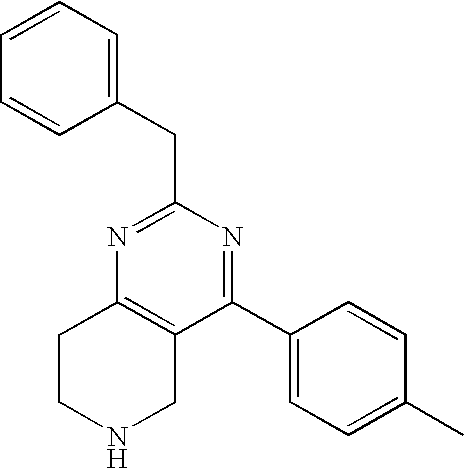
C00016

C00017

C00018

C00019
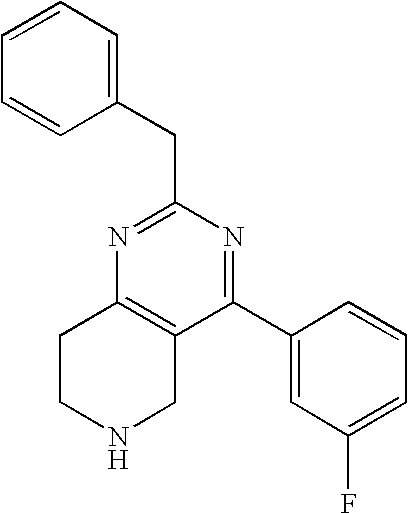
C00020

C00021

C00022

C00023

C00024

C00025

C00026

C00027

C00028

C00029
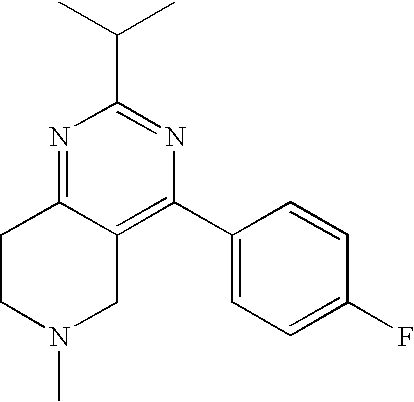
C00030

C00031

C00032

C00033

C00034

C00035

C00036
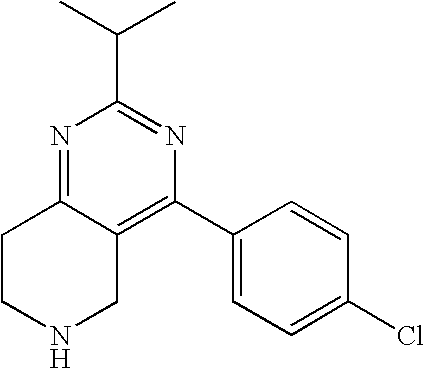
C00037

C00038

C00039

C00040

C00041

C00042

C00043

C00044

C00045

C00046

C00047
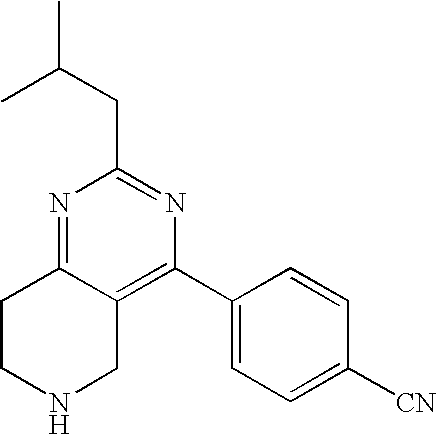
C00048

C00049

C00050

C00051

C00052

C00053

C00054
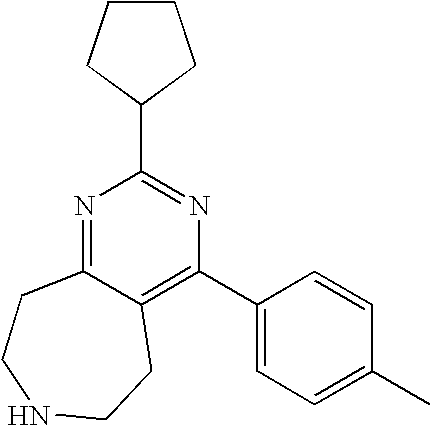
C00055

C00056

C00057

C00058

C00059

C00060

C00061

C00062

C00063

C00064
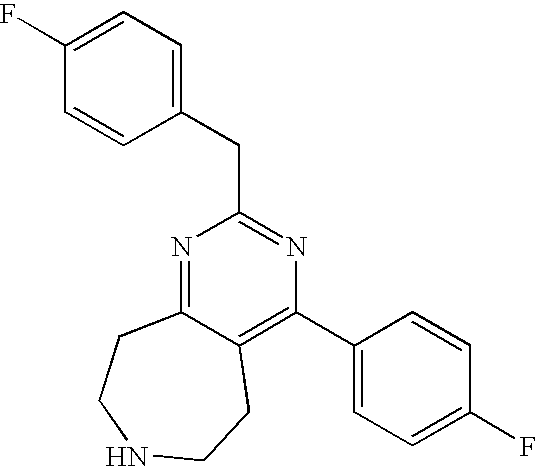
C00065

C00066
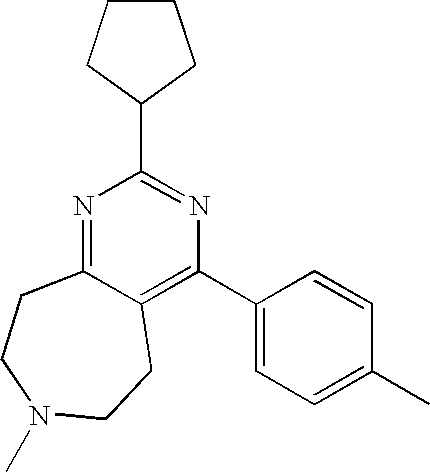
C00067

C00068

C00069

C00070

C00071

C00072
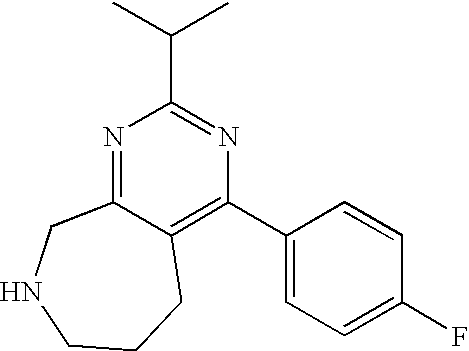
C00073
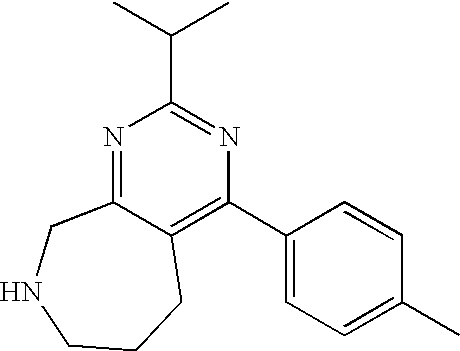
C00074

C00075

C00076

C00077

C00078

C00079
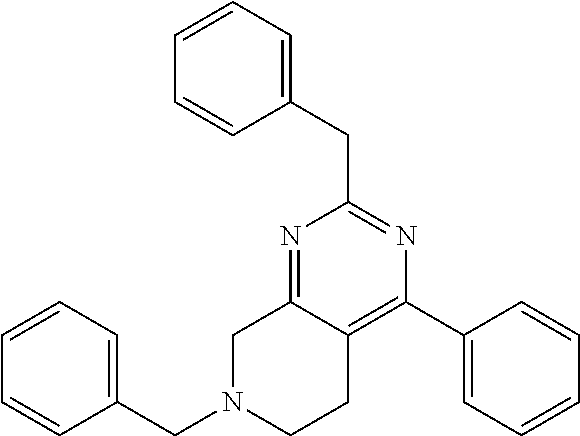
C00080

C00081

C00082

C00083

C00084

C00085

C00086

C00087

C00088

C00089

C00090

C00091

C00092

C00093

C00094

C00095

C00096
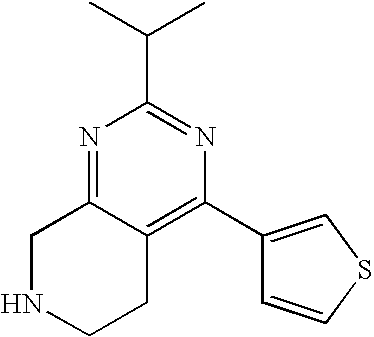
C00097

C00098

C00099

C00100

C00101

C00102
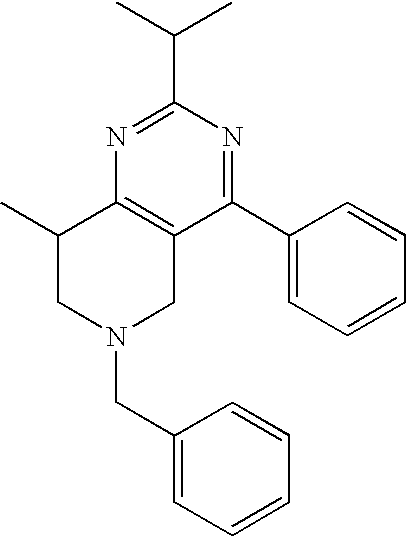
C00103

C00104
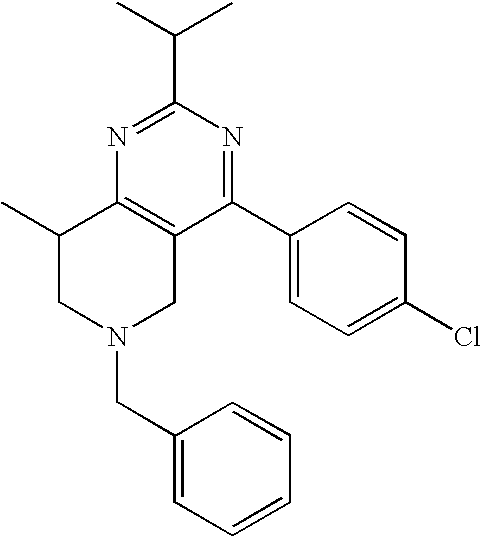
C00105

C00106

C00107

C00108

C00109

C00110

C00111

C00112
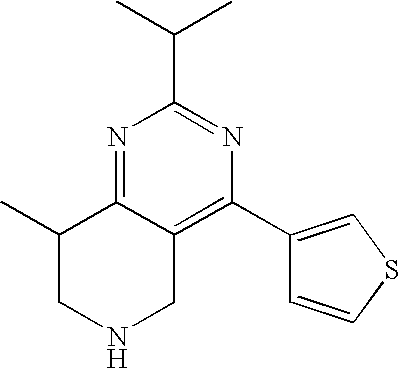
C00113

C00114

C00115

C00116

C00117

C00118

C00119

C00120

C00121

C00122
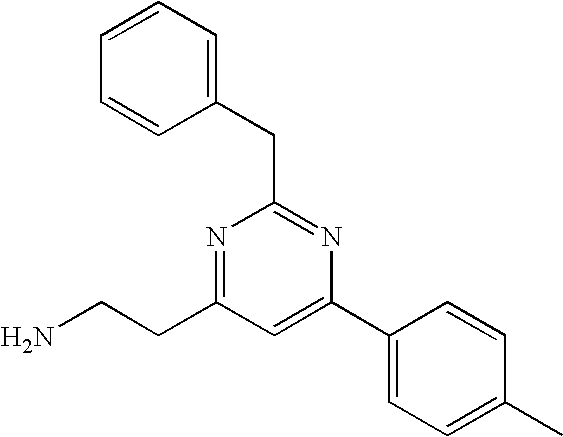
C00123

C00124

C00125

C00126

C00127
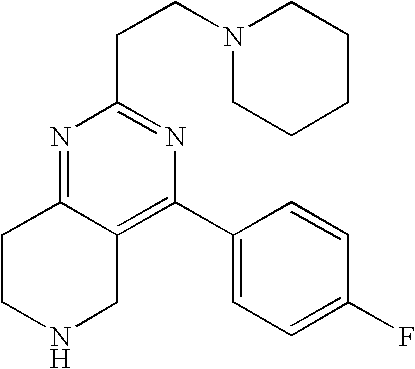
C00128

C00129

C00130

C00131

C00132
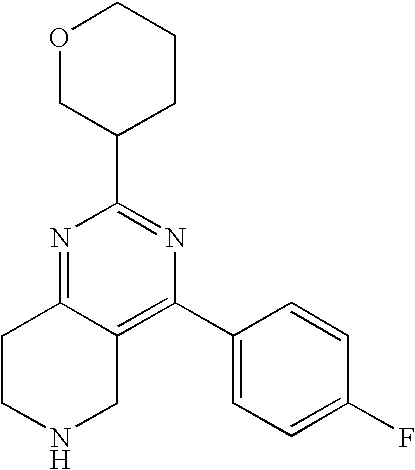
C00133

C00134
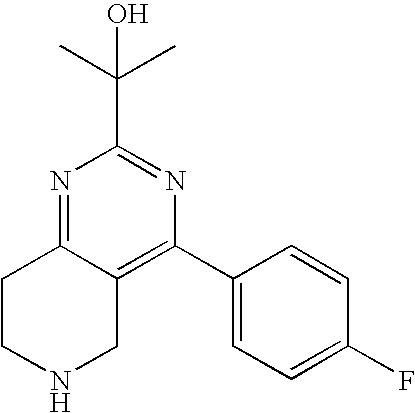
C00135
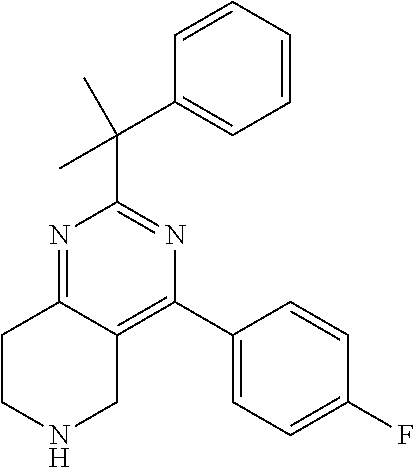
C00136

C00137

C00138
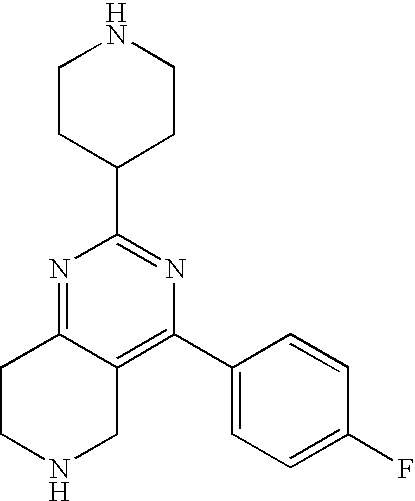
C00139
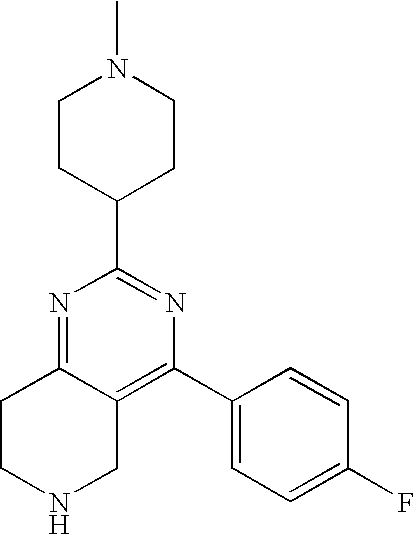
C00140

C00141

C00142

C00143

C00144

C00145

C00146

C00147

C00148

C00149
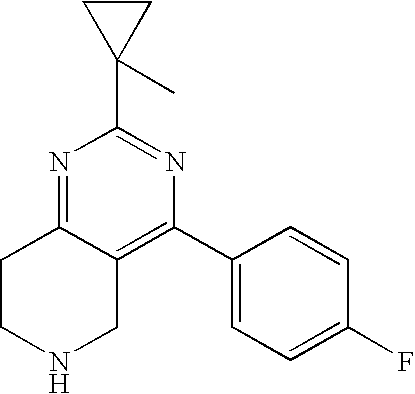
C00150

C00151

C00152

C00153

C00154
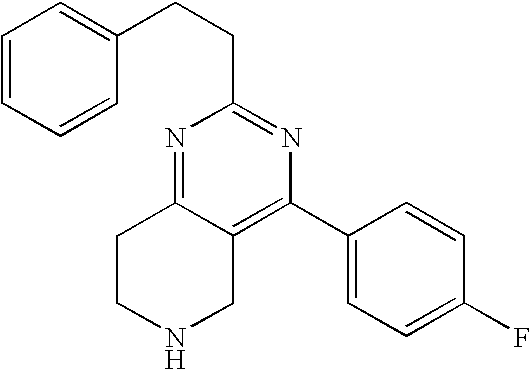
C00155
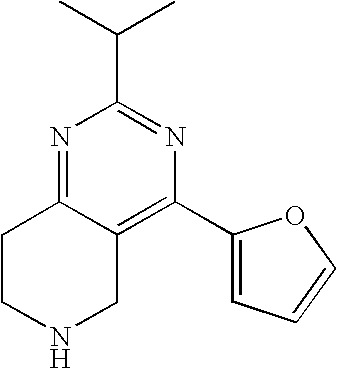
C00156

C00157

C00158

C00159

C00160

C00161
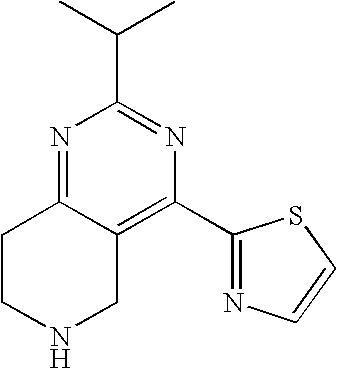
C00162

C00163
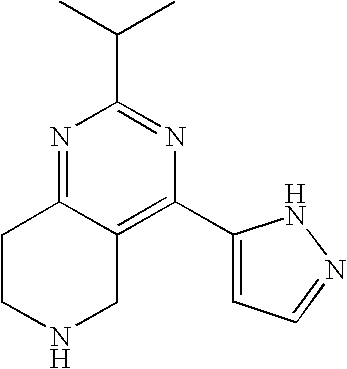
C00164

C00165
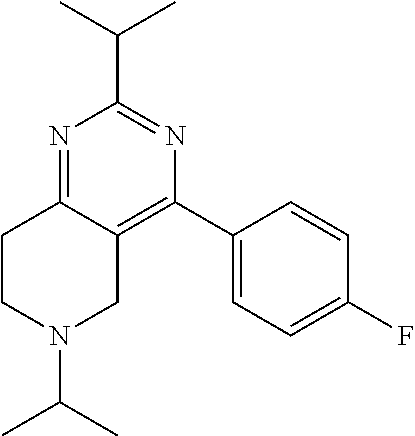
C00166

C00167
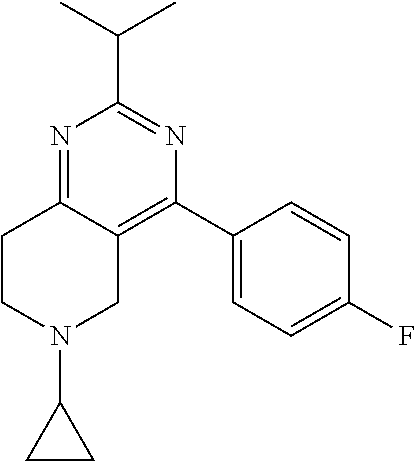
C00168

C00169

C00170

C00171

C00172

XML
uspto.report is an independent third-party trademark research tool that is not affiliated, endorsed, or sponsored by the United States Patent and Trademark Office (USPTO) or any other governmental organization. The information provided by uspto.report is based on publicly available data at the time of writing and is intended for informational purposes only.
While we strive to provide accurate and up-to-date information, we do not guarantee the accuracy, completeness, reliability, or suitability of the information displayed on this site. The use of this site is at your own risk. Any reliance you place on such information is therefore strictly at your own risk.
All official trademark data, including owner information, should be verified by visiting the official USPTO website at www.uspto.gov. This site is not intended to replace professional legal advice and should not be used as a substitute for consulting with a legal professional who is knowledgeable about trademark law.